



Pages 20-21




Preparing for the disease season ahead
Pages 30-31

FIRST DRIVE T3 FUNGICIDES
John Deere 340M put through its paces
Pages 62-66

Pages 12 and 26 EVENT PREVIEWS
What to expect from Cereals and Groundswell





Pages 20-21




Preparing for the disease season ahead
Pages 30-31

FIRST DRIVE T3 FUNGICIDES
John Deere 340M put through its paces
Pages 62-66

Pages 12 and 26 EVENT PREVIEWS
What to expect from Cereals and Groundswell

John Deere offers a full range of sprayers. They are designed to make accurate spraying effortless. Starting from manual valve operation to fully automated systems, they’re packed with time-saving features like PowrSpray™ Active Pause, AutoSetup, Air Purge and more.
Ask your dealer for a demonstration and see how easy it is to be precise.







Taking
Find
what is in store at this year’s

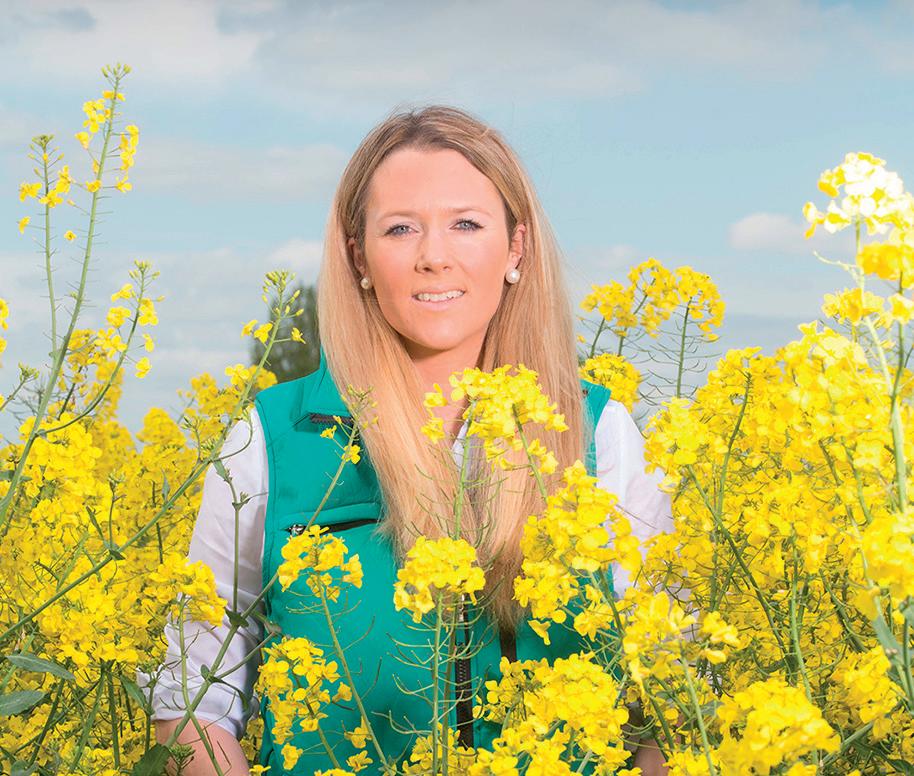
How can you get involved?
Hear what two of last year’s winners have been up to since the awards
in the fields throughout the


at how the disease is adapting to
What help is available and what varieties are sparking interest this year?
Find
Analyse the potential
from
breeder
what growers can do to prepare


Licencing changes means increased access to hemp
What
consider before committing to energy
How to incorporate grain maize into arable rotations
What is involved in switching from crops to forage?
Find
about the new release from Valtra
Arable Technical Specialist
Ash Ellwood, 07786 190 188 ashleigh.ellwood@agriconnect.com
Machinery Editor
Toby Whatley 07583 054 831 toby.whatley@arablefarming.com
Machinery and Farm Tech Specialist
James Huyton, 07787 242 185 james.huyton@agriconnect.com
Creative Services
Mike Begley, 01772 799 405 mike.begley@agriconnect.com
Katie Haydock, 01772 799 561 katie.haydock@agriconnect.com
Picture Editor
Marcello Garbagnoli 01772 799 445 marcelllo.garbagnoli@arablefarming.com
Key Accounts Manager
Jane Newton 01948 780 783 jane.newton@arablefarming.com
Key Accounts Manager
Mark Jackson 01322 449 624 mark.jackson@arablefarming.com
Account Manager
Chris Knowles 01772 799 550 chris.knowles@agriconnect.com
Sales Director
Mike Hartley 01772 799 532 mike.hartley@arablefarming.com
Advertising Production
Justine Sumner 01772 799 437 justine.sumner@arablefarming.com
Circulation and subscriptions 0330 333 0056 help@subscribe.farmers-guardian.com
© Agriconnect 2024
All rights reserved. No part of this publication may be reproduced or transmitted in any form or by any means, electronic or mechanical including photocopying, recording, or any information storage or retrieval system without the express prior written consent of the publisher. The contents of Arable Farming are subject to reproduction in information storage and retrieval systems. ISSN 0269-6797

www.croptecshow.com November 29-30, 2024
Since our last edition in March, the weather has finally seemed to pick up and the sun has made more appearances in the last few weeks than it has in the last nine months.
As fields of spring crops have been drilled into lighter land, and the steady hum of tractors and mowers fills the countryside, fieldwork is finally underway across the UK.
What the weather has left is a potentially challenging disease season, in a year where the increased rainfall could have amplified diseases such as septoria, creating a reliance on growers implementing robust fungicide programmes at the T2 and T3 spray timings (p30-31)
Alongside plant protection, careful nutrition is also vital this season, with reduced crop rooting depths due to waterlogging and the potential for leached nutrients. Growers are advised to pay close attention to micronutrient availability in soils and crops (p21-22) and facilitate nutritional programmes to safeguard crops that can carry an attractive premium, such as milling wheat (p22-23)
Creating diversity within arable rotations has many benefits to growers, so take a deep dive with us as we look at how the licences on commercial hemp have changed in the UK, enabling easier access to markets (p38-40)
We also speak to a Norfolk contractor to investigate the practicalities of growing crops for energy, either through renting fields to growers, or growing the crops yourself (p44-46). Plus, find out how you can benefit from adding forage crops into your arable rotation (p50-51)
Our machinery team took a first drive of the John Deere 340M self-propelled sprayer which, since its launch at last year’s Agritechnica, has been met with significant UK market demand (p62-66)
Learn what is happening within neighbouring fields in your area, as we chat with eight agronomists from dif-

ferent regions of the UK to determine how crops are looking, and look ahead into the season for any developing risk factors (p56-59).
The arable industry has an exciting event season on the horizon and this edition includes show previews from Cereals 2024 (p12-15), Groundswell Festival (p26-28), Farm24 (p32-33), the British Farming Awards (p42-43) and CropTec (p7), all set to bring knowledge sharing and networking opportunities to the forefront of the industry.
We hope you enjoy our second 2024 offering of Arable Farming magazine. If you would like to know about our team of experienced journalists, find out more about us on the inside back cover, or get in touch via the panel of contacts on the left.
We wish you a prosperous season ahead.
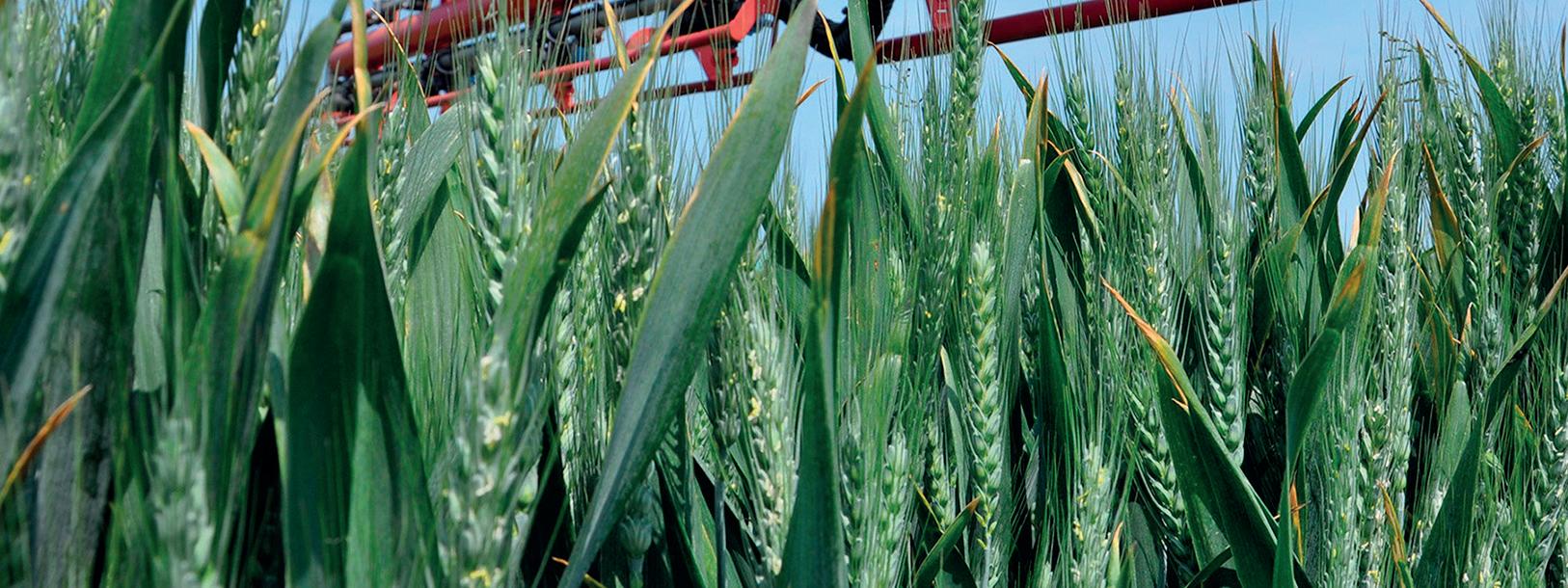


Perform





Limus ® , the only urease inhibitor with TWO proven actives.
Limus® keeps your nitrogen where it needs to be, increasing yield by 5% compared to urea/UAN*.
Backed by robust ADAS trials data, Limus® is also proven to deliver up to a 3% yield uplift over a urease inhibitor with one active**.
Find your closest supplier at agricentre.basf.co.uk/limus
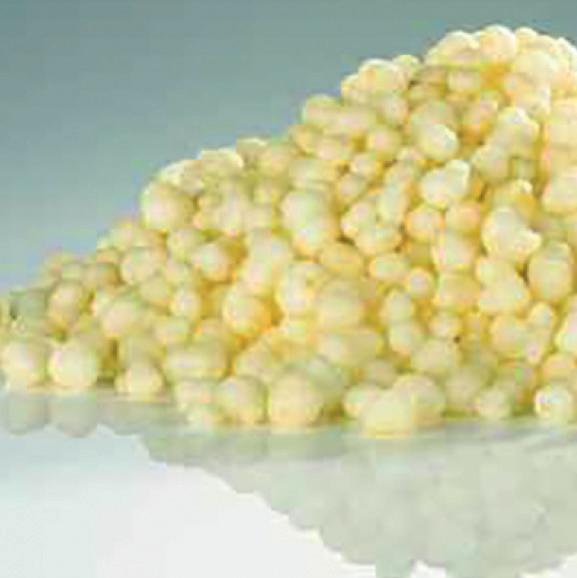
Global weather patterns are impacting grain markets, which could give a little comfort to British growers expecting their smallest harvest in years.
AHDB switched its short-term wheat market barometer dials to bullish, although the six-month dial remains neutral.
The current market is largely being made in Russia and the Black Sea, with a lack of rain in Russia through March and April, plus more attacks on Ukrainian Black Sea ports and tension in the Middle East also contributing to higher shipping costs.
AHDB senior market analyst Helen Plant said weather in other areas was having an impact.
“Following adverse weather and damage from leafhoppers, the Buenos Aries Grain Exchange cut its estimate of the Argentinian maize crop by three million tonnes to 46.5mt. Meanwhile, heavy rain and hot, dry conditions are causing concern for maize in different parts of Brazil,” she said.
There was some improvement in UK crop conditions, according to AHDB, based on data from Andersons and RSK ADAS.


At the end of April, 45% of the winter wheat crop was rated in good to excellent condition, which was up from 34% in March, but almost half the rate seen in the 2023 wheat crop at the same point. Winter barley
ratings were up from 38% to 56% in the month, but down from 90% the year before. Winter oilseed rape ratings were at 47% – up from 31% in March, but down from 66% the year before.

In March, AHDB estimated the wheat area for 2024 was down 15% on last year, with a 22% drop in winter barley and 29% increase in spring barley. The OSR area was estimated to be 28% lower.
JAgrochemical manufacturer
Sumitomo Chemical Agro Europe, best known for its biorational agricultural products and solutions,
aims to strengthen its market presence in both Europe and the UK with a signi cant pipeline of new products, according to Alberto

Ancora, general manager of the manufacturer.
Within the company’s immediate pipeline are several new conventional active ingredients currently in the UK approval system, including two new fungicides targeting diseases such as septoria, net blotch, ramularia and rusts. e firm is hopeful for approvals soon.
combining conventional chemistry with new biorational strategies as a solution for sustainable farming.
Green evolution







Mr Ancora said: “Beyond our conventional chemical portfolio, we have also made acquisitions and investments in biorational agriculture over the years, anticipating the current green evolution in European agriculture. We see signi cant potential in
“Although Sumitomo may be a new name to many UK farmers and agronomists, we have a rich history in agriculture going back 350 years. e company was born out of an idea of converting gases emi ed by copper mining into fertilisers, solving an environmental problem and providing a solution to farmers. at is a concrete example of our approach as a pioneer in sustainable agriculture.
“Sumitomo Chemical [UK] is working with NIAB and ADAS on trials to optimise the potential of these products and we hope to present our data on these new actives in the near future.”
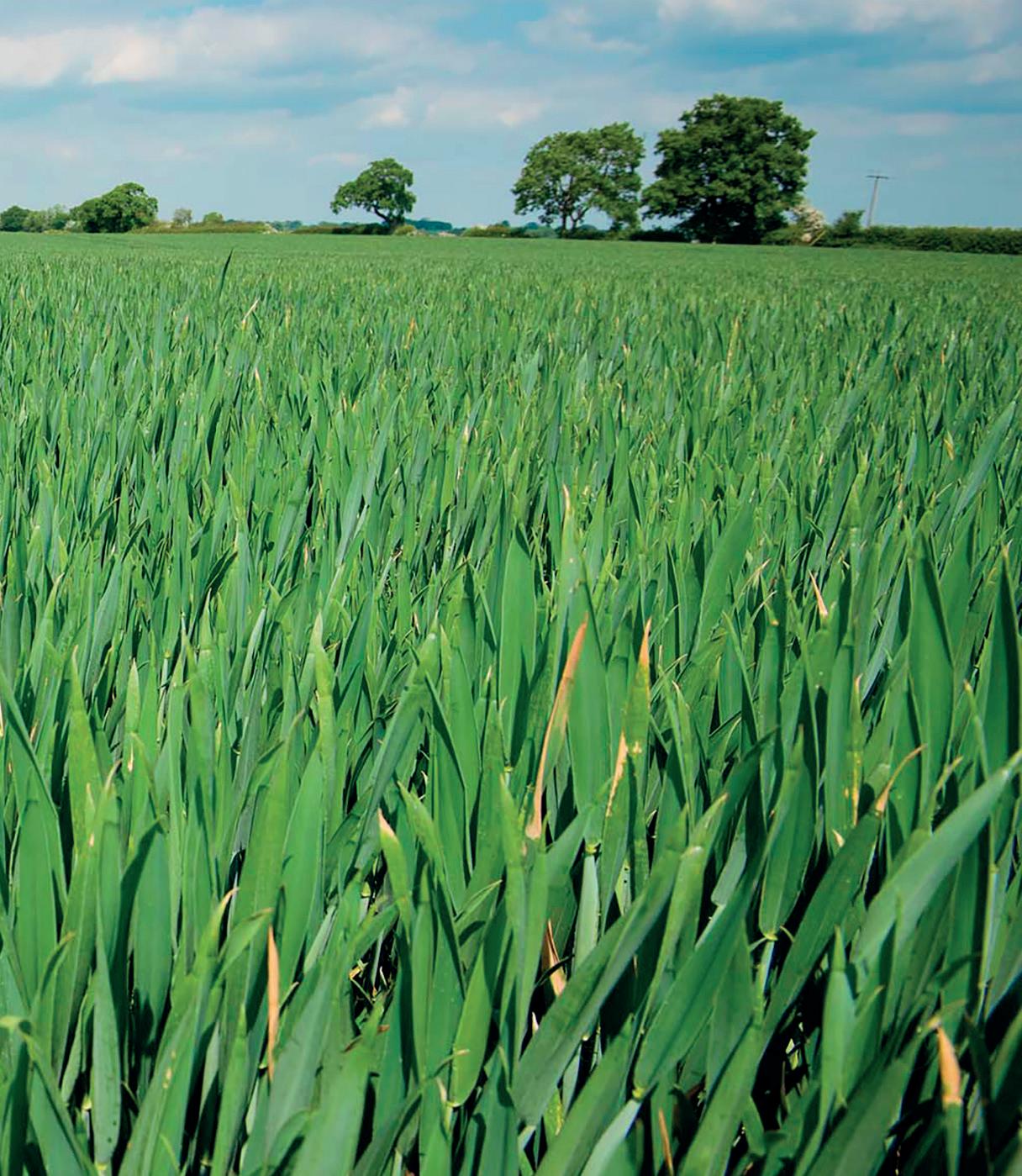

JThree new theatres focusing on innovation, knowledge and profit will provide visitors to CropTec with practical advice to futureproof their farms.
The new additions have been made as the show, which is at the forefront of showcasing technical knowledge, products, services and solutions to the UK’s most progressive growers and agronomists, enters its 12th year.
The sessions will explore a range of topics, including crop varieties, eco-friendly fertilisers, pesticide regulations, diversification, and the role of artificial intelligence and robotics in arable farming.
The changes have been made as part of a refreshed event, with the show, run by Arable Farming’s parent company AgriConnect, making significant enhancements to its conference programme, aligning with evolving agricultural practices and industry trends.
Verity Hyland, CropTec event director, says: “CropTec’s purpose is to help the farming community thrive. By bringing together companies, visitors and industry experts, CropTec shines a light on the arable industry’s key topics, concerns and opportunities.”






Carrier XT can either be delivered as a trailed or mounted version. The working width is 4.25, 5.25 or 6.25m. All Carrier XT models can be equipped with a range of both single and double packer options. At the end of April, 45% of the winter wheat crop was rated in good to excellent condition, which was up from 34% compared with the end of March. MORE ONLINE The CropTec Show takes place on November 27-28, 2024, at the NAEC Stoneleigh. Find out more at croptecshow.com
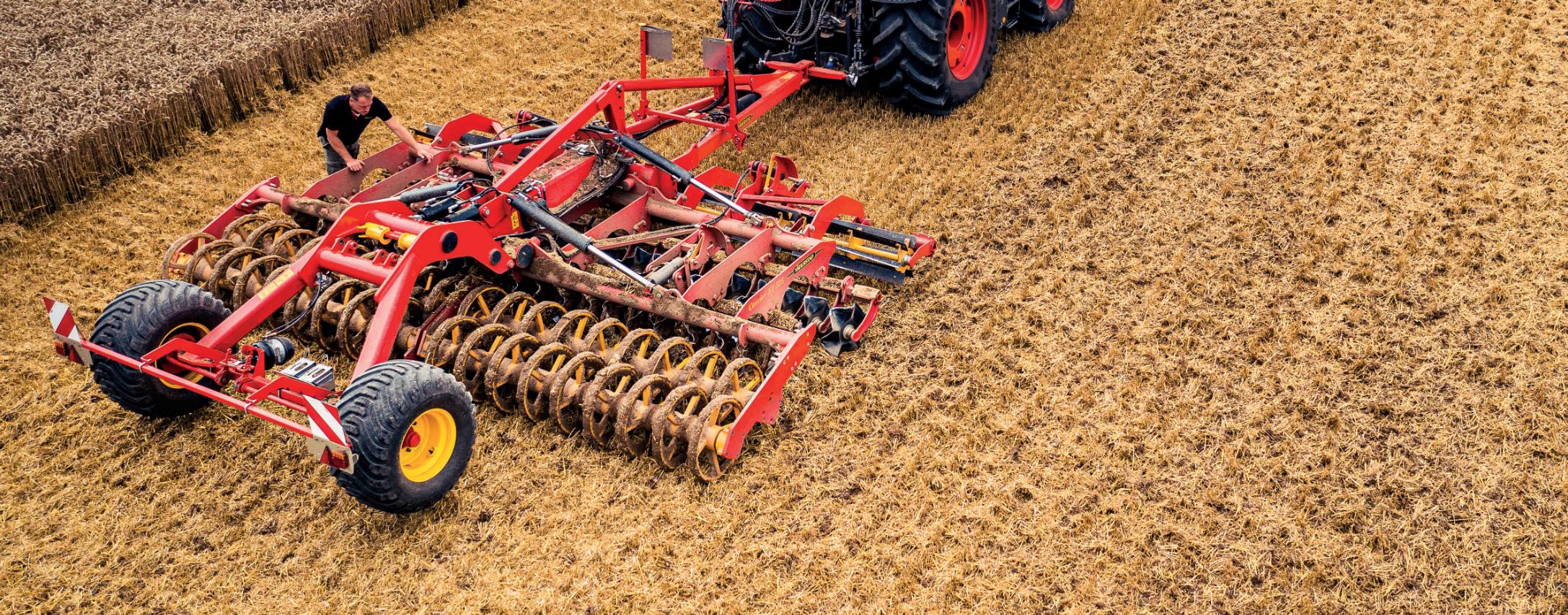
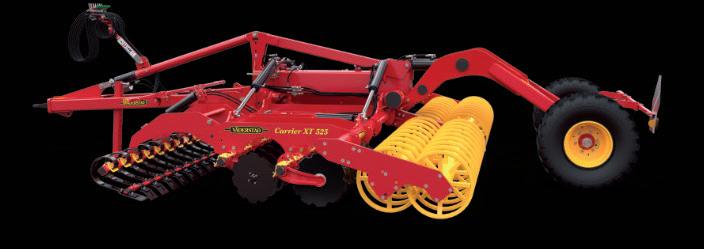
Obstacles to sustainable practices including biologicals uptake could be overcome by existing agri-tech, if the regulatory environment can keep up. Teresa Rush reports.
The adoption of biological crop protection is being delayed by a regulatory environment which has failed to keep abreast of innovations that would make biological products easier and more effective to use.
This is according to a new report
– Precision spraying and biologicals –driving collaboration – launched at the World Agri-Tech Innovation Summit, which took place in the United States on March 19-20.
The report, produced by Agri-TechE in collaboration with Cambridge Consultants, draws on input from agronomists, agrochemical suppliers, formulators and equipment and machinery developers.
It reveals that there is significant market pull for biologicals from consumers and retailers keen to reduce chemical residues in food products and the environment. There is also a market push from the regulators looking to reduce the use of synthetic chemicals.
The report outlines the obstacles to adoption that could be overcome by existing agri-tech, accelerating the uptake of these products.
Dr Belinda Clarke, director of Cambridge-based Agri-TechE, is a co-author of the report.
rDevelopment, delivery and use of biologicals at scale requires new partnerships across the value chain
rCollaboration and commercial adoption has to be driven by the imperative to make it simple for growers to adopt and use biologicals. Focusing on improving their ease of use at the point of application is critical, so that they can be incorporated into existing practices
rEquipment innovations beyond spot spraying will be a key enabler of the uptake of
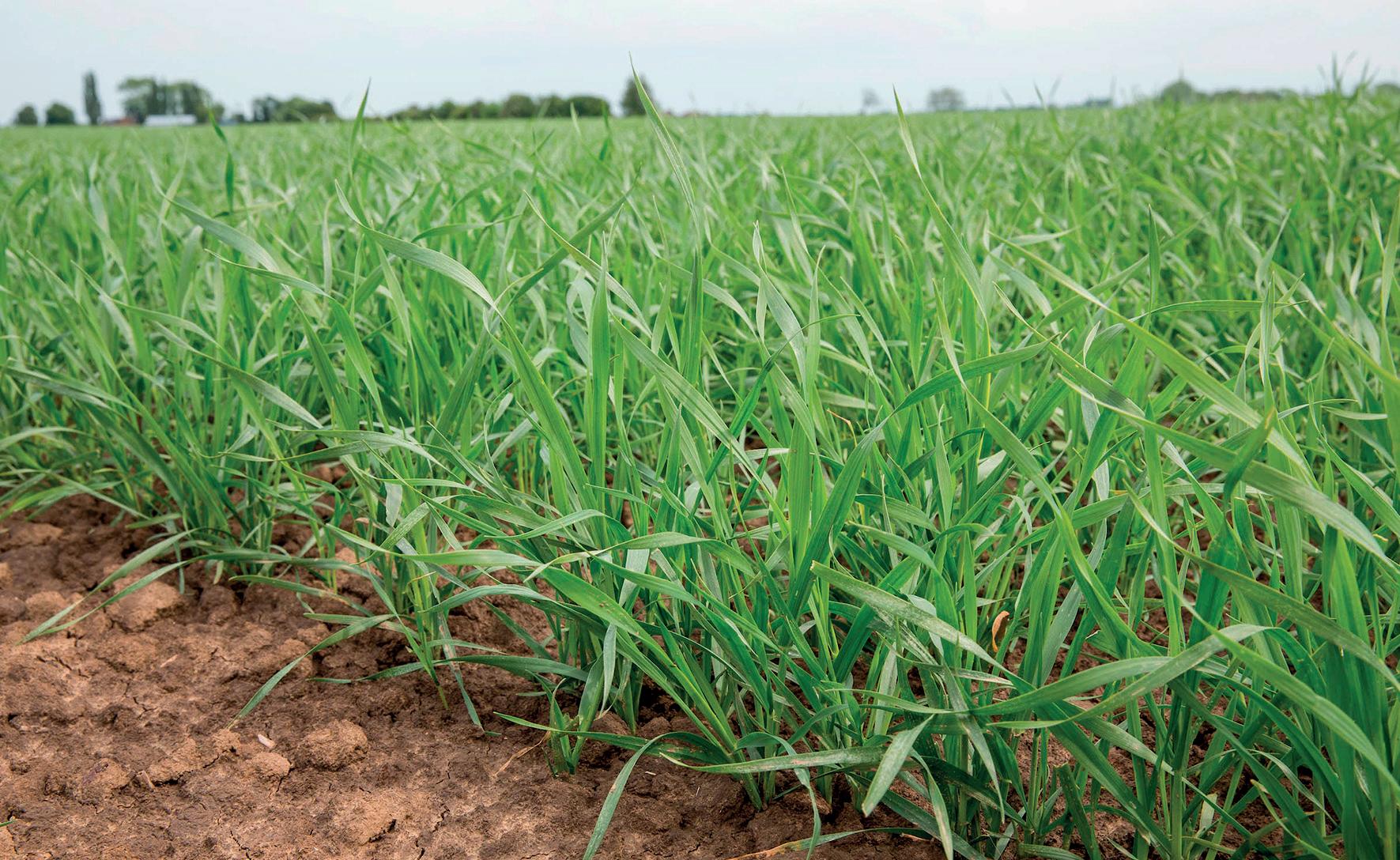
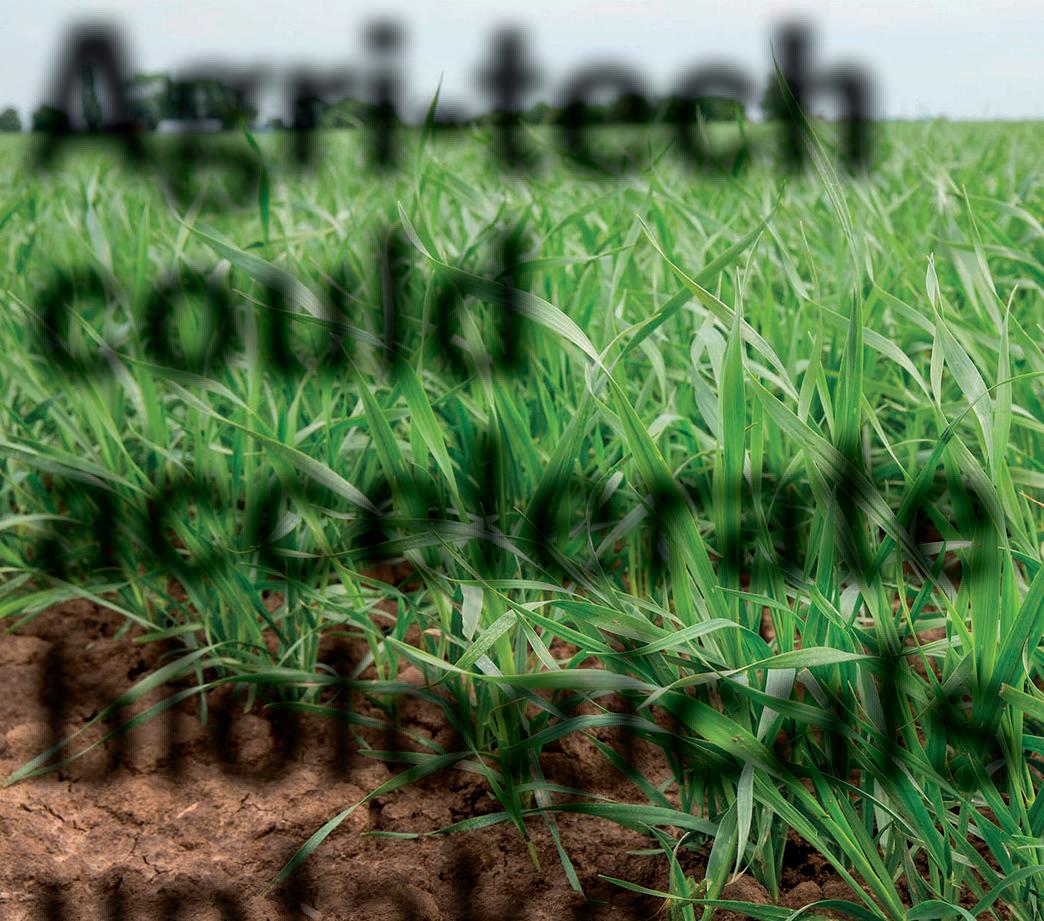

She says: “A desire for more sustainable practices in agriculture is driving interest in biological crop protection products, but the perception is that they are more costly to purchase, time-consuming to apply and less effective than the synthetic equivalents.
“Many of these reservations could be resolved by recent innovations in precision agriculture, which more easily enable ‘per row’ and ‘per plant’
biologicals. Regulation needs to reflect rapid technology advances for automation, and spot spraying benefits need to be realised. This will allow growers to apply local treatments in the volumes required for effective results and evolve away from broadcast, uniform applicationbased approaches
rEffective communication with, and education of, the whole supply chain is necessary to enable biologicals to become a core part of the toolkit of solutions available to growers
application cost-effectively within stringent spraying conditions. Unfortunately, the regulatory environment has not kept up with developments and is still centred around the ‘number of applications’ instead of the ‘total amount’ of active ingredient used across the field, and this is hindering developments.”
Advances in equipment – such as direct injection nozzles for sprayers – are reducing the cost of using biologicals, while robotics that enable automated application are increasing precision.
One of the examples in the report is the treatment of spider mites and russet mites in speciality crops. Autonomous UV-C equipment is used to apply predatory mites at night with more accuracy than humans, greatly increasing the

efficacy of the treatment. As navigation technologies improve, these developments are becoming more accessible.
More broadly, the use of synthetic biology was deemed by some respondents to be a game-changer for biological product development, but legislation around the use of GMOs, particularly in Europe, makes this route currently nonviable. Synthetic biology approaches could widen the choice of biological products available, reduce development time and open up the possibility for novel gene-based approaches too, says the report.
Dr Clarke is calling on the wider agricultural industry to work together to ensure that growers have access to innovative biological solutions, in order to help make agriculture more environmentally sustainable for the benefit of all.
“The industry urgently requires a more collaborative approach between formulators, equipment developers and regulators to fast-track these innovations,” she adds.
Dr Belinda Clarke

The full report is available at agri-tech-e. co.uk/precision-agri-tech-couldaccelerate-uptake-of-biologicals
























WITH SIGNUM such are one way to improve results.
Growers know that pea and bean yields are notoriously unpredictable. Proven fungicides, such as Signum



Widely recognised as the best product for chocolate spot maximises pulse yields by stopping botrytis and rust in their tracks, whilst also keeping leaves greener for longer. Shown to increase yields by 20% compared to untreated bean crops and achieve £30/ha more margin than a builds yield and margin. for more.

control, Signum more farm standard programme*, Signum agricentre.basf.co.uk/signum

of Signum
*Based on two winter bean trials by PGRO and OAT in 2020 comparing two applications at 0.5kg/ha with two applications of azoxystrobin and tebuconazole, mean untreated yield of 4.2t/ha, no chocolate spot present. Beans price based on £200/t.














Warmer, wetter winters associated with climate change could be behind the spread of a hitherto incidental disease of the UK sugar beet crop. Teresa Rush reports.
Cercospora leaf spot (CLS) was first identified in the UK in the 1930s, but until recently had not been seen as a serious threat to sugar beet.
However, since 2020 the incidence of cercospora has been rising, leading scientists to question whether strains of the disease that are specifically adapted to UK conditions are evolving.
While control of the disease can be achieved with fungicides, a British Beet Research organisation (BBRO) study has identified cercospora isolates that are resistant to fungicides and traditional sugar beet fungicide actives may not provide sufficient levels of control.
Variety ratings for cercospora are now included on the BBRO Recommended List of sugar beet varieties, providing an indication of varietal susceptibility.
To help growers and agronomists manage the increasing cercospora threat, BBRO has developed a risk forecasting model, based on disease and weather data collected in the United States and mainland Europe, where cercospora is more prevalent.
rIs the UK’s changing climate having an impact on cercospora leaf spot (CLS)?
rWhat temperature and moisture conditions are associated with CLS development in the UK?
rDo we have a UK-adapted strain or strains?

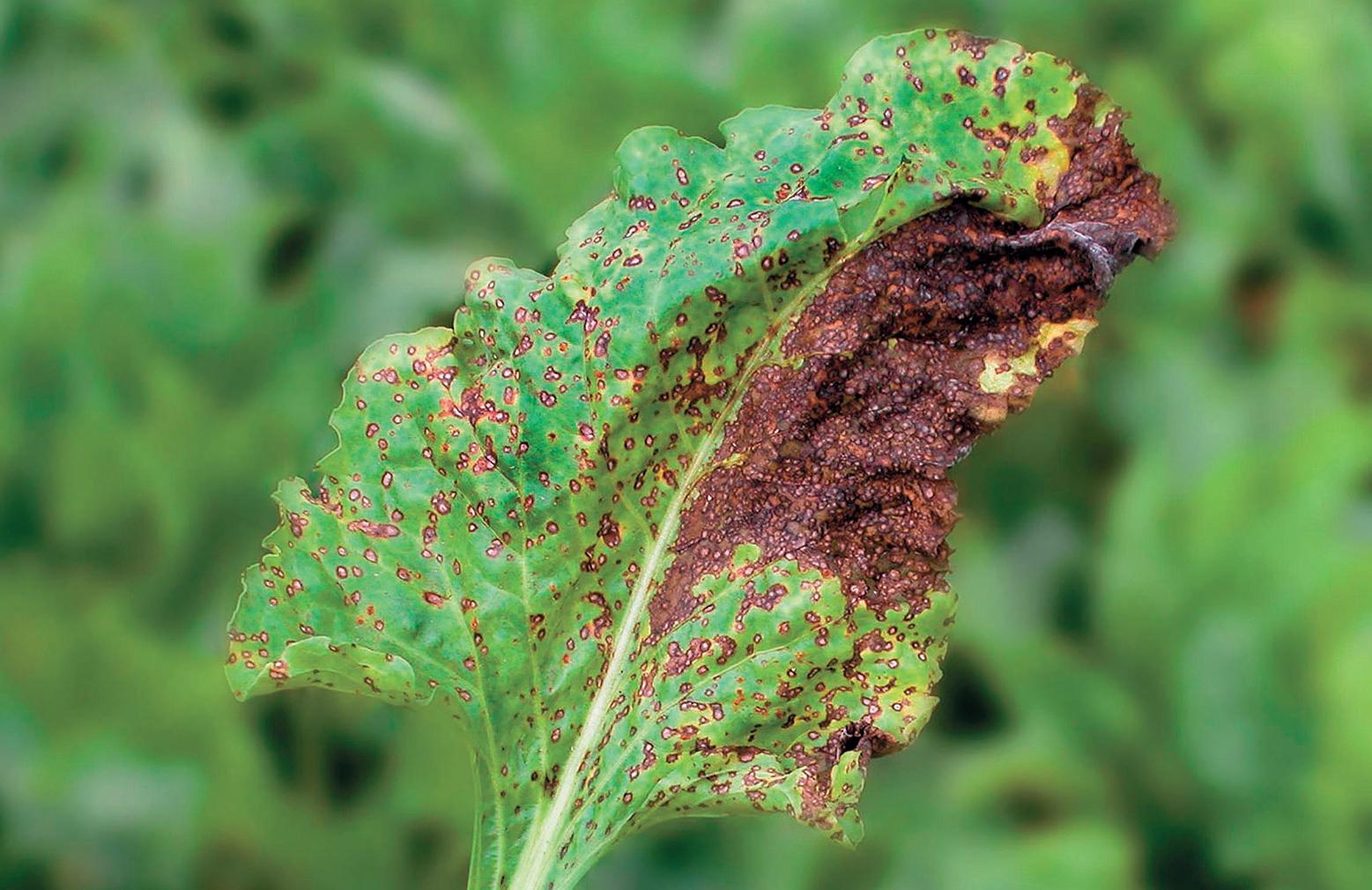
New BBRO work is looking at the cercospora strains present in sugar beet crops to understand whether these are more adapted to UK conditions.
Launched in 2021, the model generates daily infection values using temperature and humidity data to calculate the cercospora risk at postcode level and alert growers directly if there is a clear risk of disease development in their crops.
Growers can also access the risk forecast via the BBRO website and technical bulletins.
Most recently, more outbreaks of cercospora have been seen in sugar
rWhat and where is the primary source of infection in the UK?
rWhat is the level of fungicide resistance to CLS in the UK?
rHow do we manage future variety susceptibility and tolerance?
beet fields than the model has predicted, prompting BBRO scientists to question whether CLS is behaving differently in the UK’s maritime climate.
Climate change is leading to warmer, wetter springs in the UK, and these are conditions known to favour the disease, but growers are also reporting development of cercospora in their crops much later in the season, through into October and November, says BBRO’s head of science Prof Mark Stevens.
“This is something we really
need to keep an eye on, because the last thing growers want when they have invested so much money in their crop is to lose the crop canopy, lose sugar, lose frost protection. We really do need to take this disease seriously,” says Prof Stevens.
Some of the current research and development work underway at BBRO includes evaluating the potential for early detection of cercospora spores in sugar beet fields using the Canadian ‘Spornado’ spore collector.
This is a solar-powered, 3D
rUtilises regional weather station monitoring
rExisting Weatherquest network of weather stations
rTwo-day weather forecasting window
rForecasts local risk across 1,239 6x6km squares across the sugar beet growing region
rFor more information, visit: bbro.co.uk/on-farm/ cercospora-risk/
Actives: Priori Gold (azoxystrobin + difenoconazole); Revystar (fluxapyroxad + mefentrifluconazole); Caligula (fluopyram + prothioconazole)
printed vacuum system, which ‘hoovers’ the air for spores, collecting them on a fine mesh for lab analysis and subsequent culture in the BBRO growth rooms.
A network of weather stations, together with leaf sensors within crop canopies, is being used in conjunction with the Spornado to help define the weather conditions conducive to cercospora development.
Disease monitoring at 2023 BeetField sites in Norfolk, Suffolk and Lincolnshire last season revealed cercospora infection levels of 26%, 37% and 7% respectively.
Prof Stevens adds: “The key factor that seemed to be driving that [disease development] was leaf wetness and we believe those conditions are probably more
important than temperature and humidity.
“We will be assessing these data and the spores caught this year and adapting the model if required,” says Prof Stevens.
While cercospora risk forecasting will help inform decisions on fungicide use in beet crops, BBRO work has shown there are isolates of the fungus that are resistant to some fungicide modes of action.
Isolates collected in the Cambridge area, for example, showed resistance to strobilurins and some insensitivity to triazoles.
A fungicide trial (see panel) conducted by BBRO at the Lincolnshire BeetField site in 2023 highlighted the benefit of two- and
• Perfect fit guaranteed for any make or model
• Ultra-strong and durable cast base frame
• Maintains full ground clearance and steering angle
• Full engine power transferable with
• Choice of speeds with LH or RH rotation
• Integrated oil system for longer trouble-free
three-spray programmes for control of cercospora.
Prof Stevens adds that while the cercospora threat at the site in Lincolnshire was not as high as at the Norfolk and Suffolk sites, there were still disease reduction and crop biomass benefits over time from the application of the twoand three-spray programmes compared to the no-spray and one-spray treatments – even more so when rust coverage levels, which reached 60% by the end of October, were taken into consideration.
The three-spray fungicide programmes gave the highest canopy biomass scores at harvest on January 4, 2024, with the four three-spray programmes delivering scores of between 6 and 7 on a scale of 0-10 (0 = no cover, 10 = full
rCercospora appears to develop at lower temperatures than the current model assumes
rThe hours/leaf wetness threshold needs further investigation – influence of crop canopy
rIn-crop sensors, especially leaf wetness, appear to be more accurate in predicting later disease progression
canopy cover), compared with 3-5 for the two-spray programmes and around 3 for the no-spray and one-spray programmes.
“The variety was Wren and it has given an excellent yield at 104 tonnes/hectare adjusted without a fungicide. But one spray is giving you a lift of up to 10 adjusted tonnes. There’s no significant difference between a two- and a three-spray strategy, but what you’re seeing is [a yield benefit] of up to 20 adjusted tonnes from the use of those fungicides in this situation,” says Prof Stevens.
Cercospora is very much on BBRO’s radar, he adds.
“We continue to talk to colleagues right across the globe, but we do need to be appreciative of whether cercospora under UK conditions is different and whether leaf wetness rather than temperature and humidity is more important,” he says.













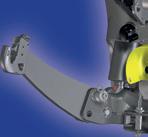


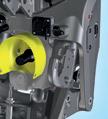






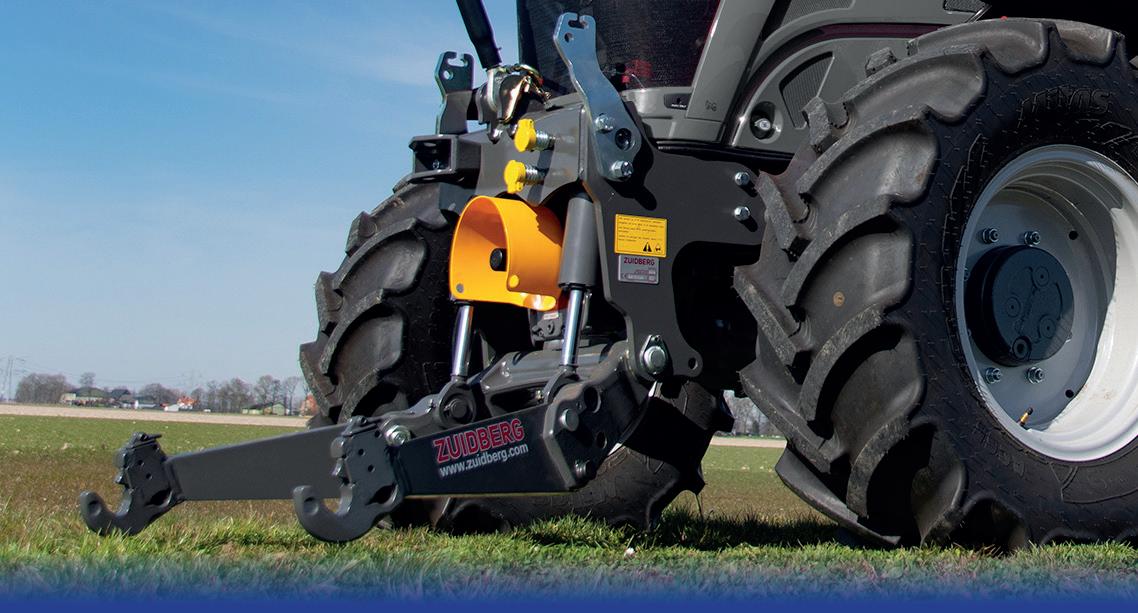





The 2024 Cereals Event is due to take place at a new site on the chalky soils of North Hertfordshire. Martin Rickatson discovers what some of the key arable exhibitors will be highlighting on their stands and plots.
Expected to attract over 20,000 visitors across June 11-12, Cereals 2024 will see a number of developments unveiled by key arable industry suppliers, from new varieties and crop protection products, to niche
crop types which could enable growers to broaden rotations.
Among the exhibits on the KWS stand will be previews of several new combinable crop varieties, including the firm’s first hybrid barley. The company says that although recent breeding efforts have targeted
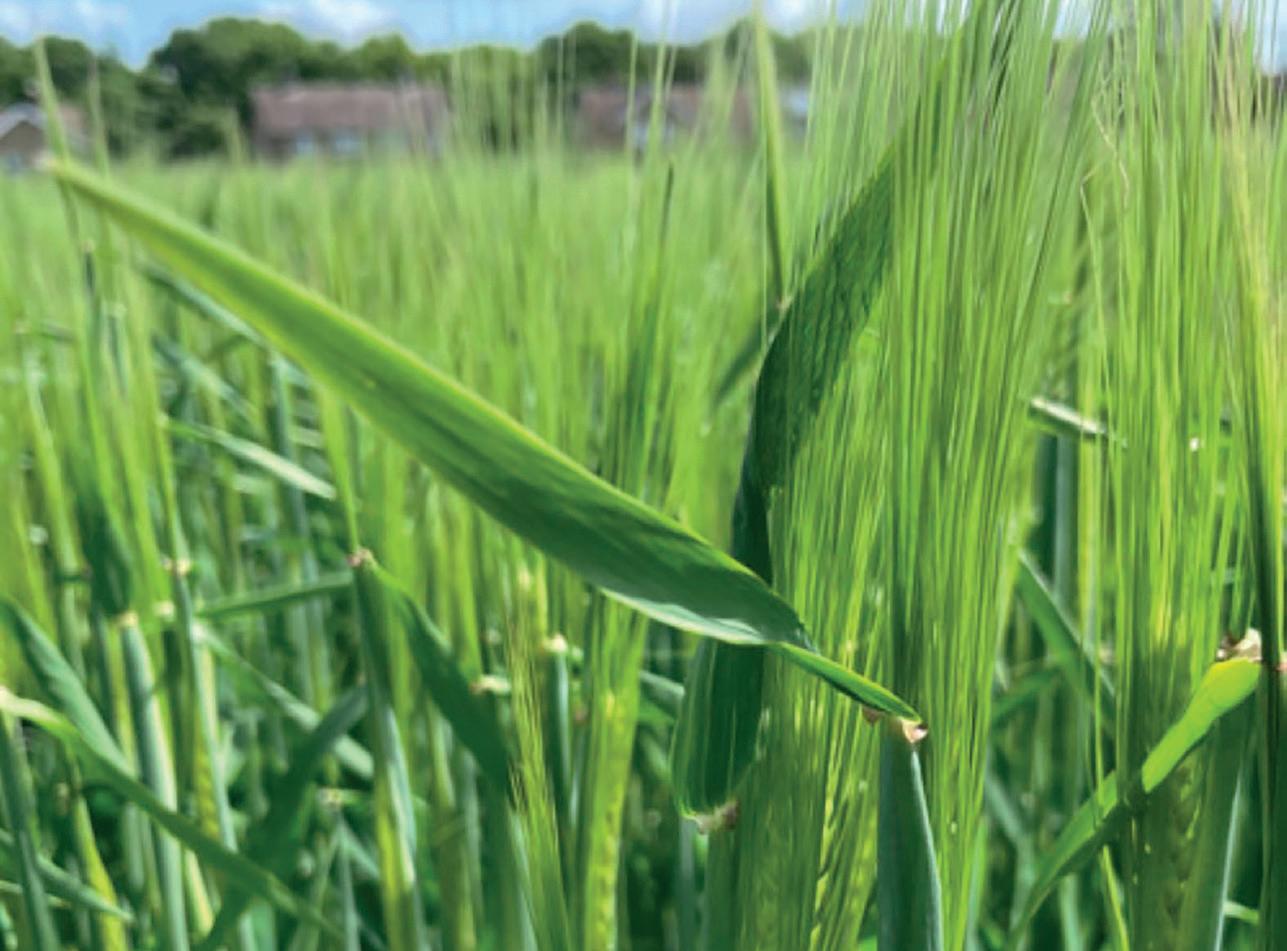
increased disease resistance, as well as physical resilience and lower input requirements, high yields and profit potential remain a core focus.
been the cleanest contender in National List trials, scoring 7 for septoria tritici, 8 for mildew and 9s for both yellow and brown rust.

The first hybrid winter barley from KWS is Inys, with a yield of 109% of controls and untreated yield of 93%.
Across all wheat groups, the firm has 10 new varieties on the AHDB candidate list for possible recommendation at the end of 2024, with plots of each on display. In addition, the company will show some new winter barleys on the current AHDB candidate list, plus a new spring barley.
KWS will also show its first hybrid winter barleys, which the firm says offer significant yield and resilience advantages. The first commercial launch is Inys, with a yield of 109% of controls and untreated yield of 93% attributed to its strong disease resistance profile.
The variety is also said to have high resistance to lodging and 10% lower brackling than the current market-leading variety.

Lee Bennett, of RAGT, says: “We already have a Group 4 hard variety, RGT Grouse, with similar characteristics, and given the positive quality feedback we’ve received so far, we are hoping this will represent the first human consumption wheat with no insecticide requirements, matching increasing farmer and buyer demand for such characteristics.
“The BYDV resistance comes from our Genserus [Genetic Security Virus] development programme and provides full-season protection against BYDV courtesy of the Bdv2 resistance gene, derived from a wild grass. A sector of our stand will be devoted to Genserus varieties alongside parent material without resistance.

There will also be two new oat additions currently on the AHDB candidate list. Beyond combinable crops, KWS also plans to showcase its new sugar beet CR+ genetics for improved cercospora control and potential fungicide savings.

RAGT’s stand will include the chance for visitors to learn about RGT Goldfinch, the company’s new Recommended List (RL) candidate winter wheat, which has bread-making potential and is both orange wheat blossom midge- and barley yellow dwarf virus (BYDV)-resistant.
The variety is believed to have
“None of the plots have received insecticide, giving visitors a chance to observe the difference first-hand. Beyond BYDV protection itself, benefits include no need to interrupt drilling to go spraying and zero effect on beneficials.”
LS Plant Breeding (LSPB) will be exhibiting for the first time under its new name, NPZ UK – a move the company says is a natural evolution that aligns its business here with its global parent company, German breeder NPZ (Norddeutsche Pflanzenzucht Hans-Georg Lembke).
The firm says the move’s timing
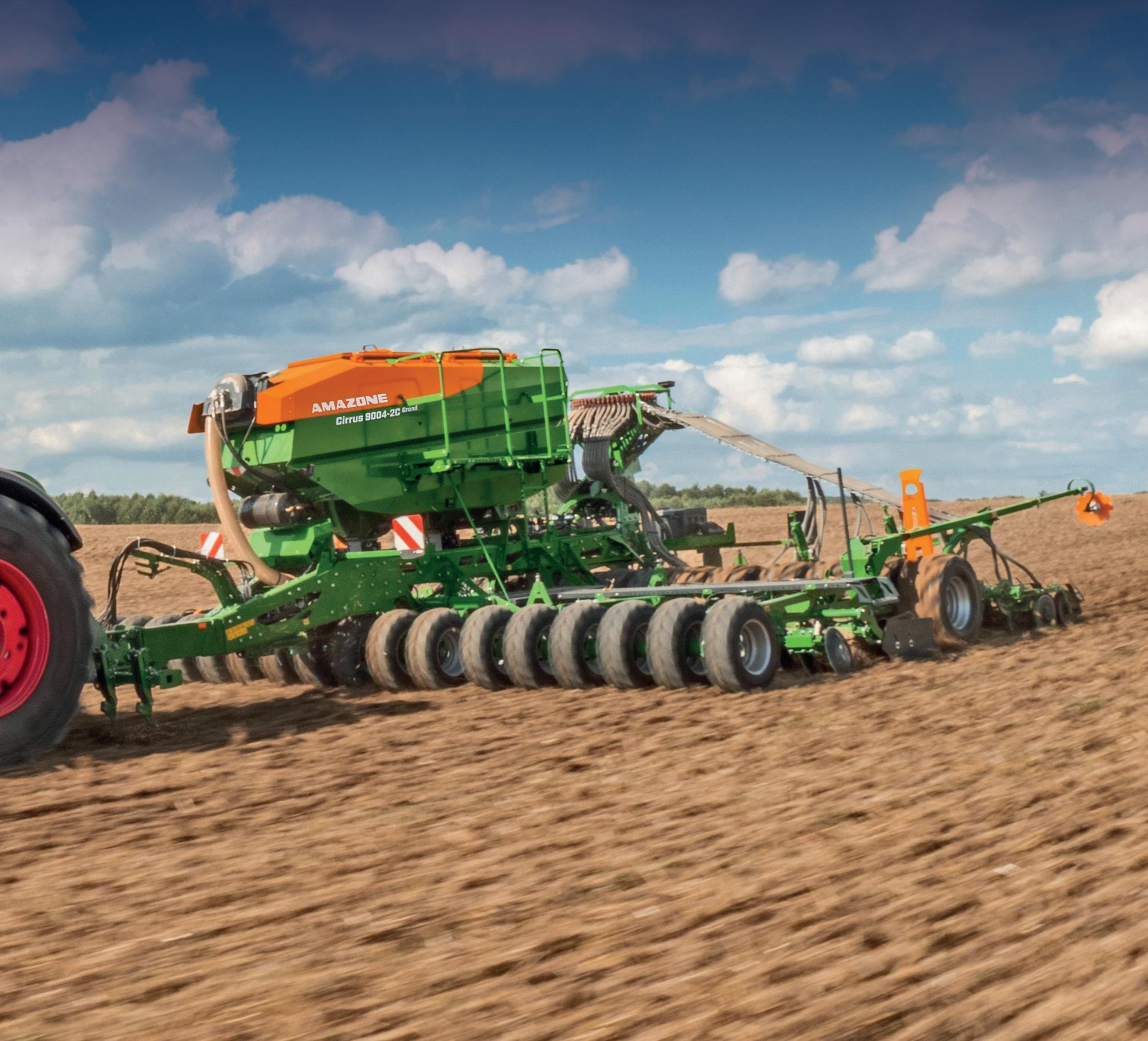


matches the progressive introduction of its next generation of hybrid oilseed rape varieties, the most recent of which is Maverick. To underline its new name and illustrate its breeding pipeline, NPZ UK has a 50% larger stand than that of LSPB at last year’s
and winter bean,
and winter combining pea and spring wheat varieties.
Bayer’s exhibit at Cereals 2024 will include a new hybrid OSR and a digital decision support tool that
enables remote monitoring of migration and distribution of key OSR pests.
Outperforming every other Dekalb hybrid bar one in both 2022 and

A cultivator drill so advanced it avoids any overlapping

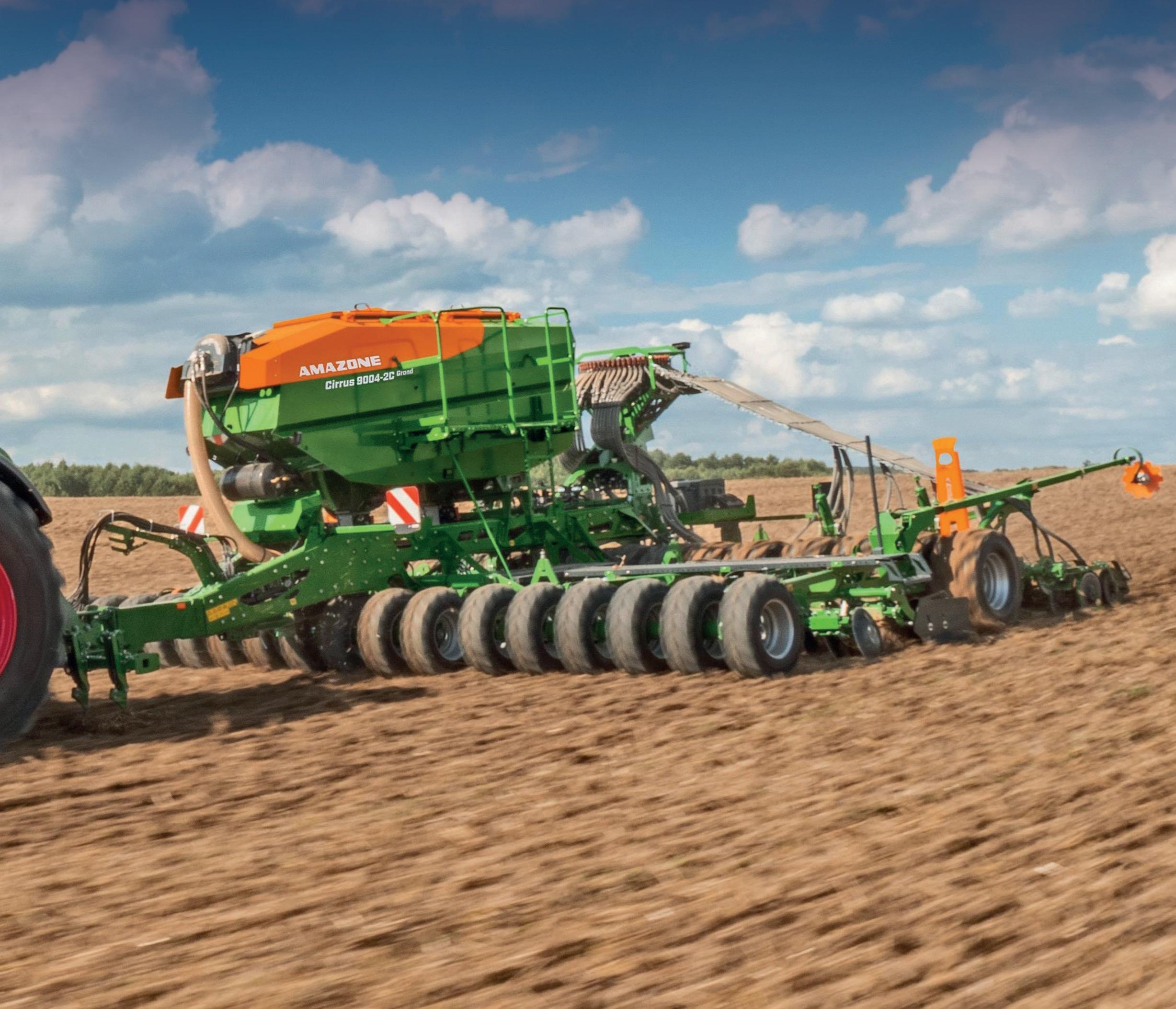
2023, the new hybrid, DK Excentric, topped gross output tables on the four most demanding sites across those years; a trait Bayer claims underlines its environmental stress tolerance. Average gross output in two years of NIAB and Scottish
The New Amazone Cirrus 9004-2C Grand features a newly developed distributor head with its unique combination of individual row shut-off and instant seed delivery.
Over its 9 m width, you can achieve spotaccurate shut-off, perfect for short work. The newly-developed V-Compensation gives uniform seed delivery at every coulter regardless of differing pipe lengths - so inch-perfect seed cut-off at every headland angle to reduce seed use and restrict any overlapping to below 1%.
Along with the option to place fertiliser with the seed and our unique strip-wise reconsolidation, it’s yet another clever idea that works for you.


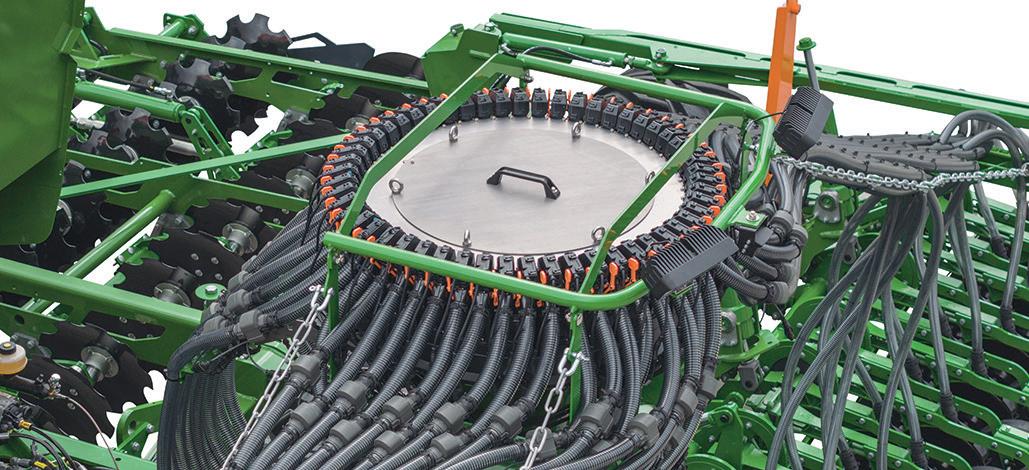

Agronomy trials was 5.11 tonnes per hectare, with average oil content of 45.4%. A growth habit that matches early planting requirements combines with flexibility to make it suited to sowing into September should soil, pest or weather conditions dictate, says Bayer.
Agronomic scores include an 8 for stem stiffness and 9 for lodging resistance, plus disease scores of 6 for light leaf spot and 7 for stem canker.
Marking five years since its formation from the merger of Dow AgroSciences, Pioneer and DuPont, Corteva Agriscience plans to display the efficacy of a number of new products. Among them is new clover-safe herbicide ProClova, launched last year onto the Irish market and currently going through the registration process in the UK.
Clover has an important potential role in matching growing interest in expanding and diversifying rotations plus reducing purchased fertiliser
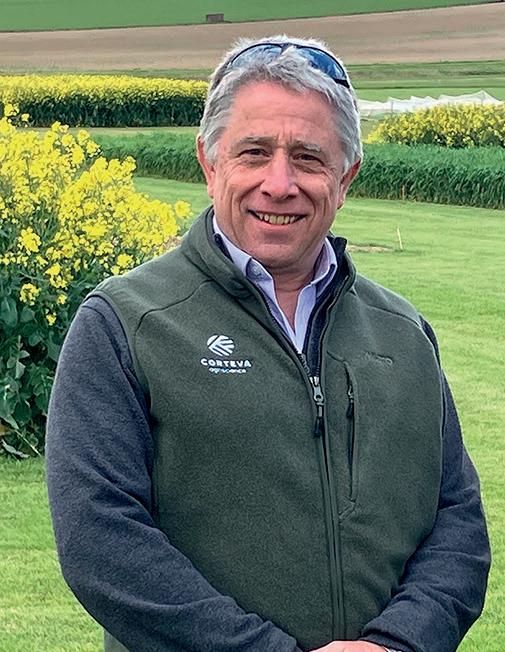
use, suggests the company. Initially developed for weed control in rice, the product’s active ingredient is florpyrauxifen-benzyl, branded as Rinskor.
ProClova is said to have a much wider weed spectrum than other clover-safe herbicides when treating newly-sown leys including docks, dandelions, fat hen and, in particular, provides more consistency and reliability of control than the current standard on established docks. It can also be used in established grass.
We’re keen to show Cereals visitors what BlueN and Kinsidro Grow+ can do
JOHN SELLARS
Of more immediate interest is likely to be the company’s new biologicals business development, stemming from its recent acquisitions of specialists Stoller and Symborg.
John Sellars, of Corteva, says: “We’ve had a good response to this business area to date, and are keen to show Cereals visitors the results of what BlueN, a biostimulant containing bacteria that enables plants to fix nitrogen from the air and make it available to the plant, and Kinsidro Grow+, a low-rate


humic substance that mitigates stress, can do.”
For those seeking ideas and advice on alternative cropping, Premium Crops will have plots of alternative autumn- and springsown break crops – including HOLL OSRs – and cereals, alongside cover crop displays.
In addition, the firm will have displays of chickpeas, a crop which is the subject of a two-year feasibility study led by NIAB, looking at the crop’s potential to reduce on-farm fertiliser use and the greenhouse gas emissions associated with fertiliser production. The UK currently imports 60,000t of chickpeas annually.
Elsoms returns to Cereals for the first time since 2019 with a focus on its new soft-milling/distilling winter wheat Bamford, the highest-yielding Group 3 on the RL, with a rate of 106 for treated yield.
Grant Hawkins, of Elsoms, says: “Many growers may be seeing Bamford for the first time, and we will have a team on-hand to help them find the best way of extracting its full potential should they choose to grow it next season.
“With a 7 rating for septoria, plus high yellow rust and mildew scores, we have found a lot of interest in its combination of strong yield potential and high disease resistance.”
New from Senova will be three candidate Group 4 hard feed wheats: Rufus, Riley and Memphis. These are said to be very high-yielding types that currently sit at the top of the RL candidate list.
Three candidate two-row winter barley varieties will also make their debut: Organa, a BYDV-tolerant two-row; Kitty, a high-yielding feed with resistance to both strain 1 and strain 2 of Barley yellow mosaic virus and the highest specific weight of any barley variety; and Nos Olena, said to possess good grain quality, all-round performance and standing ability.
Also present will be Valentine, a new husked winter oat candidate, and Nova, a new spring oat.









Selecting the right variety is the cornerstone of any arable rotation and we learn some top tips from farmer and agronomist Rob Beaumont, about what guidance is available and what varieties are sparking interest this year.
Selecting an appropriate variety suited to a rotation is one of the key decisions that a farmer or agronomist makes during the season.
It is also one of the core parts of a comprehensive integrated pest management plan (IPM).
A particular variety of crop could be selected for a number of reasons, such as end market, disease resistance or yield potential. Knowing which factors are most important to the grower and their farming systems will help to make the best decision.
For example, in the south west of England, choosing a variety with the highest resistance to septoria in wheat might be the most important factor.
Whichever trait is required, the best place to find out information on a select variety is by checking the AHDB Recommend List(RL) for cereals and oilseeds.
The RL was first published in 1944 by NIAB and covered just a few wheat varieties and their suitability for various milling markets. Today, now under the publication of AHDB, it covers seven different crops under a full Recommended List and four crops
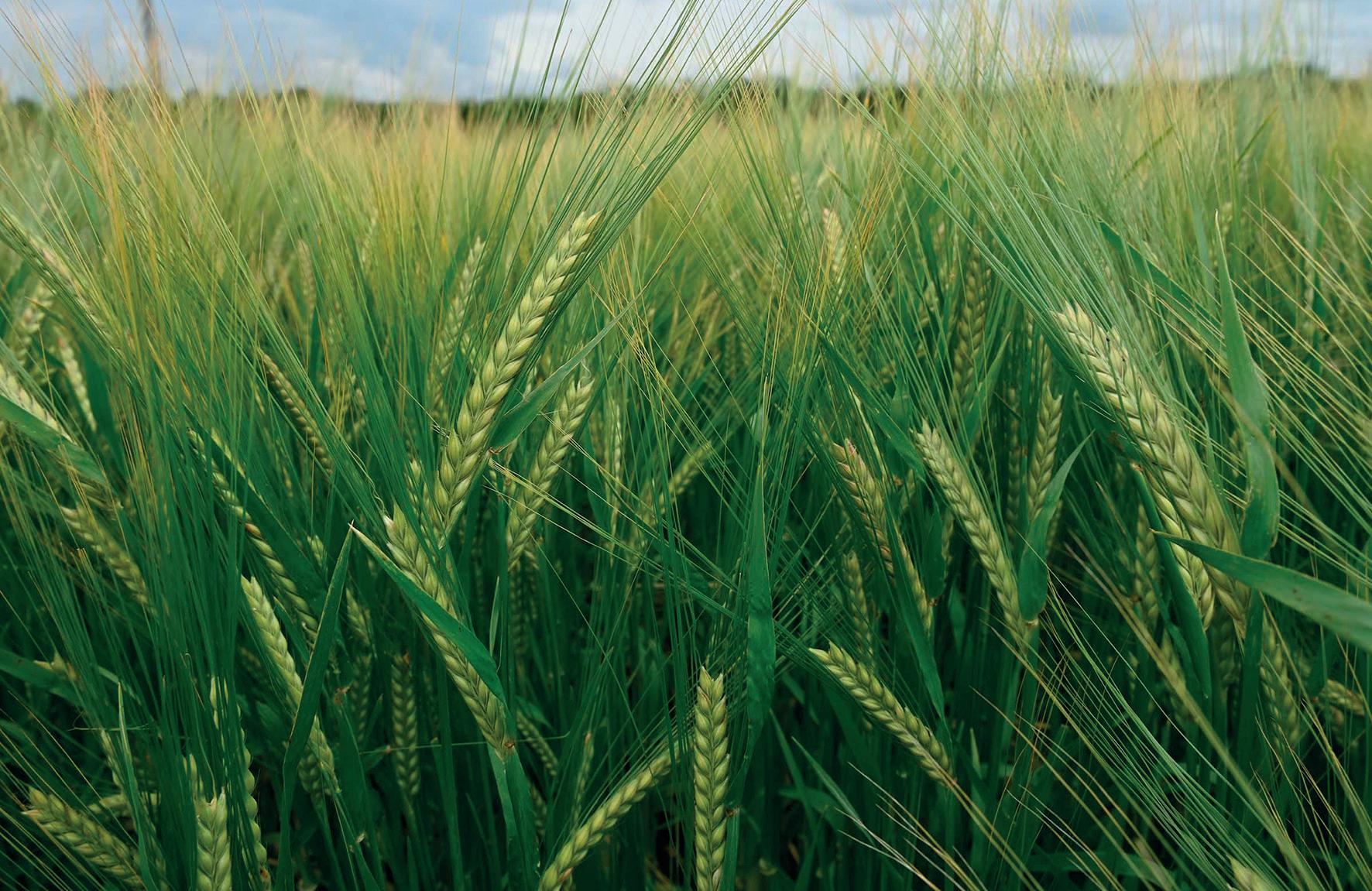
Varieties

under a separate Descriptive List (DL).
The RL is where varieties have been selected against a competitive benchmark of yield and agronomic targets, whereas the DLs do not.
A variety can lose its status on the RL if it falls below 2% of market share or slips below average for yield or agronomic performance.
The final decision on whether a variety is included or discarded from the list is made by three crop
JRob Beaumont farms on the Worcestershire/Herefordshire border with his parents and young family, growing combinable and forage crops on a mix of owned, tenanted, and contracted land. An agronomist for Edaphos, he also hosts AHDB Monitor Farm events.
committees, which include technical experts from across the industry and are chaired by either a farmer or agronomist.
The RL is a free publication that is available as either a hard copy, PDF, or downloadable as an app.
The app version of the RL is available on smartphones or tablets and includes a few interesting features which can make it more user-friendly than flipping backwards and forwards through a booklet or PDF.
Through the app, you can compare up to three varieties simultaneously which makes picking out differences a lot easier.
You can also see the parentage of each variety, which you cannot on paper or PDF copies. This feature is
particularly useful if the grower is wanting to construct a blend of varieties and needs to ensure maximum genetic diversity.
Finally, the RL app also contains an archive of predated RLs so you can go back and find information on varieties that are no longer included on the current list.
For example, winter wheat variety Theador is no longer included on the RL, but information on it may be of interest to some growers, due to its high disease resistance scores. The RL app is an easy to use tool and is a great way to quickly find and compare varieties to help growers in their variety decision-making processes.
Continues on page 18.
The best way to really get a view on how varieties are performing in a particular location or context, is to discuss it with your agronomist, or other growers, to see how they have got on.
Growers can also attend local open days throughout the summer and speak to some of
JFor Group 1 milling wheat growers, SY Cheer has been added to the Recommended List (RL).
SY Cheer is one of only five, Group 1 varieties on the RL. It has a score of 7 for yellow rust and 6 for septoria tritici, but only a 4 for eyespot.
However, the variety’s standout features are its high protein (13%) and high specific weight (79.5kg/hl).
For those growers looking for a high disease package, especially in higher rainfall areas, Group 2 variety Mayflower may fit the bill.
While not necessarily having the largest treated yield (97), it does have exceptional yellow rust and septoria resistance, 9 and 8.9 respectively.
JDespite the challenging economics of feed barley production there are some good varieties to choose from, especially for those growers who are looking for a second cereal and can utilise barley grain and straw for cattle enterprises.
New to the RL this year is two-row feed barley LG Capitol. Producing high UK yields (106) and a good specific weight (69.9kg/hl) with a mediumhigh resistance to lodging, this variety looks like an attractive proposition.
For those growers who want big barn fillers with lots of straw then the yield performance of the hybrid barley is hard to beat.
This variety could be particularly attractive to those growers looking to reduce fungicide inputs or add to a blend with other varieties to increase resilience.
Growers in the western parts of the UK will be familiar with the Group 4 varieties Champion and KWS Dawsum.
These have become popular varieties due to their hardy disease scores and good yields. However, one candidate variety to keep an eye on is LG Rebellion.
Initial results show it to be high yielding, high specific weight and early to mature with a good overall disease rating to match.
the experts running trials to gain a detailed perspective on a variety’s merits and weaknesses.
In short, there is a comprehensive supply of freely available, independent, reliable
information for growers to take advantage of.
Looking forward to 2024 there are some interesting varieties for growers to consider adding to their cropping plans.


Group 1 milling wheat SY Cheer has been added to the 2024 Recommended List and is one of only five Group 1 varieties.


Some growers find that hybrid varieties are competitive against grass-weeds as they can be planted slightly later than conventional two-row varieties.
Topping the hybrid list for yield is SY Thunderbolt at 107% over control. However, the hybrid barleys do tend to be taller and can be more prone to lodging issues if not carefully managed,
especially on high fertility sites.
Some growers may also find that hybrids are more competitive against grass-weeds as they can be planted slightly later than conventional two-row varieties which also aids with herbicide performance.
The limitation for growers looking to save seed is that hybrid barley cannot be sown for a second season.
Looking to oilseed rape variety choices, there are a few new possibilities on both the hybrid and conventional
JHybrids tend to be consistently higher yielding than the conventional varieties and offer interesting genetic traits such as resistance to pod shatter and turnip yellows virus.
LG Armada tops the RL this year at 107% yield in addition to offering these useful agronomic features.
Some speciality varieties, such as Crome and Crocodile, offer club resistance on susceptible sites.
For troublesome weeds such as charlock, Clearfield varieties offer the opportunity
Recommended Lists (RL).
For growers who have persevered with OSR, hybrid varieties are now the most numerous on the RL.
to apply imazamox herbicides without damaging the crop.
They also present an opportunity to skip a preemergence herbicide and wait until the crop is established before spending money.
However, as yet, no breeders have produced a variety that is immune to flea beetle, stem weevil, slugs, pigeons or errant pheasants.
So, when buying OSR seed it is worth considering purchasing it from a supplier which will offer you a payback insurance if the crop fails due to early pest pressure.
JNew to the RL this year and bred in the UK by independent plant breeder, Mike Pickford, who has been focusing on the UK conventional OSR market for more than half a century, Pi Pinnacle has topped the OSR conventional RL for gross output and treated yields.
Grainseed reports that its new conventional winter OSR variety has produced the highest gross output across all AHDB regions over the past
three years of official trials and is now fully recommended for the whole of the UK.
Pi Pinnacle has the joint highest conventional gross output yield (102%) with Frontier’s Tom, with the highest east/west region of 103%.
The variety has good disease resistance with a 7 for light leaf spot and attractive agronomic features including 8 for lodging resistance and 9 for stem stiffness.
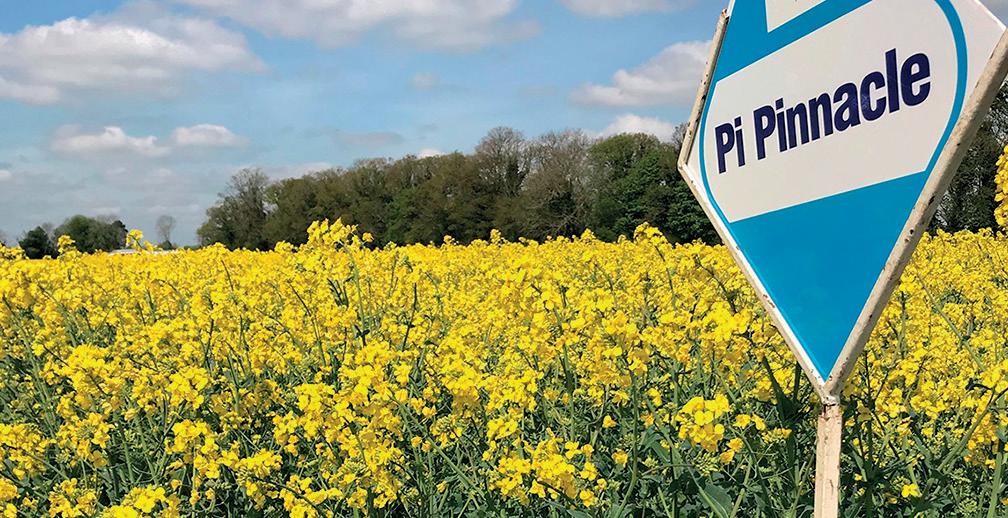
Pi Pinnacle has topped the RL for both gross output and treated yields.

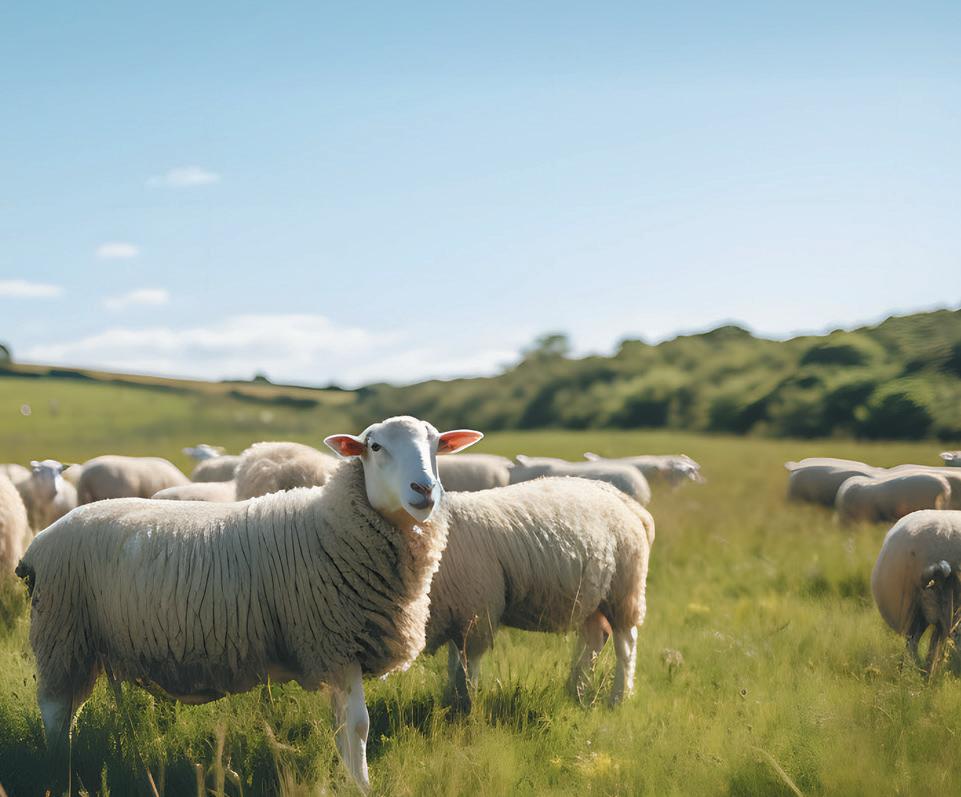





Micronutrients can provide agronomic benefits to both winter and spring cereal crops, provided they are readily available for the crop to access at the right timings. Ash Ellwood finds out more.
With the weather presenting a challenging start to the year for cereal crops due to wet, delayed drilling and consequential poor rooting, many crops could largely benefit from the addition of micronutrients into their spray programme, particularly later drilled spring crops.
A key driver of foliar multi-nutrient applications in winter wheat would be to keep the crop greener for longer.
Chris Harrold, product

Later drilled spring crops can benefit from foliar nutrients such as copper, zinc and magnesium applied around GS31, says Chris Harrold.
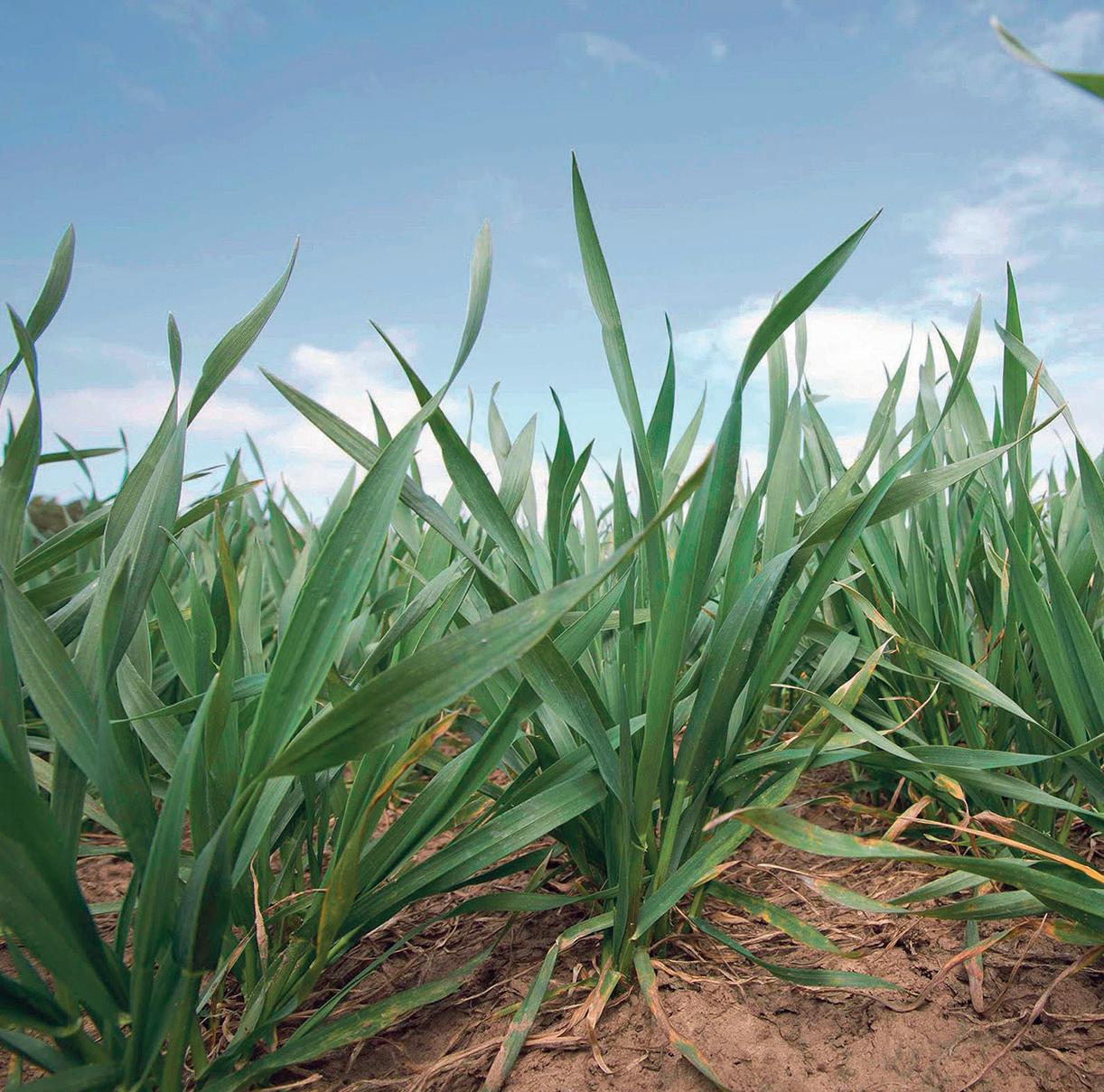
manager at Yara, says: “Many growers will be going through their winter barley and winter wheat crops in the coming weeks with the T2 fungicide and this often presents an opportunity to include some micronutrients into the mix.”
Magnesium is an important component of chlorophyll essential to the photosynthetic function. A foliar application of magnesium in late May or early June can provide benefits to winter cereals.
“I have had many conversations with both farmers and agronomists this year who are finding out from their tissue analysis results that magnesium is lower than expected.
“This could be down to a combination of factors like the excess rainfall which could have restricted nutrient availability and washed mobile nutrients through the soil profile,” he says.
Nutrient availability could also have been compromised due to poor rooting, he adds.
“Magnesium deficiencies tend to show up on the older leaves which suggests that the crop has not got enough magnesium and the
JIn winter wheat, T3 provides a secondary opportunity to provide highvalue crops such as milling wheat, with additional nutrients following the same magnesium, potassium, and phosphorus guidance.
“As an agronomist, I have seen growers applying magnesium to milling wheats at both timings but the requirement for phosphate and potassium would be dictated by a tissue analysis prior to applications,” says Mr Harrold.
nutrient is moving into the new growth making the older leaves look deficient. But, if you start to see deficiencies like this, it often means it is too late and the yield impact has already happened.”
To understand the levels of nutrients the crop has access to, Mr Harrold always recommends growers to complete a tissue testing analysis seven-10 days prior to any nutrient applications.
“At least then, the growers will
have a real snapshot of what is happening in the crop, and they can adjust dosages and nutrient inclusion accordingly,” he says.
Foliar potassium and phosphate are also important nutrients to be considered at the T2 timing, as they are vital for the energy transfer of nutrients into the grain.
“Potassium is also particularly important for water regulation and cell turgor within the crop, so if we do potentially go into a drought – like we have seen in other years – making sure crops are efficiently supplied with potassium is important,” adds Mr Harrold.
Spring cereals can often present a more challenging picture due to a shorter growing season and the increased speed at which cereals go through each growth stage.
For later drilled crops such as spring barley, spring wheat, and spring oats, Mr Harrold recommends growers check that they have not missed out on any manganese deficiencies early on.
“Do not delay getting manganese onto a spring crop,

most growers and agronomists will understand where their hotspot deficiencies are, so it is
JSpring barley trials investigating the effects of a multi-nutrient product, YaraVita Gramitrel, at the T1 timing, highlighted the crop’s ability to optimise grain set, build natural defences and maintain leaf area, according to Yara.
Continuing the trial over three years showed that
important to make sure these are treated early on,” he adds.
If the green leaf area has been lost due to manganese deficiencies, it cannot be restored once it has gone.
“This is important as we know, particularly with spring barley, that the number of tillers is important as they cannot compensate for their loss.”
At around growth stage 31 or stem extension, Mr Harrold says nutrients such as copper, zinc,
timely foliar micronutrient applications provided a consistent spring barley yield increase when comparing treated with untreated yields.
In 2021, 2022, and 2023 barley crops, treated at a T1 timing with two litres/
and magnesium are beneficial applications, but selecting a broad multi-nutrient product at the T1 application is advantageous, to make sure the crop is not lacking in any of those nutrients.
“Copper is important for lignification and helps fertilisation in the crop to prevent blind grains, which is something we sometimes see in barley and zinc is also important for grain number and size.
“When it comes to plant
hectare of Gamitrel, provided a three-yearly average increase of +0.18 tonnes/ha (2021 +0.2t/ha, 2022 +0.15t/ha and 2023 +0.21t/ha).
Mr Harold says: “This yield increase at current grain commodity grain values would give a 2.5:1 return on the cost of the investment.”
Do not delay getting manganese onto a spring crop
CHRIS HARROLD
structure, copper also promotes auxin levels which helps to optimise the canopy development,” says Mr Harrold.

A seeder that applies numerous products and suits a wide variety of implements.
25 years experience
Applies all small seeds, Avadex granules, cover crops and slug pellets
Powerful hydraulic fan
Garmin GPS control system
200l or 400l hopper
Configure the spec to suit your needs
12m/15m boom available
Dual hopper option
Excellent service and spares support

















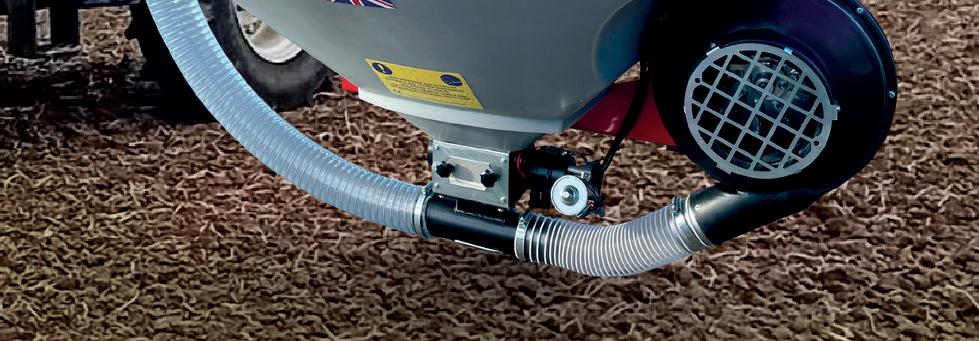




With strong milling wheat premiums available this season, Ash Ellwood gathers some top tips for growers to achieve premium grain quality.
The washout winter and spring could mean that this year’s milling wheat crops could face a challenge in meeting protein specifications – depleted soil nitrogen (N) due to leaching, and compromised N uptake due to poor rooting – requiring carefully tailored agronomy.
ProCam agronomist Justin Smith says: “Where soil testing has been carried out, results indicate that soil N levels have been 20-30kg per hectare below their usual levels in some places after all the rain.
“On top of that, root growth

has been seriously compromised by waterlogging, because roots have not had to reach down far to find moisture. So not only is there less soil N available, but affected plants will also have greater difficulty accessing what nutrients are actually there.”
Alongside nutritional applications at the T2 timing, T3 can provide another opportunity for growers to provide nutrients for milling wheat, according to Mike Thornton, head of crop production at ProCam.
Due to compromised rooting structures and depths, growers
could look towards alternative forms of N for milling wheat to ensure the applications made are utilised by the crop rather than left unobtainable by the roots
He says: “If we have not got the root structures to take up bagged nitrogen, growers could look towards liquid, foliar nitrogen and bacterial applications to boost growth at the T3 timing.”
Mr Smith says these risks will need factoring into mid- and late-season milling wheat nutrition, especially if the summer turns dry. However, there are multiple foliar-applied

Due

treatments now available to either replace or supplement soil-applied granular N. He says: “These products can range from endophyte bacteria, such as Azotic Techology’s product, Encera, which fixes atmospheric N inside the plant. To Unium Bioscience’s Twoxo Pro, which stimulates the plant to improve N uptake.
“For the traditional flag leaf [T2] and ear [T3] foliar N spray timings, Pro+ N-Viron PCA has the advantage that it not only provides N directly into the leaf in an efficient urea form, but it also contains pidolic acid, which helps plants use N more efficiently. Which treatments are applied and when needs to be based on individual field needs. If ever there was a year for tailored agronomy, this is it,” adds Mr Smith.
If the weather turns dry and soils dry during May and June, Mr Smith says this could further limit soil N uptake and impact on grain protein, making these types of treatments, which do not rely on root uptake of N, a particularly useful option.
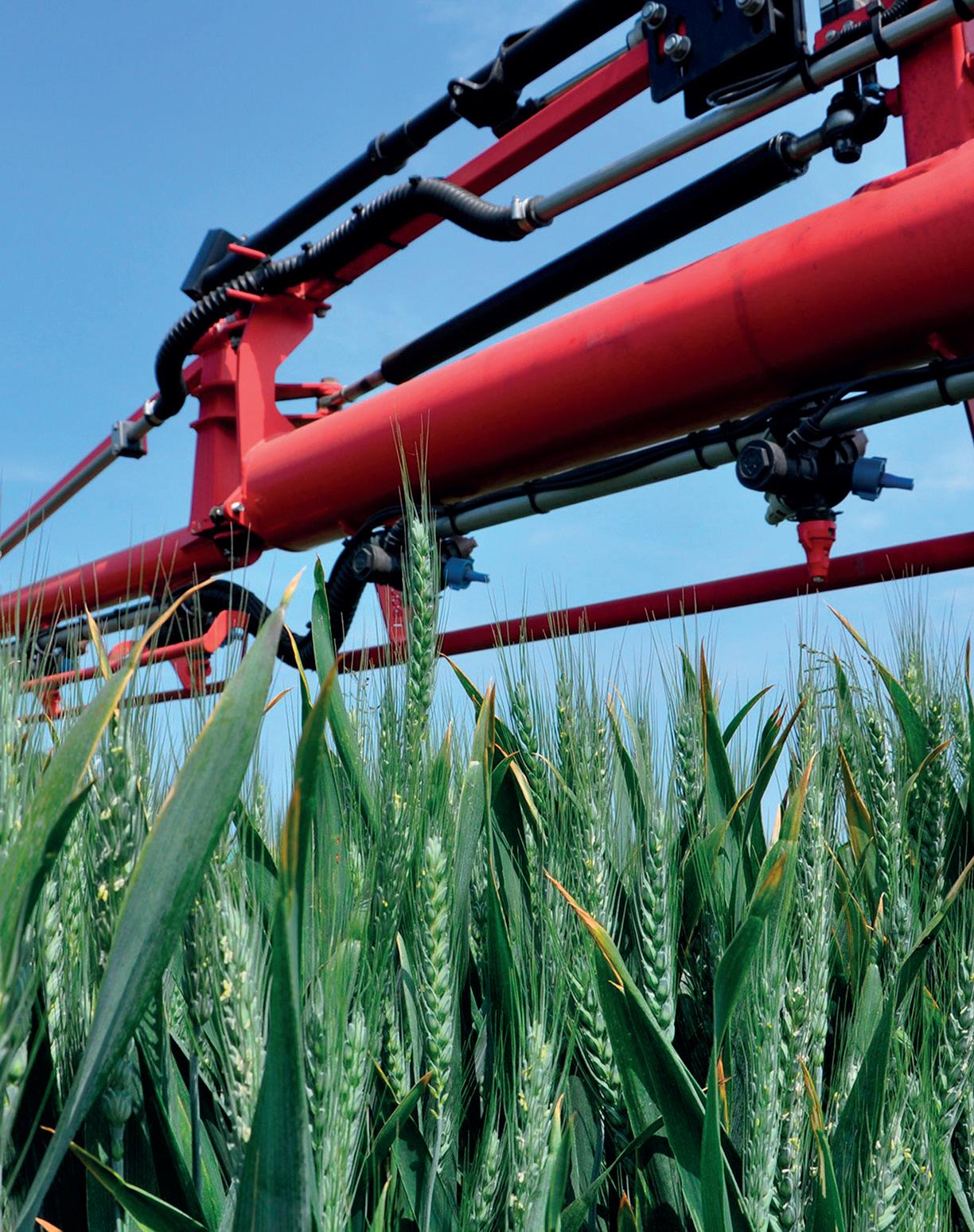
JGood specific weights are also important for milling wheat crops, therefore it is important to protect crops against disease to safeguard grain fill.
Mr Smith says: “You want plump, well-filled grains. So, there are multiple reasons to protect photosynthetic green leaf areas against diseases throughout the season.
“It is important for growers to be aware of their chosen varieties’ disease ratings, which can be found within the 2024 AHDB Recommended Lists for Cereals and Oilseeds, to ensure prioritisation of fungicide applications.
Dry soils will also limit uptake of nutrients such as magnesium and potash, but a foliar application of Proplus Excel included at the T2 spray timing will provide both of these elements plus sulphur, adds Mr Smith.
Chris Harrold, product manager at Yara, agrees and says alongside N, growers should also pay attention to phosphate


“Septoria tritici is rampant this season, which will need controlling and several popular Group 1 winter wheat varieties also have low resistance ratings against yellow or brown rust. As well as using a triazole fungicide active against fusarium for the T3 ear spray, include a suitable strobilurin to stay on top of rust risks.
“It is not worth missing out on the good milling wheat premiums available. The last thing you want is a milling variety being sold for lowerpriced feed,” he says.
alongside potassium and magnesium at the T3 timing.
“As an agronomist, I would advise growers to be applying magnesium to milling wheats at both the T2 and T3 spray timings, but whether it is necessary to also apply phosphate and potassium would be dependant on a tissue analysis seven-10 days prior to the timing,” he says.
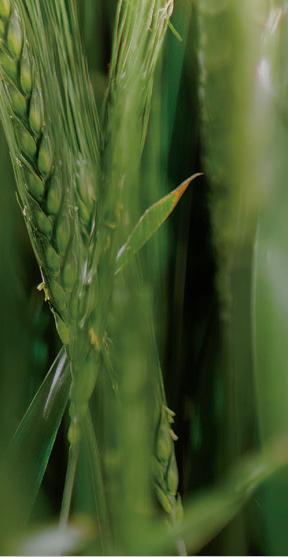
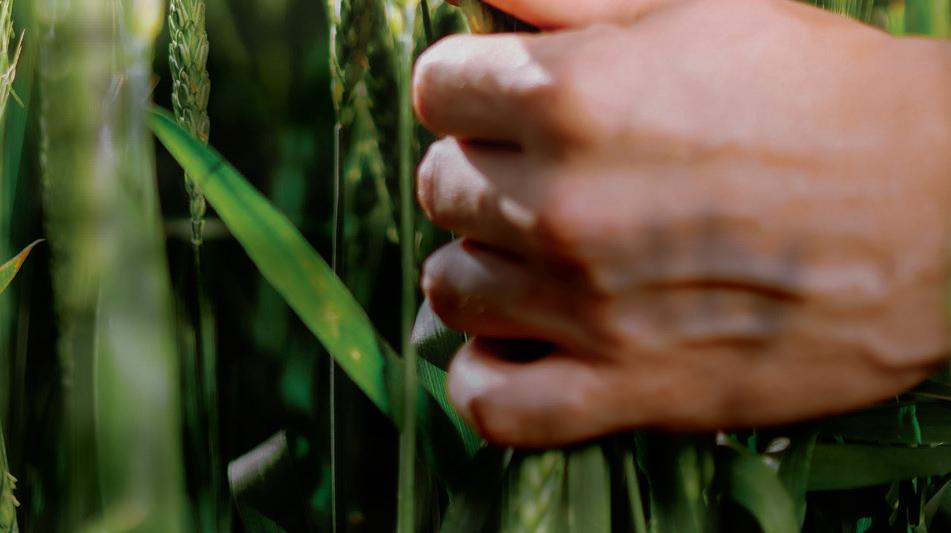


Reducing your emissions
• Low ammonia emissions granules
• Reduced carbon footprint from factory to field by 55% through abatement technology
• Half the emissions of urea + inhibitor*
Heavier granules go further
• Spreading accurately above 40m
• Can spread during windier conditions
Stronger granules are more resilient
• Don’t shatter on impact
• No dust
Compound granules for evenness
• No segregation in the hopper
• Uniform spread pattern
*DEFRA, NT26


New oilseed rape genetics being developed by DSV are building on traditional pod shatter characteristics to increase harvest security in light of increasingly variable growing conditions now experienced across Europe. Arable Farming reports.
DSV’s latest addition to the Recommended List (RL), DSV Dolphin, is the first of a new generation of hybrid varieties specifically developed to combine a key set of genetic traits to protect them against adverse weather conditions later in the season.
DSV marketing and sales manager, Sarah Hawthorne, says: “Pod shatter genetics, contained in several DSV oilseed rape varieties and others on the RL, have done much to highlight the issue of harvest seed shed.
“It is, however, now widely understood that how a variety

performs during its growth and at harvest is the function of many different characteristics rather than just a single gene or property of a variety.
“Other factors, such as the plant’s overall strength and health, its disease resistance and growth habit together with the actual physical form of the pod, are increasingly seen as fundamental to how it performs at harvest.”
Four key components
DSV breeders have been working on a core set of features around the concept of ‘powerful pods’ and have identified three key pod characteristics, which when included in varieties, contribute significantly to reduced seed losses in adverse conditions.
“These are greater flexibility
How a variety performs during its growth and at harvest is the function of many different characteristics rather than just a single gene or property
SARAH HAWTHORNE
of the pod structure, improved function of the pod valve margins and greater space around individual seeds.
“Increased flexibility, for example, gives pods a resilient ‘rattle-proof’ structure which makes them less friable and more able to absorb energy rather than break open in conditions with extremely high winds or hailstorms. This enhanced flexibility also allows pods to cope better with the uneven tensions produced from drying after rainfall, which can lead to seed pods splitting,” says Ms Hawthorne.
Varieties with ‘powerful pods’ also have a stronger valve margin.
“The mechanism at the base of the pod which effectively controls the opening of the valves, effectively the sides of the pod containing the seeds.
“This avoids early triggering of the opening process, particularly when pods are stressed such as in adverse weather or when going through the combine header.
“More space in individual pods also allows seeds to develop fully as they mature so a variety can reach its full yield potential, but it also stops growth stressing the pod, which can again lead to premature failure.”
Results from DSV’s own trials and an AHDB analysis of pod shatter results have underlined DSV Dolphin’s harvest performance.
“In random impact tests carried out at the DSV breeding
station at Thule in Germany, where pods from different varieties are bombarded with steel ball bearings in controlled conditions, DSV Dolphin achieved one of the best scores for seed retention.
“Results from an AHDB analysis in 2023 have shown little difference in the performance of DSV Dolphin with regard to seed loss compared to many of the most popular pod shatter varieties.”
Fully featured variety
Other factors working alongside DSV Dolphin’s ‘powerful pods’ seed protection features are a fully featured set of agronomic properties, Ms Hawthorne says.
“DSV Dolphin is recommended for the East/West region on the current RL with a gross output of 106%, the joint highest on the list, and this is supported by some stand-out features, including a 46.6% oil content.
“With TuYV resistance and scores of 7 for stem canker, 8 for lodging and a 9 for stem stiffness, DSV Dolphin is a simple to grow OSR well suited to the current economic and environmental climate. It also has a 7 for flowering and a 4 for maturity.
“It also has strong tolerance to verticillium wilt, as well as having some of the best tolerance to sclerotinia in DSV’s portfolio, with early senescence from either these conditions known to cause excessive seed loss before or at harvest.
“DSV Dolphin offers growers


a high level of protection from the growing threat of the TuYV virus now endemic across the UK where it has the potential to reduce yields by up to 20%.
“It also features RLM7+ and multi-gene resistance to stem canker and is an agronomist-friendly variety well suited to integrated crop management
systems due to its high resistance to light leaf spot with a score of 6.
“These features combined with its ‘powerful pods’ mean DSV
Dolphin is a variety suited to the demands of modern production and the increasing challenge of changing growing conditions,” Ms Hawthorne adds.


Flexible, reliable and easy to maintain:

As a pioneer in agricultural technology, Vogelsang leads the way in environmental friendly spreading equipment. The dribble bar systems combined with the ExaCut distributor give the highest application of liquid manure nutrients.
Dribble bars are available in working widths of 7.5m right up to 36m and are retrofit-friendly.
VOGELSANG – LEADING IN TECHNOLOGY
Contact us at: 01270 216 600 | sales.uk@vogelsang.info vogelsang.co.uk



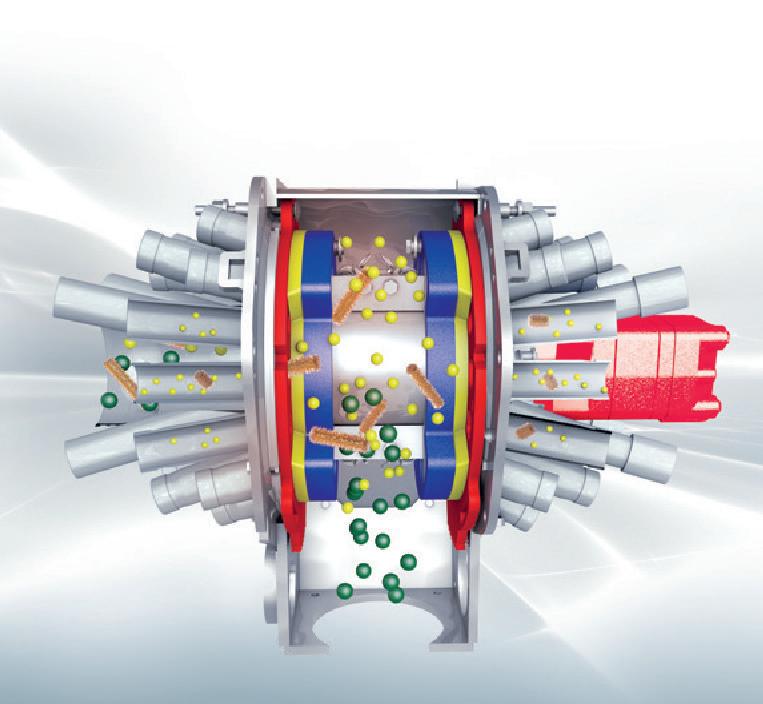


For more information visit
www.vogelsang.info/enuk/dribble-bar-systems
Plant breeder DSV has been working on a set of OSR variety features to reduce seed losses in adverse conditions.JUsing attention to detail and the full agronomic toolbox to repair damaged soils – not least after this season’s incessant waterlogging – to restore soil life and improve soil health and resilience, will be a central theme for ProCam.
Drawing on techniques such as ProCam’s soil analysis and nutrient planning service, SoilSense, together with the use of cover and companion cropping, and even precision farming, ProCam experts will be on-hand to help farmers looking to rebuild their soils for the future.
Allied to this, the incorporation of increasingly popular biological treatments, such as nitrogen-fixing endophyte bacteria, into programmes to reduce reliance on granular nitrogen fertiliser, will also be discussed, as well as how to incorporate Sustainable Farming Incentive options into rotations in sustainable and economically viable ways.
JWhat more could you know about your farm?
This is the question YAGRO is inviting farmers to ponder at Groundswell 2024.
We all know agricultural enterprises must ‘know their numbers’ to stay ahead, so YAGRO’s team of farm data experts will explore how their software can shine a light on all areas of arable operations.
They can highlight how to track in-season spends, understand costs of production in greater detail and benchmark performance.
The new ‘Chemical and Fertiliser Review, 2024’ will be available freely to farmers,

JEntering its eighth year, ‘the regenerative agriculture festival’ is set to take place at Lannock Manor Farm, Hertfordshire, on June 26-27,
2024. The event aims to provide a forum for farmers, growers or anyone interested in food production and the environment to learn about the theory and
practical applications of regenerative farming systems rFor more information and to purchase tickets, visit groundswellag.com
The annual regenerative agriculture festival Groundswell is set to take place in Hertfordshire in June. Ash Ellwood catches up with some of the arable exhibitors to see what will be spotlighted at this year’s event.
which delves into the costs and efficacy of the most popular inputs on-farm.
JAgrii and Weaving Machinery will come together on an interactive stand. Three different cover crop mixtures will be used across the demo plot, and pop-up marquees will host targeted discussions, all interspersed with complementary low-disturbance farm machinery.
Using the specialist agronomy
knowledge of the Agrii team, three cover crop mixes have been carefully selected for the demo plot to provide opportunities to discuss the merits of the different species and demonstrate what works well from a practical, agronomic and financial point of view.
In-keeping with the event’s no-till principles, Weaving will present its range of direct
drills and a selection of low-disturbance cultivators, thoughtfully paired with Agrii’s discussion topics, such as the tine versus disc crop establishment debate. One of the interactive stations will feature a soil pit, initiating conversations about the influence of various machinery and agronomic decisions on soil structure.
Continues over the page.












See us at Cereals at stand number 717


Clubroot spores live in the soil for up to 20 years and there is no viable method of removing them. So the best and quickest way to protect your oilseed rape crops from clubroot is to raise soil pH above 7. Granulated Calciprill breaks down quickly in soil moisture and the high surface area of its ultrafine particles reacts immediately, correcting acidity in the soil in a matter of weeks not months. Give your oilseed rape the best chance of avoiding clubroot by applying Calciprill now.
For more information: Contact David McLellan on 07710 712030 or scan the QR code
• Precise
• Fast-acting • Convenient • Efficient
JClayton has recently launched an exciting new BioSolutions range containing plant growthpromoting rhizobacteria (PGPR).
The Clayton Nutrient Use Efficiency (NUE) range, developed by PlantWorks and tailored to a wide range of crops, enhances NUE through the fixation of nitrogen and solubilisation of phosphate and potassium.
Crop development is also boosted through greater hormone production within the plant.
PGPRs, as contained in Clayton’s NUE range, are applied post-emergence as they thrive around the root system of a growing crop.
JThe world is waiting to see the impact of the Sustainable Farming Incentive (SFI). Will the interventions it promotes be sufficient to reduce greenhouse gas emissions, boost biodiversity and generate value in natural capital in line with expectations? And crucially – what are those expectations?
Dr Belinda Clarke, director of Agri-TechE, says urgent need for innovations to enable value capture through trusted solutions which measure and enhance nature-sensitive farming, is urgent.
She says: “SFI is a flagship initiative, but it is still unclear as to what its anticipated impact really is. I do not think we have a consistent view across the industry on that yet.
“Crucially, we need to understand benefits which will be rewarded and linked to improvements on the bottom line for farmers, either through increased productivity or other monetisation of natural capital
This makes them easy to apply by simply spraying them onto a growing crop in spring when temperatures are above 8degC, which helps to increase the microbial soil activity.
PlantWorks has trialled these products extensively with farmers and agronomists, showing wheat yields can be improved on average by 6% with similar yield uplift in root crops such as beet, carrots and onions. The Clayton NUE range is approved for use in organic crops.
JTimac Agro UK will be showcasing its innovative soil conditioners at Groundswell 2024, emphasising their role in enhancing

Delve into suitable arable Sustainable Farming Incentive options with advice and guidance on-hand across the two days.

In a tricky year, nutrition will be at the forefront of many growers’ minds to ensure maximum nutrient uptake and crop resilience.

the physical, chemical and biological fertility of soil.
By improving soil health, Timac’s solutions ensure maximum nutrient availability from both applied inputs and the soil’s natural reserves. This approach reduces dependency on highly soluble fertilisers, promoting a more
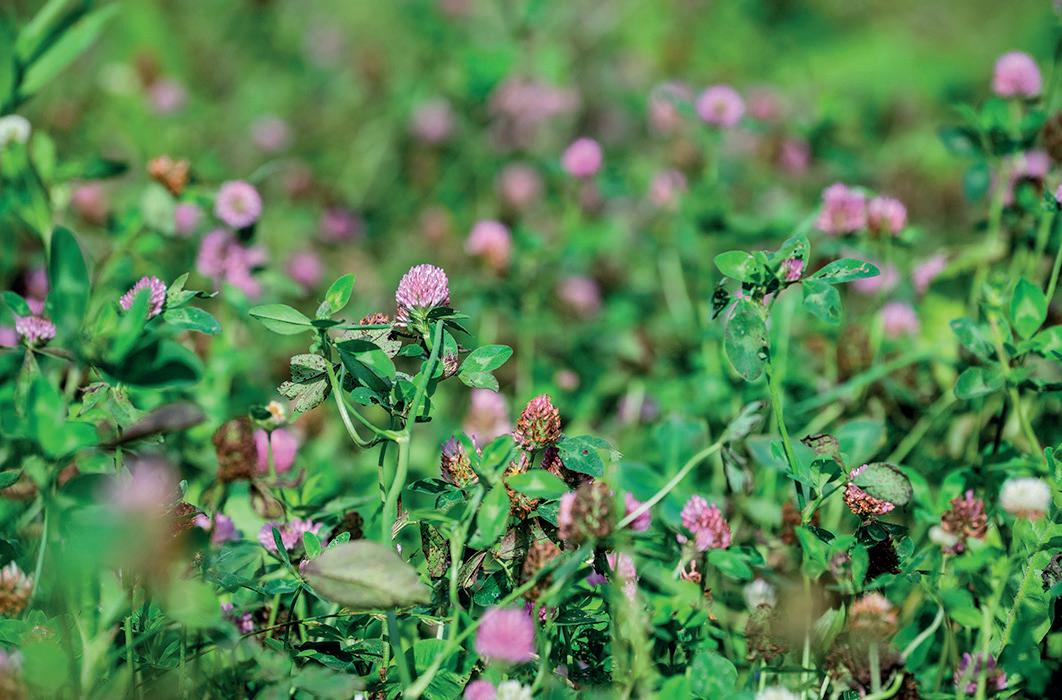
assets. We need data and evidence to provide those critical insights, so investors, banks, Government – anyone who is looking to make a business model out of natural capital – can trust and believe in this journey.”
JFor the seventh consecutive year, Affinity Water takes pride in being a headline sponsor of the upcoming Groundswell event, where it will underscore the significance of healthy soils and water quality. Demonstrating commitment
to promoting sustainable agricultural practices among farmers within catchment areas, Affinity Water will present its latest trials and share crucial findings.
Visitors at the event can anticipate educational rainfall simulator demonstrations near the big top tent, showcasing the efficacy of farming methods in preserving soil health and water quality.
Delegates are encouraged to visit the Affinity Water stand to engage with the team, discuss ongoing collaborations with farmers and receive a
sustainable and efficient nutrient management system. The team will be exploring the potential of soil conditioners in the drive for productivity on-farm and discussing the science behind them by demonstrating how they increase nutrient uptake and crop resilience.
complimentary water bottle. This event reflects Affinity Water’s dedication to fostering environmental awareness and supporting regenerative agricultural practices.
JAs Groundswell’s cover crop partner for the eighth year, Kings Crops plans to spotlight solutions which deliver for both food production and future farm resilience. With SFI options igniting new land management considerations for growers, Kings will be joined by Frontier Agriculture’s sustainable crop production experts and precision specialists at SOYL to demonstrate how field and crop production data can support future farm decisions. Together, advisers will also cover privately-funded sustainable farming opportunities which complement Government schemes, while plot tours will allow visitors to see mixtures which deliver practical benefits for both the environment and farm productivity.




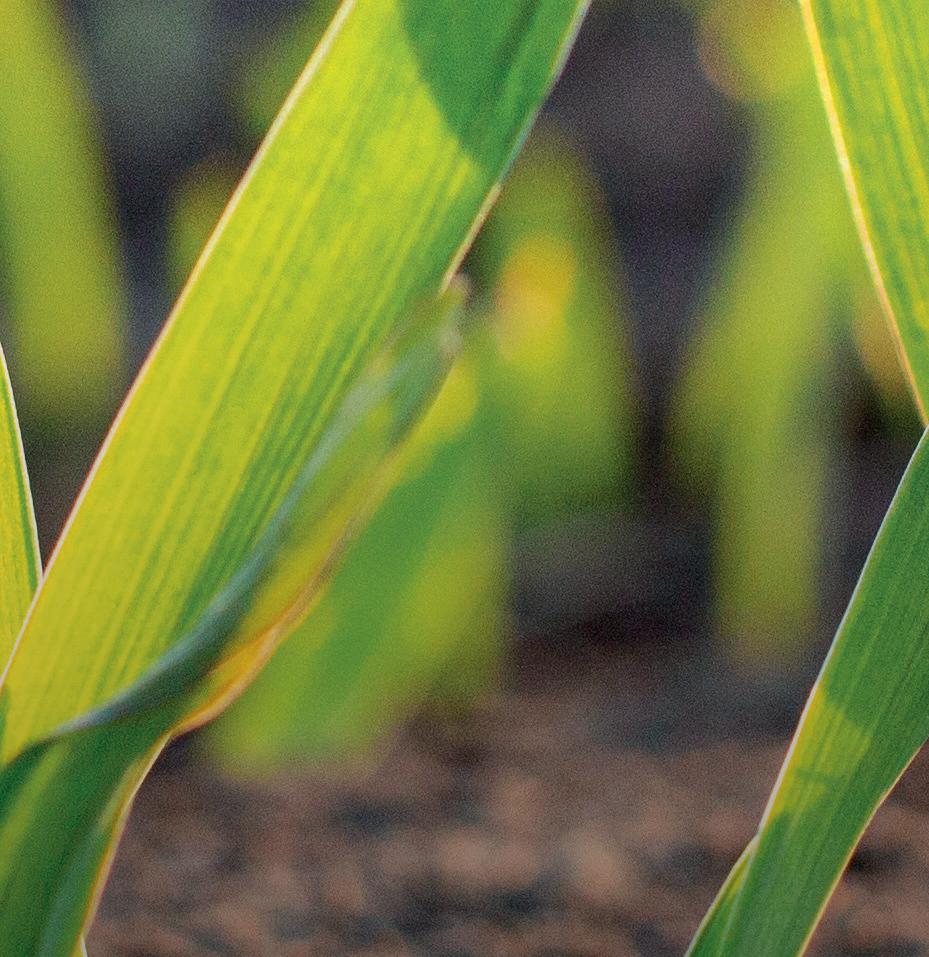





When considering T3 applications, grower’s location and subsequent harvest date impacts which fungicide to use.
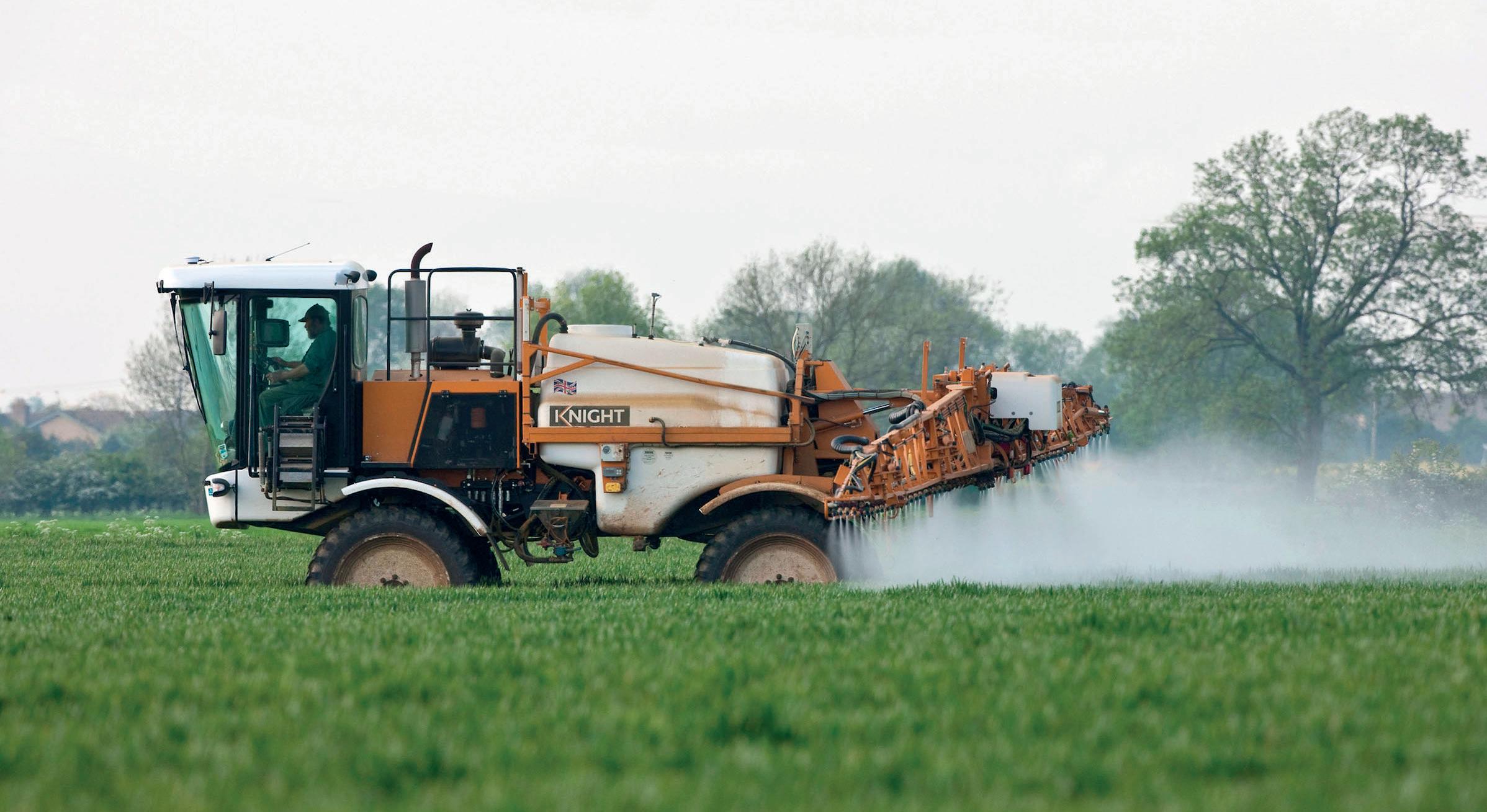
With a challenging start to the year, Ash Ellwood chats to a crop production specialist about the potential disease season ahead and what growers can do to prepare for T3 fungicide applications.
Depending on what the weather decides to do, this year’s key disease pressures could take a few different turns. At the time of writing in early May, earlier
drilled wheats generally have higher levels of septoria, even those that are the more resistant varieties. However, later drilled wheat varieties, due to being under more stress, are at a higher risk of yellow rust this season,
JEyespot has been reported in wheat varieties such as KWS Extase and crops that have poor rooting are at an increased risk.
Mr Thornton says:
“Eyespot infections do not look to be quite as bad this year [as last year] but, if crops have poor rooting, you do not want additional problems that will also affect the integrity of the straw.”
Brown rust is often a disease thought of later in the season,
according to Mike Thornton, head of crop production at ProCam.
Yellow rust appearing in wheat varieties has been reported by ProCam’s Sussex-based agronomists. Septoria has also been seen in wheat crops this year, partly due to the continued rainfall but when the weather warms up, Mr Thornton warns of potential increases in septoria pressures.
“When it does warm up, it could create a perfect storm.
“I am advising growers to think carefully before they cut [fungicide] rates or use
but Mr Thornton has already heard widespread reports of brown rust infections in Crusoe winter wheat and to a lesser extent in varieties with low brown rust disease ratings.
More stressed
“I am sure that has a lot to with the fact that crops are more stressed than usual, but a lot of these diseases heavily depend on the weather, which has been conducive to heightened disease this year.”
cheaper inputs in case we have a septoria surge.”
One of the key concerns for both winter and spring drilled crops this year is poor rooting systems, Mr Thornton says.

“When the ground is wet, crops do not go looking for moisture, so they end up with root systems very near to the soil surface.”
If the weather does dry and causes the water table to drop, the plants are then unable to respond, creating increased stress and vulnerability to disease.
“If the weather turns dry, this could create a yellow and brown rust favourable year whereas, if it stays wet but warms up, this will be perfect conditions for septoria to spiral,” he adds.
When considering T3 applications, grower’s location and subsequent harvest date can impact the fungicides chosen and the ultimate spend attached to the timing.
“Further south and in a reasonably warm summer, a crop between T3 and harvest will mature and senesce quicker than the North, so instead of harvesting in August, we are harvesting in July.
“If growers in the South want to knock-back rust, they might not be too worried about the persistency of the active at the T3 timing, as the crop is going to be ready to harvest soon.”
Further north, by the time crops are harvested, days are getting shorter and there is an increase in evening dew, which means growers might look for more persistent chemistry.
“Depending on what was applied at T2, growers could look for a strobilurin and triazole type fungicide at T3 to provide that additional persistency,” says Mr Thornton.
Analysing previously used actives at T2, such as Corteva’s Univoq (fenpicoxamid) or Syngenta’s new Miravis Plus (pydiflumetofen), can influence the levels of protection and subsequent fungicide spend required at the T3 timing.
“Both products are very potent against septoria and will last a
rFollow growth stages carefully: Crops can progress through their growth stages quite quickly and it is important to be regularly walking crops to ensure the fungicides are applied at the correct timings.
Mr Thornton says: “A lot of products would want to be on between growth stage 59 and GS61, but by GS63 it will be too late, even if it’s still got approval on the label.”
rConsider the preceding conditions: Analyse information, such as variety disease scores, cultivations, rainfall, and a mycotoxin test to help decide on rates or chemical choices to use for the T3.
rThink about nutrition: Right the way through the season it is worth completing tissue analysis tests to readily see what is both available and lacking.
“Often crops do not show themselves what is lacking and they often just look unhealthy, growers will then apply nitrogen, but it could be an entirely different nutrient that is lacking,” adds Mr Thornton.
long time, so growers might be tempted to use those at T2 so they can be less worried about septoria later on in the season,” says Mr Thornton.
With extended levels of persistency, growers can focus their T3 sprays on ear diseases, such as fusarium ear blight which can be controlled relatively cheaply in comparison.
“Actives such as prothioconazole, tebuconazole and prochloraz that can be mixed and matched often do not have the same restrictions in terms of numbers of applications in the way that strobilurin and SDHIs do,” he adds.







For the last nine years, 24 Hours in Farming has taken the nation by storm, and this ye

THERE is always a reason to celebrate farming, but looking back on the last year, it feels more important than ever to showcase agriculture to wider society.
Farmers Guardian’s social media campaign 24 Hours in Farming, sponsored by Morrisons, will be back once again on August 8-9 in a mission to educate the public on exactly what goes on in farming.


As farming’s biggest digital event, it allows the sector to come together and collectively shine a positive light on what farmers do day in, day out.


Reach of 32 million



Since its inception in 2015, farmers, chefs, sportspeople, celebrities and Government officials – including the Prime Minister – have taken to Instagram, X (formerly Twitter), Facebook and TikTok to post videos and pictures using the hashtag #Farm24, explaining what they are doing and, more importantly, why



It can feel like we are in an echo chamber, but the buzz #Farm24 creates filters out to parts of society that we cannot usually reach, as thousands of people across the food and farming industry share a little of their farming lives for the event. With a sustainability drive, new incentives to contend with and food security at the forefront of everyone's minds, why not come together to tell the true story of farming and remind the nation why British farmers are always worth supporting?

OLIVIA MIDGLEY

EDITOR OF FARMERS
GUARDIAN

With farming in the public eye now more than ever, it is time to unite as an industry and show the public what truly goes on in farming. #Farm24 is a fantastic opportunity for British farmers to counter the misinformation out there and show themselves for what they really are: Quality food producers, innovators and keepers of the countryside.






In 2023, we had 24 ambassadors
Two of the 2023 ambassadors:










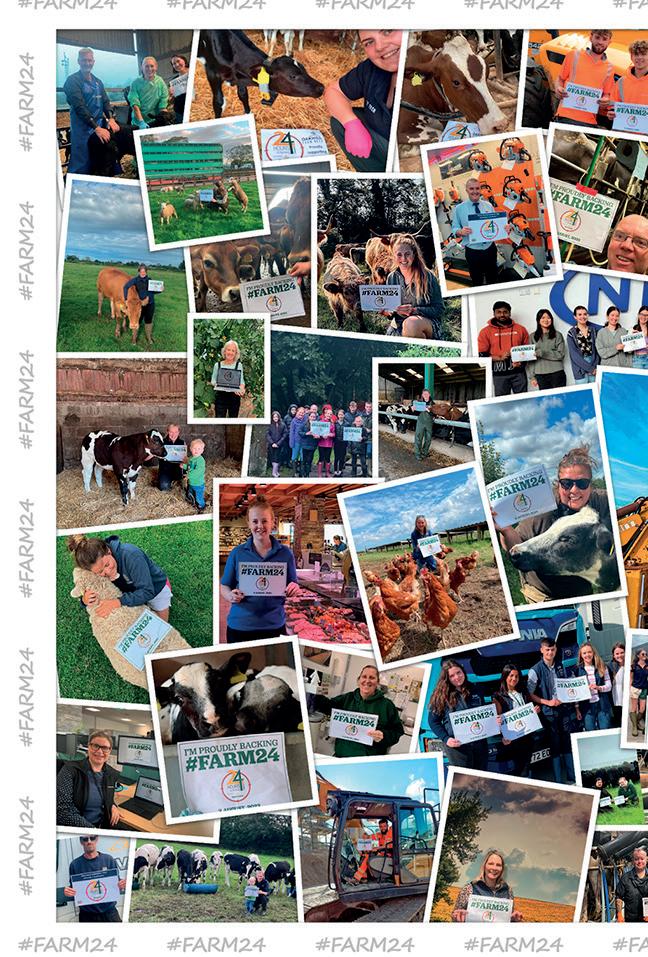


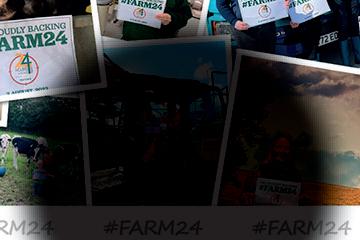








Last year, Jamie Oliver supported the campaign and posted the following: “Big love and respect to our great British farmers on #Farm24 day. We’re lucky that the UK has some of the very best producers on the planet – hugely talented, passionate, hardworking people who are simply brilliant at what they do…”




ar it is back – bigger and better than ever.




















Get involved

5am on August 8 – 5am on August 9
Every farmer has a story to tell. Perhaps you are part of a large generational family; maybe you came into the industry from a non-farming background; you might be farming in an innovative way, or simply be passionate about something. Whatever that is, show it to the nation and beyond by sharing your story on social media. Make sure to use the hashtag #Farm24 and tag Farmers Guardian and Morrisons.
3 1 2
4
Give consumers a truthful insight into farming, whether that is food production, careers or nature and sustainability Our #Farm24 mission
Unite the industry
Spread a positive farming message
Highlight the work that goes into producing food, for the nation

We are hugely proud of #Farm24 and bringing the story of British food and farming to a global audience through this campaign. We know our customers really value the work of British farmers, and being able to show the people and pride behind the products is fantastic. TECHNICAL AND
Working with a package of nozzle control upgrades to its Househam sprayer, H.A. Day and Sons is testing technology soon to be launched and set to rival pulse-width modulation spraying. Jane Carley reports.
Operators’ requirements for their sprayers remain highly individual, and the opportunity to work closely on the design and specification of a machine or retrofit new technology is a big plus for many.
Househam Sprayers is one of a handful of British manufacturers working in this way, and by using his own engineering background to collaborate with the company and its suppliers, James Wilson, of Gloucestershire farming business H.A. Day and Sons, is refining his machine to closely meet his needs.
The family farming partnership is based near Winchcombe on 800 hectares, of which 700ha is arable on a rotation of winter wheat, spring wheat, winter barley, oilseed rape and spring linseed. With liquid fertiliser, the spraying workload is around 7,000ha/year.
Partner Mr Wilson says: “We

purchased the 24-metre boom, 4,000-litre Househam Merlin in 2016, and by working with Househam, Lykketronic and Altek, we have been able to upgrade the spray control as we have gone along.”
The latest developments to the Househam range feature the improved Total Machine Control (TMC) V6 spray controller which offers Auto Nozzle Select (ANS) and turn compensation as standard features on twin line and above machines. The system can be easily upgraded all the way to Individual Nozzle Control (INC) by customers or available as a factory fitted option.
This system, Househam suggests, will offer all the benefits of pulse-width modulation (PWM) at a keener cost with greater reliability and future maintenance in mind.
The new system allows operators to use all generally available and recognised injector nozzles in their




Househam and its suppliers were happy to work with us and let me spec the machine up as we went along
JAMES WILSON
plant protection applications. Househam hopes to offer enhanced nozzle monitoring with the incorporation of the Altek Nozzle Spy system into the TMC and the ability to do variable application rates across the boom.
It is due to be unveiled at Cereals, and Arable Farming was able to get a glimpse of some of its benefits in this most challenging of spring seasons.
Utilising Lykketronic’s INC 2.0 system, a ‘daisy chain’ of modular control units are mounted on the boom of the sprayer controlling the quad version of Altek’s Smart-CSpray 124 nozzle bodies. H.A. Day’s Merlin has been upgraded to individual nozzle control with a TMC V6 system and is capable of using electrically-actuated air shut-off for each nozzle according to a prescription map.
Mr Wilson says: “It’s a step on the way to variable rate per nozzle, although at the moment it’s just on or off.
“We’re currently using EGNOS GPS on the Merlin which is accurate enough for this purpose, although we do have RTK on the farm. We were early adopters of individual nozzle control which seems to be a long time coming on

some machines, but Househam and its suppliers were happy to work with us and let me spec the machine up as we went along. You could say we are ‘guinea pigs’ but I’m happy with that.”
The quad nozzle body can be used in any combination with one to four nozzles on, which operator Andrew Cook says is particularly useful for liquid fertiliser.
“I can put it through two nozzles to get the 250 litres/ha on at higher forward speeds rather than having to use one large nozzle,” he says.
Nozzle selection from the cab is also handy on the catchy or busy days, he adds.
“If we’ve been doing liquid fertiliser in the morning, for example, it’s an easy wash out and then switch nozzles to go onto fungicides in the afternoon.”
Mr Wilson says that turn compensation will be useful for the many irregular-shaped fields on-farm.
“The quad nozzles will also help with this, giving the choice of rates needed to maintain the application rate on the turn,” he adds.
New developments
Further software updates to be unveiled by Househam will offer
H.A. Day and Sons has upgraded its 2016 Househam Merlin sprayer over time with the help of Househam and its suppliers to offer tech specified on the latest models.

improved nozzle monitoring via new nozzle flow meters, with easier toggling through three screens depending on the operation, says Househam’s senior technical engineer Alex Fisher.
“Colour-coded icons on the second screen will show the operator which nozzles have been selected by the ANS, for example when the turn compensation system is maintaining the correct boom flow rate during a turn, giving the operator the ability to check visually the system is working correctly. With a simpler section control set up, which we expect to be the bulk of the market, it will also show the nozzles selected per section,” he says.
Altek’s Smart-C-Spray system also brings Nozzle Spy flow monitoring which will offer real-time feedback to the sprayer terminal on this screen.
“This again works for individual nozzle bodies or sections to flag up issues such as nozzle wear; at the moment we can only measure complete boom output rather than individual nozzle flow rates. The flow will be graphed proportionally compared to main boom flow rate as the litre/minute per nozzle on the third screen.”
Mr Fisher adds: “The goal is varia-


ble rate per nozzle down to 0.5m spacing rather than across the full boom width according to selective spray maps.
“To achieve that, the GPS needs not only to know where it is on the sprayer but also the boom width and how far it is from each nozzle. The system also needs to be able to map what the machine has outputted on an ‘As-Applied’ map to feedback to the chosen farm management system. So a lot of computing needs to be done.
“You also need to select the correct nozzle and have precise control of the machine flow rate; this is an area where PWM is more accurate, although this method will be far better than a flat boom flow rate. It’s something that we want to achieve because the technology is available, it’s relatively simple to implement and offers a huge benefit to the operator.”
Choosing the right partners is an important part of the equation, he adds.
“Lykketronic’s INC 2.0 system was originally designed specifically for Househam and its customers to replace our own first generation INC system. From the beginning, it was designed to allow the customer to choose their section
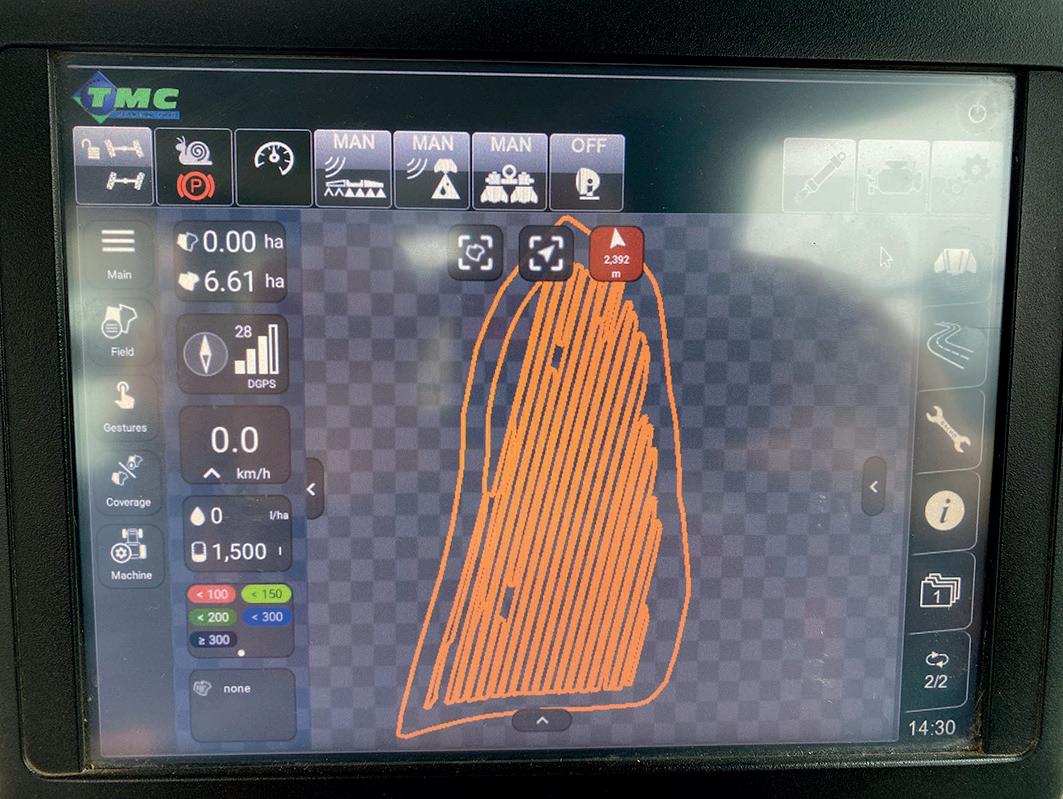

layout easily and preferred nozzle bodies such as Altek Smart-CSpray 124 or Hypro Duo React.
“With more development, we hope to offer the CAN-based Hypro ProStop E electronic control or maybe PWM nozzle bodies in the future. It means we can offer bespoke solutions and we also get excellent support – we can direct or collaborate on software and always get a great response.
“Similarly, we work closely with Altek as the products are very serviceable and robust for our industry – air switching means that the air takes up any water if a seal fails, avoiding the expense of an electrical failure.”
Mr Wilson maps the field’s crop cover with a drone and then uses Soil Essentials’ software to create a prescription map for liquid fertiliser or crop protection products. This is transferred to
the sprayer via USB stick and is used to control the sprayer output – switching individual nozzles on or off as it passes over areas of the field that have crop growing on them or are bare.
“By mapping the coverage I can see the area of viable crop in the field and determine whether to spray off the whole crop and re-drill, or whether it is worth taking the remaining crop to harvest. Using individual nozzle control we can treat the viable crop and save on the input cost of spraying bare areas,” he adds.
Mr Cook says: “The nozzles only switch on in the area to be treated, so it’s also useful from a traceability perspective – you can’t spray areas that are not on the map and can prove that you haven’t sprayed them.”
He adds that chemical savings of 10-15% have been seen on-farm since the initial adoption of individual nozzle control.
Darryl Shailes talks through disease management for potatoes
The water has finally gone back down to normal levels, and we’ve been able to get onto the grass and cut it a few times. As the soil has dried and the weather warmed up it has really started to grow, so sitting on the mower will become a regular feature over the next few months.
The Waveney Valley is a bit like the Nile flood plane, and the amount of soil and nutrients that have been washed off the local arable fields, combined with the relatively high water table managed by the various sluices, ensures there is ample grazing for the local farmers.
Our little veg patch was also flooded on numerous occasions,

so we will be looking for some bumper yields if the weather plays ball.
The only downside of the water going back down is that we probably won’t see kingfishers sitting on the washing line again for a while.
The warm winter has triggered the Rothamsted virus yellows model, and this has allowed the use of Cruiser SB on sugar beet in England. This should keep the treated fields free of aphids for about 10 weeks and be a good start to the virus management programme for the season.
The non-treated crops could be a challenge as the aphids were predicted to start migrating around April 10, which is 10 days before the migration was in 2023. With the wet weather delaying sugar beet drilling in many areas, the beet could potentially be emerging to a storm of aphids.
The recent report from Rothamsted of a neonicotinoid-resistant mysus persicae in Suffolk is also of concern, although at present
JDarryl Shailes has been a potato agronomist for more than 20 years with a nationwide remit. He works for agricultural and horticultural inputs and supplies advice company Hutchinsons as root crop technical manager.
it is only one clone among many millions. There is new chemistry on the horizon, but for now we must manage with what we have and everything we can do in terms of rotational hygiene; resistance management, observation of thresholds and timing of applications are all especially important.
Mysus persicae is also a transmitter of virus in potatoes, and virus management is essential in seed crops, with aphicides being an essential component of control.
However, in ware crops the need for intervention is less frequent as aphid populations often crash before they become a problem, so we must ensure we observe established thresholds before any treatment.
Weed control is always very important in sugar beet, and the recent introduction of Conviso Smart technology has simplified weed management – especially weed beet – for many growers.
However, the technology must be managed effectively. There have been instances of ALS resistance reported in some sugar beet fields, and I’ve seen a photo of some very vigorous poppies in a field only treated with Conviso One (foramsulfuron + thiencarbazonemethyl) where the poppies were ALS-resistant.
While this is not an issue of Conviso One per se, but instead of rotational management of herbicides, we must be aware of it and bring some conventional
chemistry into the system to manage this potential resistance.
Another challenge with the Conviso Smart system is ground keeper management, so this must be considered when introducing this excellent technology onto farms.
Potato plantings have also been delayed by the wet weather, and as much as it is good to get them in as early as possible, we saw as recently as 2023 that crops planted a bit later into good soil conditions outperformed those planted earlier into compromised ones.
Weed control is generally less of a challenge in potatoes, but we must consider soil type and variety when thinking about our residual programmes.
We only have a limited amount of post-emergent herbicides with varietal challenges, and as a business Hutchinsons has been investing in trials to evaluate newer varieties and their herbicide tolerance at our trial and demo sites.
When we get into the challenge of blight and other foliar disease, resistance raises its head.
As we discussed in March, there are blight clones with confirmed resistance in phytophthora infestans of some of the commonly used actives in our blight programmes.
We have at least one more season of mancozeb, which is a great component of an anti-resistance programme as it’s a multisite with no known resistance.
Modern blight fungicides are
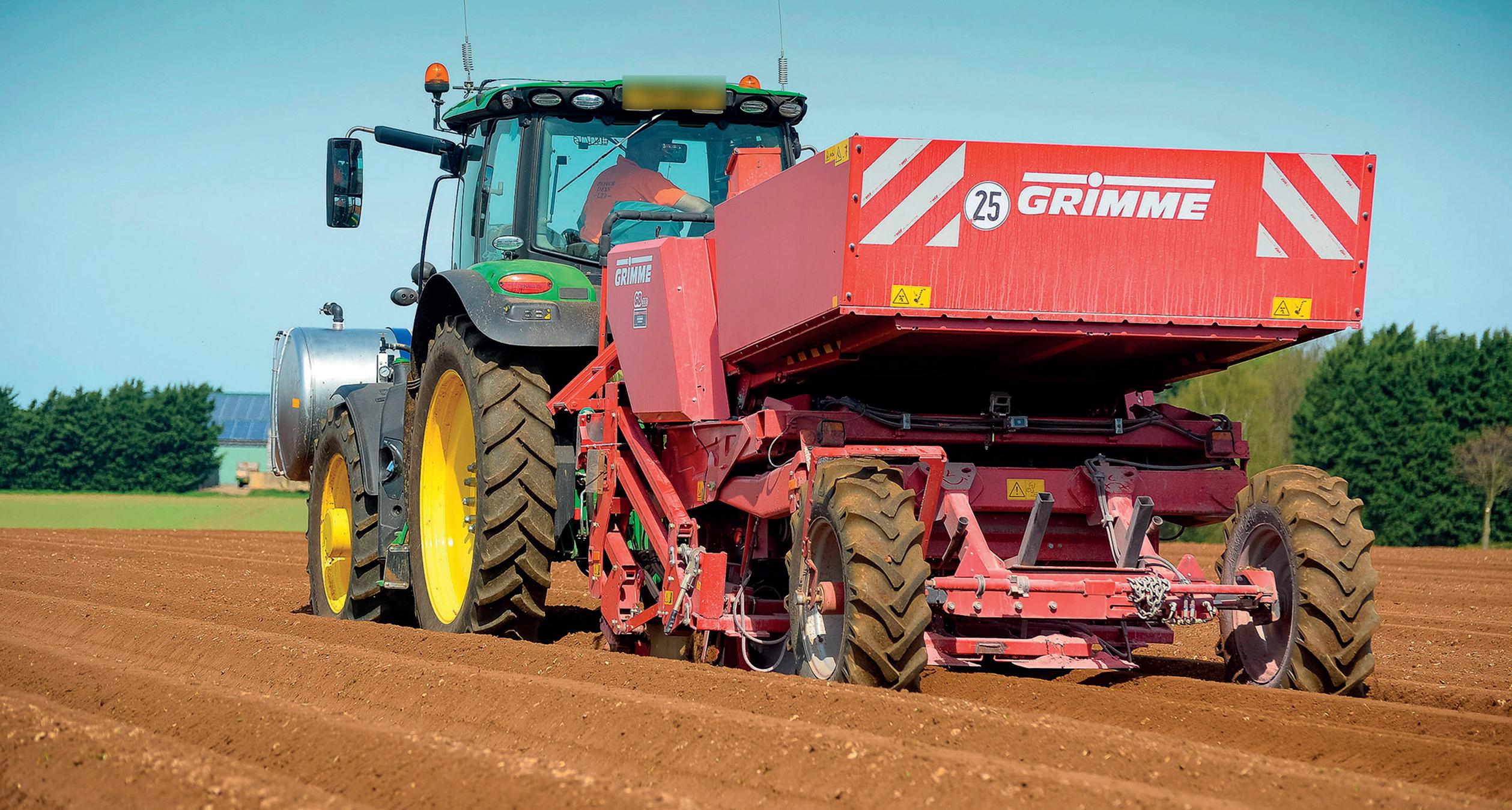

Potato planting is delayed this season but as seen in 2023, crops planted a bit later into good soil conditions can outperform those planted earlier into compromised ones, says
much more targeted in the life cycle of blight, and while being very effective, single site activity enables resistance to develop if they are not managed effectively.
Unfortunately, the regulators don’t seem to take a good resistance management programme into
consideration with approvals, so it is down to us to manage actives.
While we don’t currently have CAA- or OXTP-resistant clones causing problems in the UK, alternating different modes of activity will be essential in blight programmes going forward –
including using mancozeb for as long we are allowed.
Mancozeb is also very useful in managing alternaria in potatoes. Alternaria also has challenges with resistance, with both the strobilurins and older SDHIs having resistant strains.
As far as I’m aware, there is no resistance to triazole in alternaria, so a good programme should have both triazole and one of the newer SDHIs where needed.
There is a long way to go in both crops, so it will be interesting to see what the season brings.
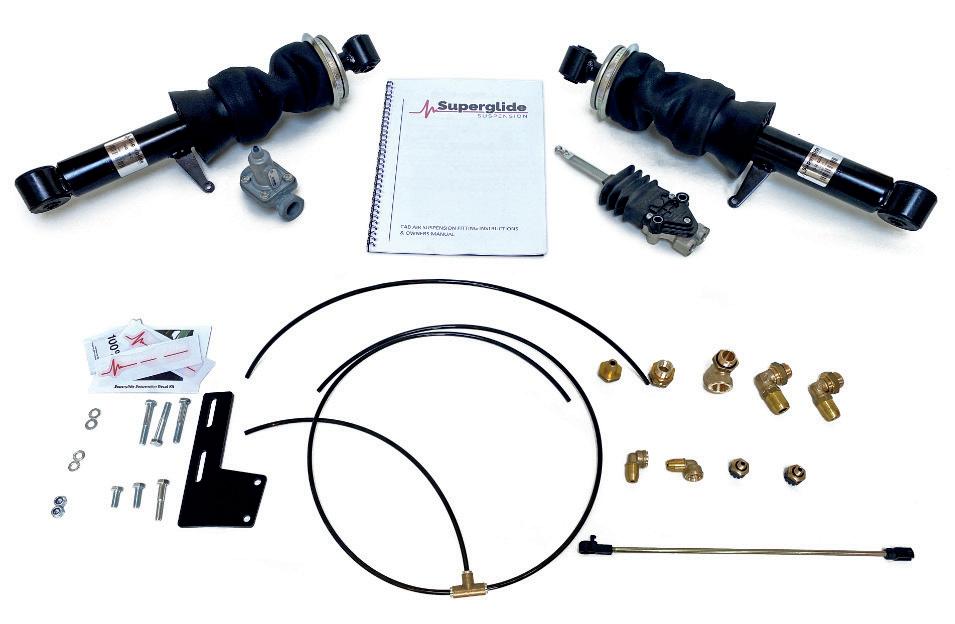


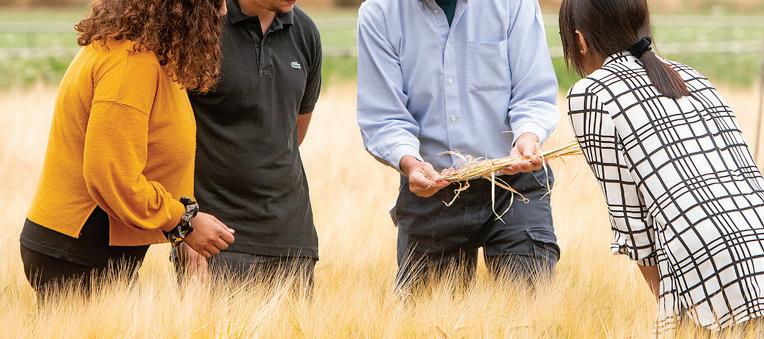

Hemp can be used in construction and textiles and could potentially mitigate climate change through carbon capture.

Farmers are being asked to think about growing hemp following a recent change in the law that extended the maximum period for a licence from three to six years.
The proposals, which have been developed in collaboration with experienced growers, are expected to come into effect for the 2025 growing season.
So what do we know about hemp and why does it need a licence?
Basically, hemp is a variety of cannabis containing less than 0.2% delta-9-tetrahydrocannabinol or THC as it is more commonly known.
It has a number of lawful purposes, for example in construction and textiles, and could potentially impact climate change through carbon capture.
To make sure this is only grown for strictly legal purposes,
With recent changes to hemp licensing laws, we investigate what the crop can be legally used for in the UK, how to grow it and governmental policy surrounding it. Jane Thynne reports.
farmers who wish to grow hemp must therefore have a licence, which Defra says balances the Government’s support for farmers with the need to protect the public from drug misuse.
Farming Minister Sir Mark Spencer says: “Industrial hemp has huge potential across the
UK to unlock new revenue streams, expand our bio-economy without permanently removing land from food production, and bring wider environmental benefits.
“The licensing changes recognise industrial hemp as a field-grown agricultural crop
and will enable more farmers to add hemp to their crop rotations, sequester carbon and sell their harvest to the textile and construction industries.”
According to the British Hemp Alliance, the plant is one of the ‘most versatile, prolific and synergistic tools’ available

to farmers. Not only will it help them tackle environmental challenges around emissions, water use and herbicide and pesticide reduction, but it can also aid soil health by improving structure and nutrient levels.
This in turn leads, the alliance says, to greater yields in follow on crops such as wheat.
The move to extend the licence has also been welcomed by NFU combinable crops board chair Jamie Burrows, who was quick to sing the praises of the crop and why UK farmers should consider adopting it as part of their diversification offering.
“Industrial hemp production provides huge potential for British arable farmers,” Mr Burrows says.
“It is one of the most sustainable crops farmers can grow, is a really good crop for capturing carbon from the atmosphere, has little to no
Hemp is a great break crop, it requires much fewer inputs, including fertilisers and pesticides
JOE LLOYD
input requirements and also has the ability to diversify farming businesses and crop rotations, especially when other break crops such as oilseed rape are becoming more difficult for British farmers to grow due to increased pest pressure.”
According to Defra, the number of hemp licences has grown from six in 2013 to 136 in 2023. A first-time licence costs £580 for three growing seasons. Repeat growers currently pay £326 for a licence, less than £109 per year.
Presently, hemp can only be cultivated outdoors under the Home Office’s ‘industrial hemp’ licensing regime for the purposes of fibre and seed production.
Growers who wish to use the controlled parts of the plant (the leaves and flowers) for lawful purposes, including the production of pharmaceuticals such as cannabis-based products for medicinal use, can do so under a standard cannabis cultivation licence.
However, Joe Lloyd, associate rural researcher at Savills, says while the benefits to farmers are clear, what needs to be done is to ensure the market is ready for increased production.
“Hemp is a great break crop, it requires much fewer inputs, including fertilisers and






































































Hemp can diversify businesses and crop rotations, especially when other break crops such as oilseed rape are becoming more difficult for British farmers to grow, says NFU’s Jamie Burrows.

pesticides and can benefit several end markets, including carbon. But what we do need – and quite urgently – is a functioning supply chain which will take opportunity to real-life benefits.
“An increase in social linkages is definitely required – including more processors, as well as a
crop or productions association which could readily advise farmers. Essentially, there needs to be more investment so the supply chain can move swiftly from plant to product.”
The changes to industrial hemp licensing have been announced to help support regulated farmers to grow hemp
rHemp needs a welldrained, loamy soil type
rDeep tap roots are also useful for improving the quality of land MARKET
rThere are domestic decortication processors on farms in the north of England and the Midlands.
According to the British Hemp Alliance (BHA), these facilities have the capacity to process much more, but market demand needs to increase
rBHA says currently there are only around 20 licensed UK growers, totalling just 2,000 hectares
rHemp has the potential to dramatically improve the rate at which carbon is removed from the atmosphere, with a hectare of the crop being able to absorb between eight-15 tonnes of CO2 per year
rAccording to the Rural Policy Centre, hemp has the potential to reduce greenhouse gas emissions by up to 140% and by 540% compared to oilseed rape and sugar beet respectively when grown for biofuel
rThe centre said it can also be used to smother weeds and is disease-resistant and could also provide a useful break crop alternative to oilseed rape
and encourage investment in the industry. Licence holders will be able to grow hemp anywhere on a licensed farm and the maximum period for a licence will be extended from three to six years.
The proposals include an option to apply for a licence with a deferred start date by up to one year.
Mr Burrows adds: “We are extremely pleased that the licencing regime for industrial hemp has been reviewed and amended by Government
to make it easier for farmers to grow the crop.
“The changes, which have been driven by the NFU, particularly national crops board appointee Heather Oldfield, and developed in collaboration with the industry, will also provide farmers with the confidence needed to invest in the industry and expand their farming businesses.
“We will continue to work with the Government to ensure that UK growers have access to a selection of varieties that meet the needs of an evolving market place.”

David Shelton, who runs a mixed operation comprising 650-head of finishing beef, 230,000 broilers, bed and breakfast pigs, a 20-hectare solar farm and combinable crops across 890ha in Leicestershire, is constantly driving his business forwards. Olivia Midgley finds out more.
David Shelton, who supplies Morrisons, is one of the retailer’s ‘top 50’ Sustainable Beef and Lamb Scheme producers and last year was named Sustainable Farmer of the Year at the British Farming Awards.
But never one to stand still, he is pressing ahead with his goals of becoming net zero and has made a number of developments in the last six months.
Mr Shelton says: “Since winning the award in addition to farming traditionally to improve soil organic matter with farmyard manure and cover crops, we are currently looking at applying biostimulants to farmyard manure and chicken manure to make more use of nutrients.
“We are also looking at application of potash and phosphate from the residue of burning poultry manure in power stations. We have invested in soil nutrient mapping and variable rate inorganic fertiliser application.
“On the livestock side, we are looking at improving health status and sourcing of boughtin beef cattle to finish at a younger age. Finishing at 370kg deadweight and reducing days to slaughter therefore improves emissions.”
Mr Shelton appeared on a Farmers Guardian Farm Futures digital roundtable back in November, where, alongside experts from Lloyds Bank, the Agricultural Industries Confederation and the bioenergy and anaerobic digestion consultants NNFCC, he talked about opportunities for farming businesses to improve their sustainability credentials.
“I cannot stress enough the importance of collecting data,” he told the event.
“On the beef side, we buy-in cattle which finish between 18-28 months at similar deadweight.
“By regular weighing you can see which animals are performing better and are most suitable for the system.
“Genetics and breeding are going to have a lot to do with reducing emissions [in livestock] in the future.”
By running a mixed enterprise, he feels he is able to get close to net zero goals.
“I do not think we will get there purely on beef alone, but certainly by mixing all the elements together with woodland, environmental creation and renewable energy we are heading in the right direction,” he added.







true pioneer, Mr Shelton, who formerly owned, floated and sold major car retailer Motorpoint, urges other farmers to make changes, however small they think they might be.
“I would like to say to any entrants for the awards to keep an eye on ongoing research into farming sustainably and carbon capture plus emissions reduction. Do not be afraid to try
XNSF partners with farmers to ensure the quality of their produce, providing a comprehensive suite of food safety and quality services spanning from farm to fork. Our farm assurance scheme covers food safety, animal welfare, traceability, provenance and environmental protection, assuring consumers the WORD FROM THE SPONSOR
new practices and techniques to improve sustainability,” he says, adding winning the honour had been a big boost for his team and family.
“I was absolutely thrilled to be recognised for all the effort my team has put in. They have taken on board all the practices we have implemented in our quest to achieve carbon neutrality by farming sustainably.”
food they eat is safe and responsibly produced. With more than 30 years of experience, NSF is a leading inspection and certification body for Red Tractor, delivering assurance and certification services.
Biodiversity and soil health have remained the central focus of Ed Horton’s ‘hybrid’ farming system since returning to the family farm nine years ago. Ash Ellwood reports.
Ed Horton, who farms alongside his father in Poulton, Cirencester, was awarded the title of Arable Farmer of the Year at the 2023 British Farming Awards.
Describing his system as a lower input approach and a hybrid of conventional and organic systems, Mr Horton manages a mixed enterprise totalling 3,500 hectares.
Mr Horton believes soil biology is a key factor within the system.
He says: “Diversity is key in the rotation, which is made up of 18 different combinable crops – including some of the more unusual crops, such as rye, spelt, phacelia, emmer and einkorn.”
Since winning the award, increasing inputs, relentless weather and regulation changes have resulted in a challenging 12 months in the arable industry, so Mr Horton has taken this time to inwardly analyse his system and determine strengths and weaknesses.
“In a year like this, even in our system, the margins are tight. My system is good, but unfortunately it just cannot deal with the wettest 18 months we have ever seen and come out unscathed.
“We decided instead of investing into new technology, this year is being spent gathering information on what has worked long-term and identifying what we thought was working and
perhaps has not. This will enable us to either make changes, realign goals or become more flexible moving forward.”
Livestock are a large part of the enterprise, including a 180-cow suckler herd of pedigree Beef Shorthorns and a joint venture sheep totalling 2,500 ewes.
Alongside using livestock to manage disease and growth regulation, Mr Horton gains 65% of the farm’s annual nitrogen requirements and 100% of P and K from organic manure in the form of slurry from two neighbouring dairy units and farmyard manure from the beef herd.
He says: “As the nitrogen is an organic form, it is readily available to crops and kinder on the soil biology than large doses of manufactured fertiliser.”
Biodiversity is a key measurement of success and is often used as soil health key performance indicators.
Improving the biodiversity is also firmly set in Mr Horton’s long-term plans for the farm.
He says: “What we are seeing is that bird and insect numbers can relate to soil health and our soils perform well in more challenging weather compared to conditions they are used to, impacting on factors such as how much water they can hold when it
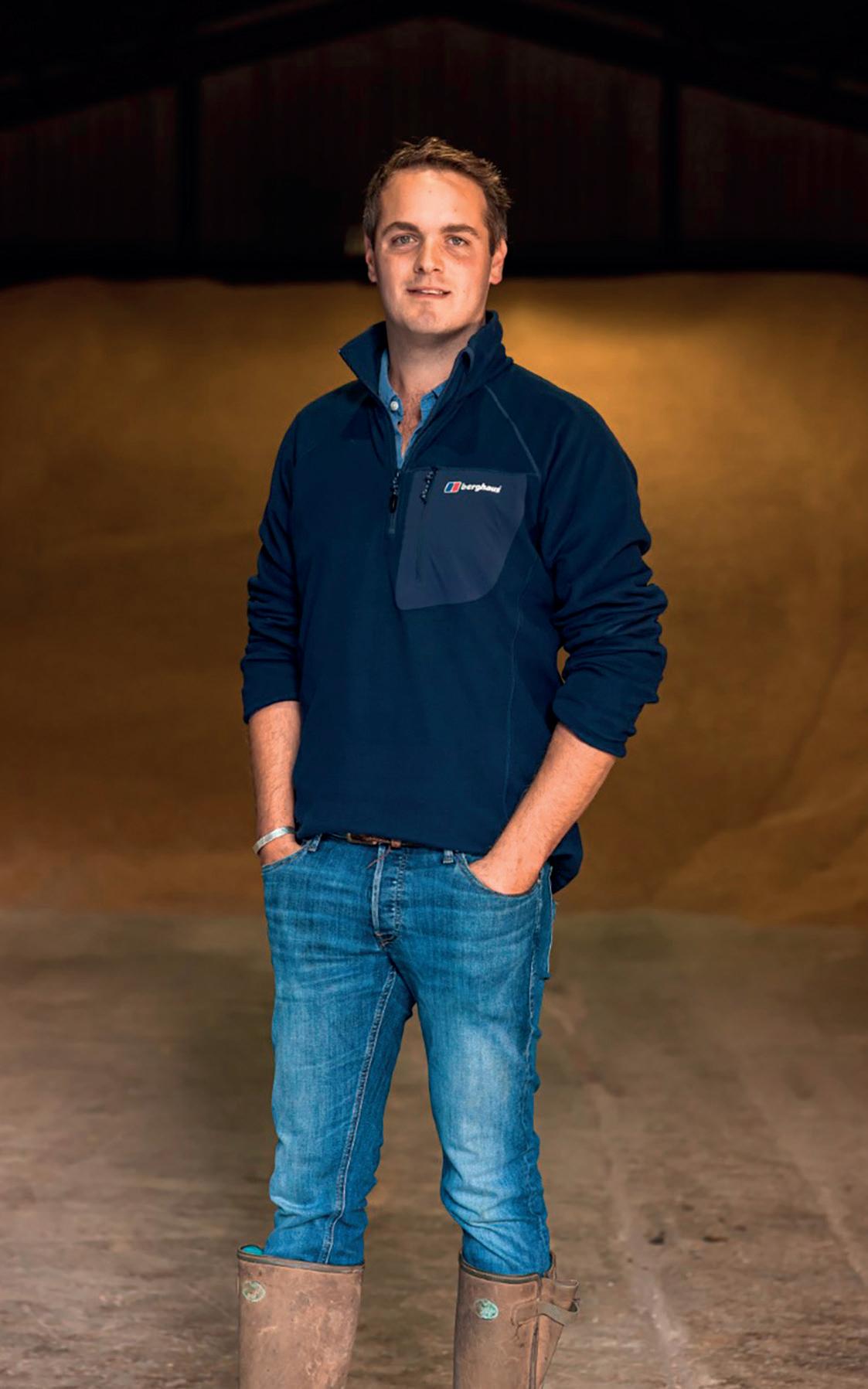
is dry and how much better they drain when it is wet.
“Increased biodiversity will help to improve soil health and long-term perspective of the ability to produce viable crops in 30-40 years.”

XLivestock integration is key for nitrogen requirements and managing disease risks
Insecticides have been cut out of the system for the past 10 years, alongside a more recent reduction of herbicides.
Instead, Mr Horton has
incorporated camera-guided hoes into the rotation to control weed burdens.
“The camera uses 3D technology to map the farm in real-time as it weeds. I do not aim for sterile, clean fields of cereals, but ones which are clean of pernicious weeds such as black-grass. I try and allow arable flowers like poppies, campion and speedwells to grow in the canopy to allow pollinators to flourish.”
Energy crops for anaerobic digestion can offer attractive alternatives for combinable crop growers, but what should farmers bear in mind before committing to a deal to produce crops or let land? Martin Rickatson finds out.
Combined with a longer term hunt for alternative breaks and new ways of weed control, disappointing early appearances of winter and spring combinable crops forced into wet soils this season have
left many growers questioning their cropping choices.
The anaerobic digestion (AD) industry needs feedstock material, meaning that in the right areas, there is a strong market for maize and rye. In future, could growers benefit from supplying energy crops as an

Anaerobic digestion crops can be grown on a tonnage rate sold to the contractor/AD plant operator, or via land let to the contractor/operator for the year.
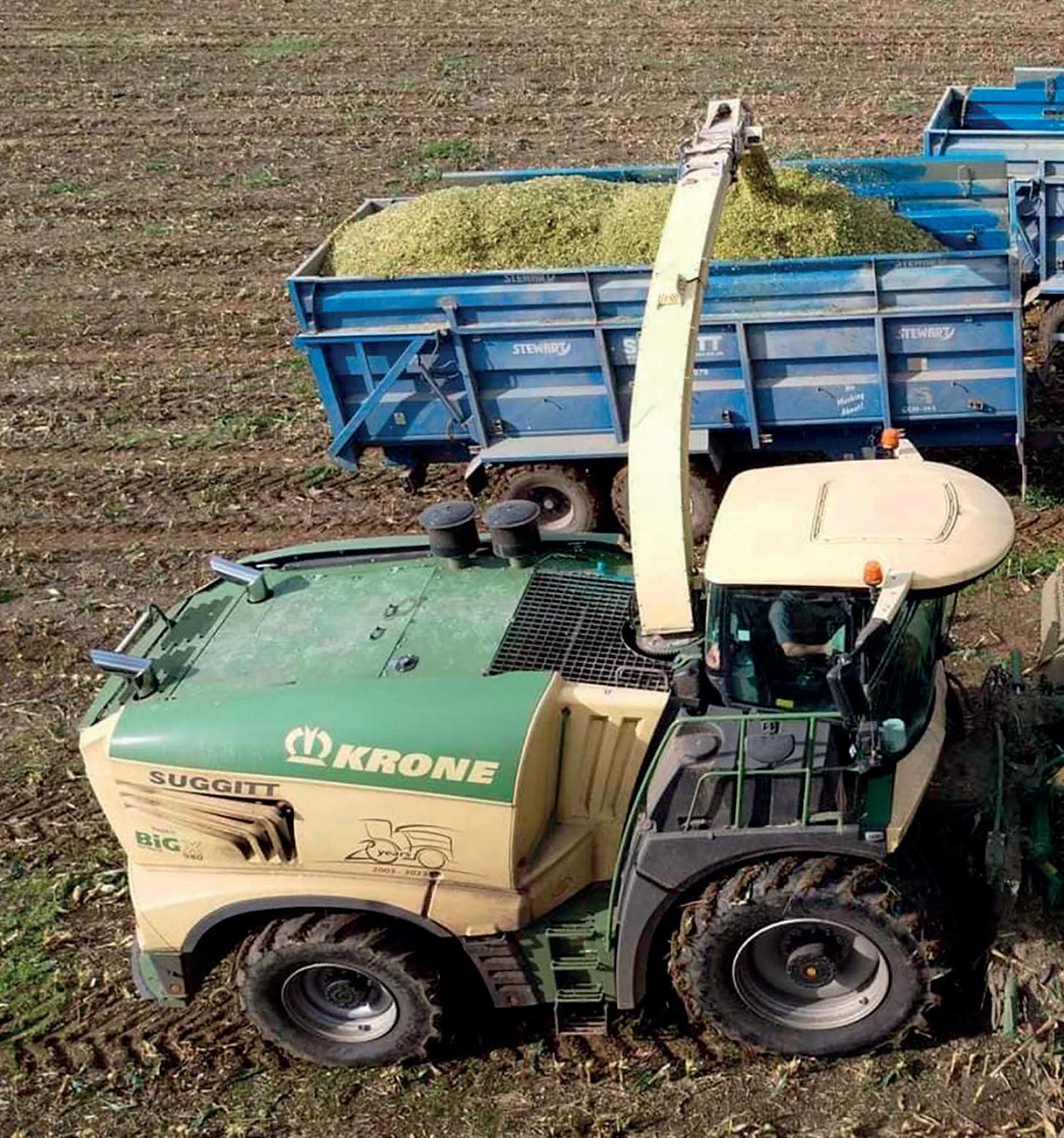
alternative to usual break crops or second/subsequent cereals?
Norfolk contractor Steven Suggitt believes these benefits from energy crops could soon become a reality for growers, due to the potential for doublecropping, nutrients and organic matter in digestate, development

of technologies, benefits of continuous ground cover and the financial security offered by such crops.
Suggitt Farm Services specialises in operations including maize drilling, forage harvesting, clamping of grass, wholecrop, and maize, digestate applications and feedstock supply to help meet the input and output needs of six East Anglian AD plants. There are a number of reasons why growing renewable energy crops as part of a farm’s rotation can make sense, says Mr Suggitt.
“Many farmers we work with are looking to extend rotations, and perhaps seeking a break that gives them the opportunity to tackle black-grass,” says Mr Suggitt, whose forage operation covers roughly 2,400 hectares of maize, rye and grass, having grown from a 600ha start in 2009.
“This year in particular, the lack of winter or even spring crop drilling raised interest from

Energy crops have the potential to offer a break crop alternative with significant benefits beyond the financial
SUGGITT
farmers seeking alternative cropping. Cereal crops need to go in well if margins are to be maximised, and lower grain prices plus sustained higher input costs have changed the sums for many growers. By contrast, it is still possible to put a maize crop in from mid-May to early June – although ideally it will have been preceded with a rye crop in the same year.”
This is where contract-growing for an AD plant, or letting land for a year to a plant
“Spray costs are also low – we do not spray rye at all and maize only for weed control. Rye is a great crop in an AD plant if it is cut at the right dry matter, which is ideally 32% – above this its performance in the digester is affected. In addition to ensuring it stays upright and giving us plenty of time to follow up with maize, this is another reason we like to cut early.
“There is an element of sacrifice about such a system, with cutting a few weeks early in late June meaning a slightly lower rye yield than might otherwise be possible, but on the other hand this helps ensure it does not lodge, and it is more than compensated for by the advantages of two crops and well-covered land.
biggest difference here, as well as careful forager and trailer drivers.
“The development of strip-till equipment has made a huge difference to the conditions in which we harvest and of the fields we leave behind, with land tilled only in the crop rows where the drill coulters will run, and the unmoved rows in between helping to support all later traffic passes from the digestate tanker to the forager and trailers.”
The potential for a late maize harvest to affect following crop plans may concern some farmers.
operator, can help ensure a guaranteed field income, he adds.
“With AD cropping, farmers know exactly what they are going to get. We make our calculations based on nitrogen costs, so that if these inputs rise, growers get paid more and vice versa, creating a fair and balanced deal that helps cashflow predictions.”
The best possible fully-integrated AD cropping system produces not one but two crops during a year, and needs no bagged fertiliser, making use of the nutrition and organic matter provided by solid and liquid digestate, says Mr Suggitt.
“We have established a double-cropping system, drilling forage rye in late October, harvesting that in the first week of June and then strip-till drilling with maize. There is therefore no soil exposed to erosion over winter, while the rye stubble helps bind the soil as the maize establishes.
“We do not use any artificial fertiliser – all nutrients for both rye and maize come from a solid digestate application before crop establishment, and a liquid application in the crop, the latter providing the most efficient use of digestate’s value.
“Typically, we incorporate solid digestate ahead of drilling either crop, then apply a liquid application to rye in late February and to maize in the middle of June. The solid fraction provides 7-8.5kg of nitrogen, 4kg/phosphate and 8kg/potash, while the figures for liquid digestate are 3.5kg, 3kg and 4kg retrospectively, so after digestion there is significant value in putting the residues back to land. Higher fertiliser prices have really raised our awareness of this.”
Weather-wise, maize is a safe crop to grow, adds Mr Suggitt, usually performing well in wet or dry seasons.
“Of course, it is generally the harvesting period that can present the biggest weather challenge, and last autumn was our wettest in 20 years. But changes in establishment technology are making the
He says: “But we begin maize chopping in the first week of September, in plenty of time for drilling of most first wheats or establishment of cover crops before spring cropping. Many eastern England growers often follow maize with sugar beet.”
Although, some land and some rotational slots may not suit maize, he adds.
“The worst thing about heavy land is the risk of a wet harvest, but I am convinced of the value of strip-till here. On welldrained and looked-after ground, a heavy land maize crop can do just as well, if not better, than a light-land one. But for a double-cropping system, you ideally need light land that will take digestate throughout the year.
“Rotational slots can also be an important consideration. We have been asked to drill maize after carrots which had been strawed, leaving behind not just a lot of material in the super soil profile, but also decaying straw which locked up nitrogen.”
There are two primary ways of producing AD crops for processing by a third party, says Mr Suggitt.
“When we started, we would rent the land and I would say to the farmers: if we exceed a

certain yield I will pay you a bonus; if I do not [exceed the yield] then you still get your rent.
“That meant we held each other’s hands and were in it together. Once they understood the low level of risk involved, they would often suggest a larger acreage the following year and we would move to a £/tonne deal.
“Some farmers want to do as much as they can themselves,
growing their own crops. We then cut the crop, buying it at a tonnage rate off our harvester.
This type of agreement, sharing the risk, is probably a farmer’s most profitable option, as they know their land and can put all their effort into getting the best crop from it. It is also probably the fairest option for both parties, and it is how we source 85% of our forage requirements.
“We do also rent land on which to grow AD crops, but as

Double-cropping with autumn-drilled rye cut in early June followed by maize offers both soilholding and income generation benefits.
we won’t know it well, the risk is higher and the returns potentially lower.”
In terms of maize varieties, anyone making their own selection and drilling their own crop should talk to their forage contractor and the AD plant they are supplying to determine what and when will be required, to match maturity and dry matter expectations.

“Having grown both AD and forage maize types, I am primarily seeking stay-green varieties. Some mature early and the leaves die off, meeting dry matter requirements but losing t/ha. With stay-green types, bulk weight is maintained without disrupting the dry matter too much, and they chop better too.
“Growing energy crops is part of a cycle – including the return of digestate – that some might call regenerative farming. But it also has the potential to contribute significantly to the farm’s bottom line. On our base farm last year, we earned £1,423/ha profit for the grower over two crops.
“Many farms face uncertainty, and with few other options to put through a combine, energy crops have the potential to offer a break crop alternative with significant benefits beyond the financial, including ones for soil health through the return of digestate.
“We – and I would imagine many other AD plants and contractors – would be keen to work with more farmers on a share-farming arrangement,” Mr Suggitt says.








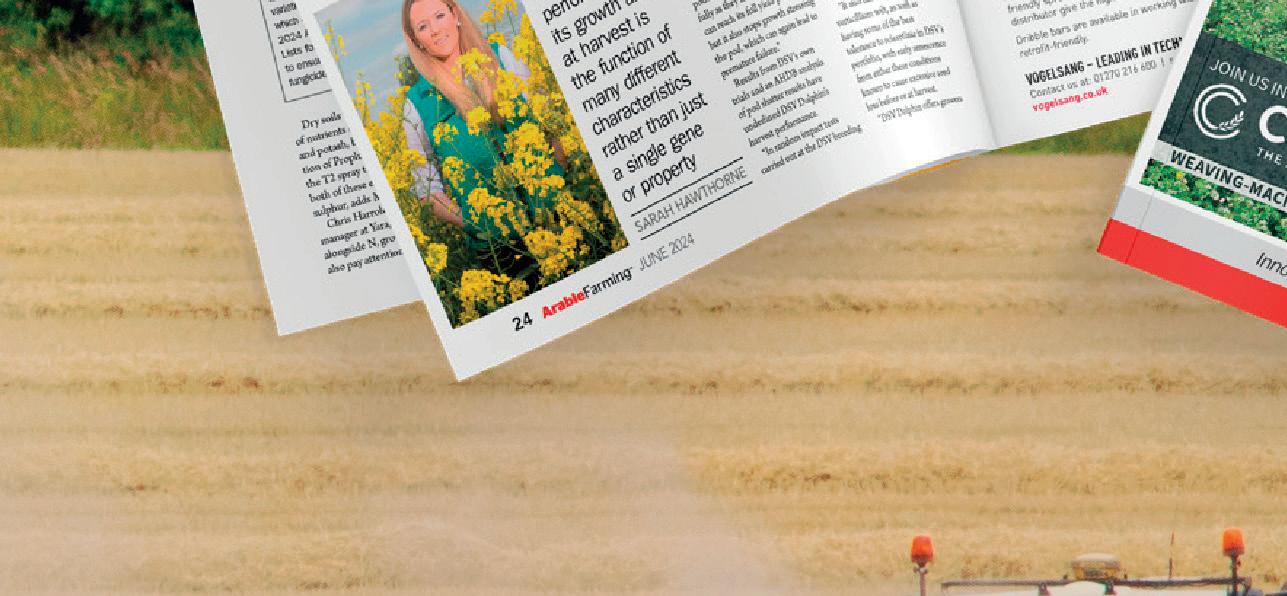





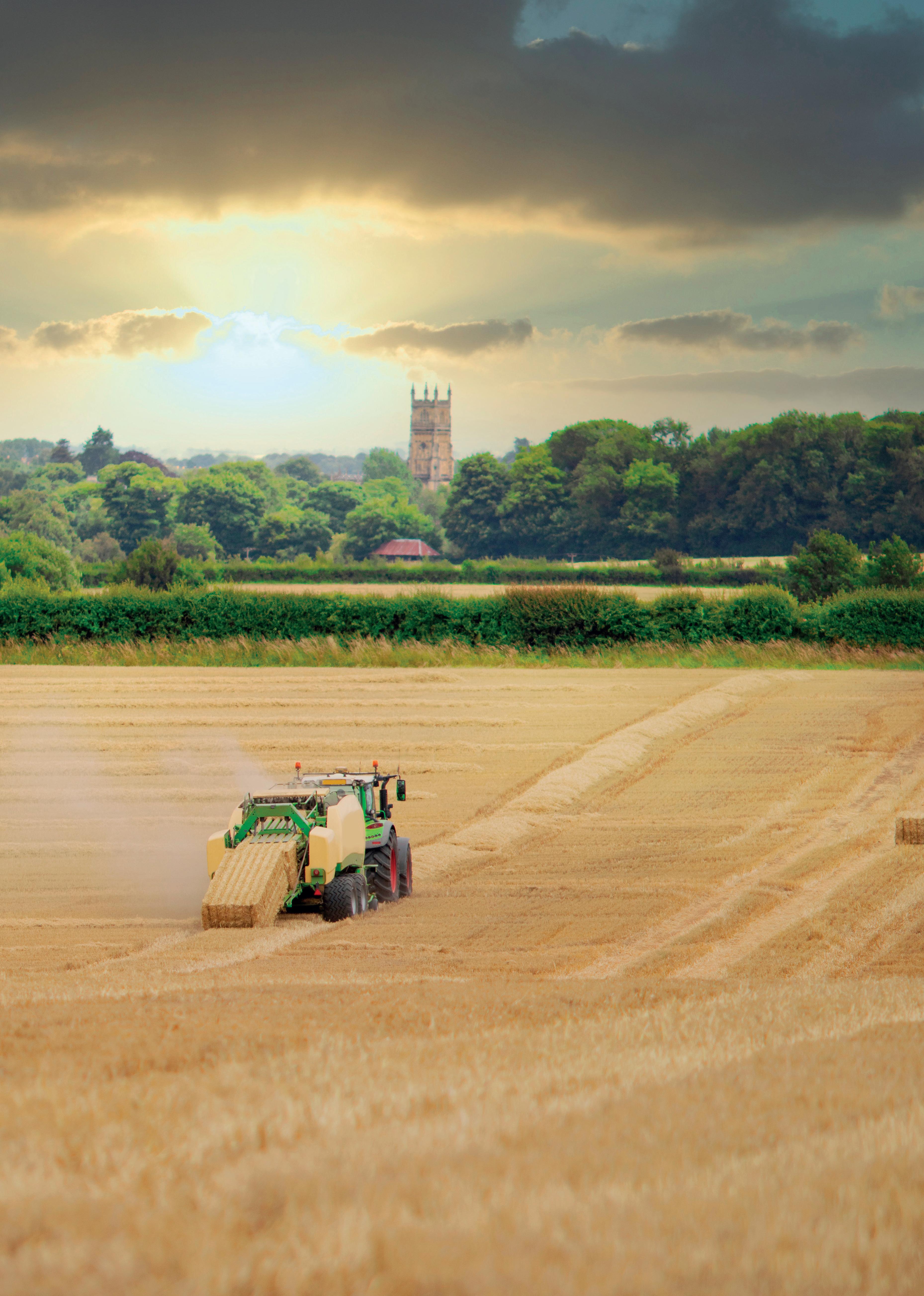
Advertising Deadline: Friday 16th August
There has been a heightened interest in grain maize this year, as growers seek to incorporate the crop into arable rotations and access routes to market. Arable Farming reports.



Grain maize has the ability to provide increased gross margins and less vulnerability to weather.
Technical lead at the Maize Growers Association (MGA)
Jon Myhill says: “With drilling happening later this year, grain maize can withstand more drought than other crops, meaning the consistency will be there in terms of October harvest yields.”
Arable producers considering
growing maize in the arable rotation this spring should find no shortage of demand for their crops, whether as forage or grain maize, according to MGA council member Will Oliver.
He says: “There are obviously local market opportunities for forage, and if you have a dairy or beef farmer nearby it is worth talking to them to see if they would be interested in the crop, and the same for anaerobic digestion.
“If you know of biogas plants in the area, try approaching them as they are usually open to
JMr Oliver says growers can now add to the gross margin through the Sustainable Farming Incentive, with actions for the use of cover crops, growing companion crops, and reducing insecticide use.
“Grain maize is a simpler crop to grow than wheat and gives you a lot more opportunities for black-
grass control, reducing aphid populations and soil improvement,” he says.
“Harvesting has never been a problem for us either. The header has a cutter that does much of the work in breaking up the stovers; there’s a straw chopper on the back and we simply direct drill on top of that,” he adds.
discussion about supplying them with maize for their digesters.”
Establishment for grain maize is often similar to forage maize, but the varieties have been tailored to focus on grain yield rather than overall yield. Growers should select varieties which mature early enough to fit in with the wider arable rotation and workload.
When growing maize specifically for a grain yield, Mr Myhill says much of the management is the same, apart from a reduced nitrogen application at the beginning of the growing season to enable an October harvest.
“Another consideration for grain maize is if you are following it with a cereal crop – make sure you have a robust fungicide programme as the crop is at risk of fusarium head blight carryover,” he adds.
Mr Oliver says that when it comes to grain maize, several opportunities exist commercially, with rising demand for it as a component of livestock and poultry feed.
He adds: “With all the emphasis on sustainable farming, it is a lot more environmentally-friendly –with fewer food miles involved – to use maize produced in the UK rather than ship it in from countries like the United States and elsewhere.”
Having produced grain maize himself for the last five years, Mr Oliver says he receives regular requests from the trade looking to buy the product, with the most recent approaches coming from both livestock and poultry feed producers as well as from operators of shoots.
“I would say the returns match that of a first wheat,” he adds.
“Last year, for example, we produced 9.6 tonnes per hectare and were paid £196/t. With drying costs to take it down from 30% to 15% moisture content at about £30/t and variable costs of about £300/ha, we still achieved a gross margin of approximately £1,200/ha.”
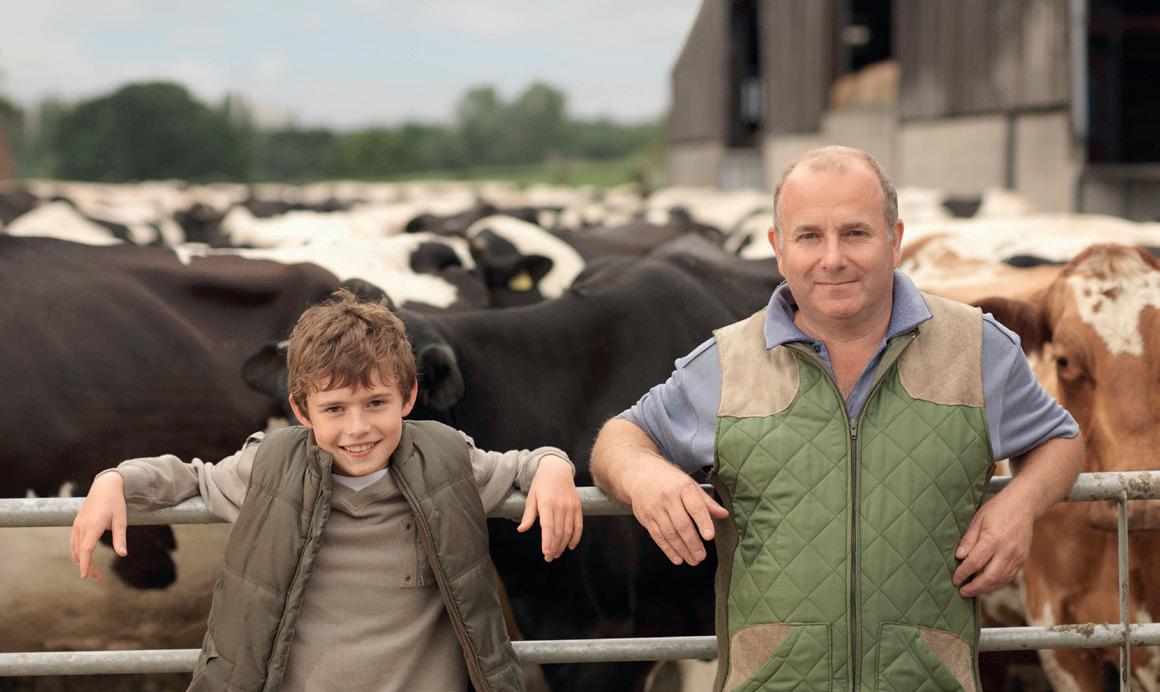
New for 2024 the British Farming Awards are looking to crown six worthy young farmers in the new ‘Young BFAs’! The Young BFAs are open to all young farmers aged between 6 and 16 years. The awards launch with four new categories:
Are you a young farmer who has gone above and beyond to provide support on their family farm under exceptional circumstances?
If you’ve stepped up or know a young farmer who has, enter now!
* Please note the nominee does not have to be a member of a registered young farmers club.
Junior 6 -10 / Senior 11-16
Are you a budding inventor or engineer in the making?
This award is looking to champion a young innovator who has an idea on how to make farming more efficient. This can be across any farming activity, but you need to be able to provide drawings with an explanation as to how your idea would work on the farm.
* Please note the nominee does not have to be a member of a registered young farmers club.
Junior 6 -10 / Senior 11-16
Are you a upcoming champion in the show ring?
The Young BFAs are looking for a young handler who has consistently performed within the show ring and being actively involved in rearing the livestock that has been shown.
* Please note the nominee does not have to be a member of a registered young farmers club.
Are you a member of a Young Farmers Club that has gone above and beyond to serve their local community or raise significant funds for a charity?
If your club has made a impact then let the Young BFAs know!
* This award is open to all Young Farmers Club that are registered with the NFYFC (England & Wales) or SFYFC (Scotland). There is no limit to the size of the club, or the age range within the club.
Visit the Young BFA website for full details! The deadline for entering the Young BFAs is Sunday 14th July. Shortlist winners will be announced in August.

With a growing number of arable producers diversifying to include a mixed farming approach, Arable Farming finds out what is involved when switching from crops to forage and fodder.
If you are considering incorporating livestock into your arable rotation, the first thing to appreciate is that feeds you grow on the farm, will always be the most cost-effective to use for your livestock, says Neil Groom, of forage specialists Grainseed. He says: “Home-grown feeds are the staple of economic livestock production with grass,
whether grazing off, cutting as silage, or maize, they are among the easiest crops for arable producers to adapt to.
“Maize has become increasingly popular with arable producers in recent years, for use on the farm as either maize silage, crimped grain maize, or to be sold off-farm where there is an increasing demand.
“By introducing a new species


into the rotation, maize also makes an ideal break crop allowing better control of weeds, improving soil structure and providing greater flexibility in terms of workloads and use of other resources.
“It is a relatively simple crop to grow with few diseases and is ideal for making the best use of farmyard manure and slurry produced by livestock, with often no additional nitrogen required beyond this.”
Variety choice is important and producers need to evaluate the climate they have available in their location before choosing which variety of maize to grow, he adds.
“In a more marginal area, you will need an earlier-maturing variety to ensure the crop will finish properly with lower levels of heat, but in warmer climates, a later maturing variety will be more appropriate.
“The key point is not to be greedy and go for all-out yield. The benefit in maize for livestock lies in the starch and energy and if you have a variety that will not finish properly because it is a later maturing high yielder, you will simply end up producing greenery, which, although full of sugar, is missing the magic of maize starch.”
Grain maize is another increas-
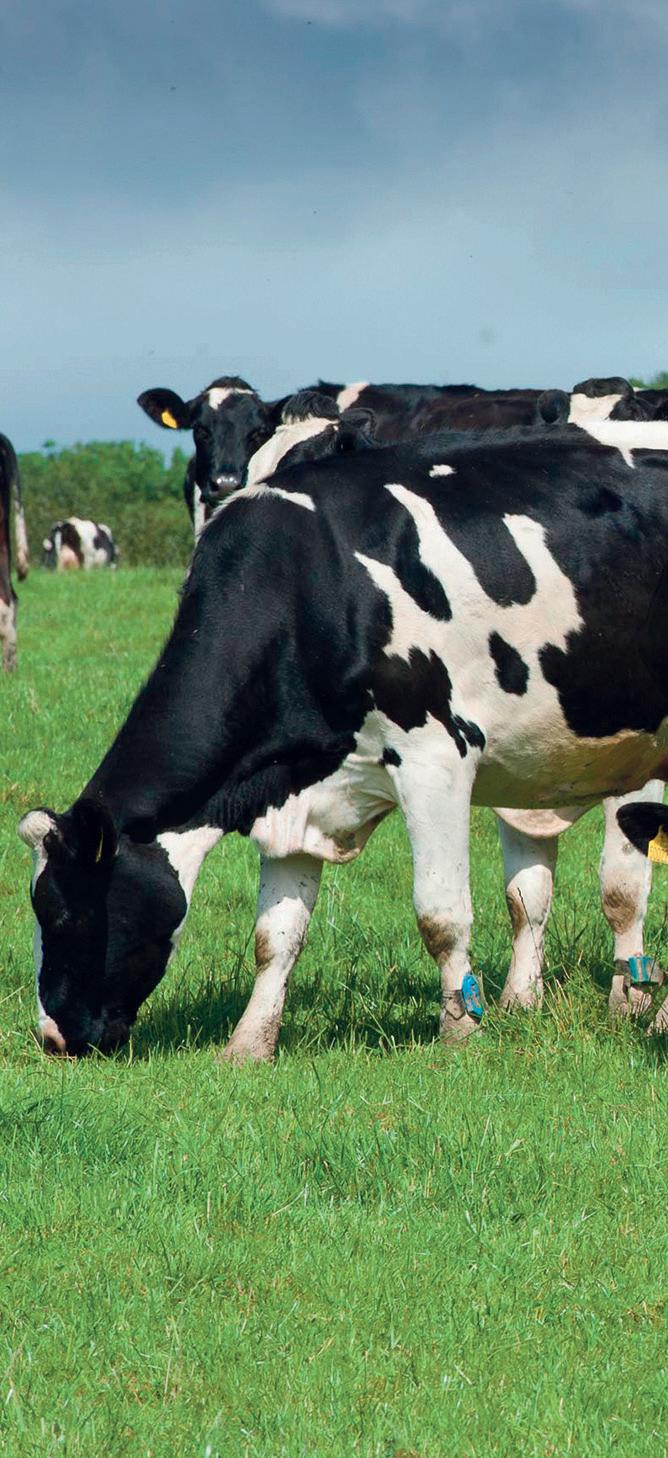
ingly popular and easy to grow livestock feed, Mr Groom says.
“Harvesting grain maize typically occurs six weeks after silage and this will usually be in November for most maize growing locations in the UK.
“The plants keep the soil dry and by using a tracked combine very little damage is done to soil structure. The maize header plucks the cob from the plant and then flails the plant’s leaves and stems so that the combine tracks operate on a mat of plant material.
“The grain moisture is typically 30% and therefore the grain needs to be crimped moist with an additive or rapidly dried down to below 15% moisture content. Crimped maize is a good concentrate replacer for ruminants, with a very high ME of 14.5 and 70% starch.”
According to Jim Juby, of Horizon Seeds, variety choice is also key when choosing seed mixes for grassland, with end-use being one of the key criteria.
He says: “Where possible decisions on which type of seed to buy should be made on what it is going to be used for, with

mixes being much more robust than single species varieties.
“Mixes generally have a greater resilience to disease threats, as well as an improved ability to cope with diverse growing conditions than single species.
“A good starting point is to ensure all varieties in a mix are on the current AHDB/British Grassland Society/British Society
of Plant Breeders Recommended Grass and Clover lists.
“A lot of advances have been made in recent years, especially in critical areas such as performance consistency and response to nitrogen, so understanding what is in your mix will also help you establish the likely milk yield you can expect from your grass.
“Specialist cutting and grazing mixes will always outperform more generic options but modern dual-purpose leys are very good.
“A good quality silage ley should be capable of producing 18–20 tonnes of dry matter per hectare and a grazing ley should be not too far behind this. But achieving such benefits means investing in good quality seed.
“Payments under the new Sustainable Farming Incentive options can help pay for seed and drilling, simply adding in clover to the mix qualifies for NUM2 legumes on improved
grassland or a full herbal ley can be sown under SAM3,” he adds.
Once you have gone to the trouble of growing the best home-grown feeds you can, you do not want to lose them through poor silage-making, a practice often foreign to arable producers, Mr Juby adds.
“Use a high oxygen barrier [HOB] film on your silage clamp to reduce wastage and ensure as much of the forage energy clamped is available for milk or meat production. Don’t forget to use side sheets, too.
“Used properly, surface spoilage can be virtually eliminated, and top-layer shrinkage losses reduced considerably. A modern Silostop HOB film is also 100% recyclable and can reduce plastic usage by 50%.
“A good oxygen scavenging silage additive such as SiloSolve FC can also help reduce wastage in the clamp,” he says.




The days of ‘one-size-fits-all’ approaches to crop nutrition are over, as growers seek to reduce production costs and improve the sustainability of their enterprises.
This is why the FACTS training and certification scheme is increasingly important for many involved in the countryside.
Today, around 3,700 people are FACTS-qualified and the past year has seen a significant increase in the number of candidates coming forward to gain the qualification, managed by BASIS Registration.
Susan Twining, who chairs the FACTS management committee, which oversees the scheme, says that in 2023 some 325 people studied for the examination. This compares to about 270 in each of the previous two years.
The people who seek the FACTS qualification come from many varied backgrounds. There are those who advise growers on how to manage crop nutrition needs and there are also farmers and farm managers. However, there are those who work for water companies and other related disciplines.
For many younger people, studying for a FACTS qualification is one of a number of steps to gain professional qualifications which over time gains them the professional qualification of a BASIS diploma in agronomy. This is a significant achievement for
The latest news for BASIS and FACTS-qualified farmers and advisers.

anyone’s CV, reflecting a serious commitment to the industry.
The scheme is also recognised officially by a number of key organisations, including Defra, the Environment Agency and farm assurance schemes, including Red Tractor.
While long-established, FACTS is continually updated to reflect the latest needs of the industry. Each year, in order to retain their FACTS-qualified adviser status on the BASIS professional register, members must undertake an online assessment on a topic agreed by the industry representatives who sit on the FACTS committee.
Ms Twining says: “The online assessment is now
well-established and provides the flexibility to adapt to the changing needs of the industry and regulators.”
A particular driver for professional crop nutrition advice is the requirement under the Sustainable Farming Incentive (SFI), for the production of a nutrient management plan.
This has led many farmers to seek the professional advice of agronomists or become FACTS-qualified themselves.
Nutrient management plans need a comprehensive overview of crop nutrition, taking into account existing nutrients in the soil, the use of organic manures, as well as artificial fertilisers. Then considering both the needs of the crop and the potential for nutrient loss, particularly to watercourses.
Ms Twining says: “It is a balancing act. We see an increasing need to pay attention to environmentally sensitive use of nutrients.”
This sentiment is echoed by Hannah Clarke, who gained her FACTS qualification in March 2023. She trained at the University of Lincoln with Dr Simon Goodger. While enjoying the course, she was grateful for extra support from colleagues experienced in nutrient management within Frontier. While she found the examination tough, not only did she pass the examination, but she was awarded the Brian Chambers Trophy. This trophy was set-up as a tribute to the late Prof Brian Chambers – a pioneering soil scientist – who passed away in 2014. Each year, it is presented to the highest achieving FACTS candidate.
Ms Clarke says: “The course covered a wide range of issues in depth.”
For the past six years, Ms Clarke has worked as a central technical adviser for Kings Crops, part of Frontier Agriculture. Kings is focused on cover, conservation and forage crops.
Ms Clarke is also the delivery lead for SFI within Frontier, which means understanding the implications and the opportunities the incentive offers farmers.
She says: “The introduction of SFI with its requirements for nutrient management planning has led to a considerable
increase in requests for our agronomists to support farmers who are applying for SFI.
“At Frontier, we are offering our customers a compliance service which enables them to understand their current status as far as crop nutrition is concerned.
“We also guide them in developing a plan and monitoring their progress. It requires some in-depth discussions, as we help balance the needs to grow profitable crops and also reduce environmental impacts, especially on soil and water.”
Ms Clarke has recently joined the BASIS environmental adviser register, a qualification which again endorses her professional status and the work she does.
She is also looking to undertake further BASIS courses and is particularly interested in the environmental course, which leads to the

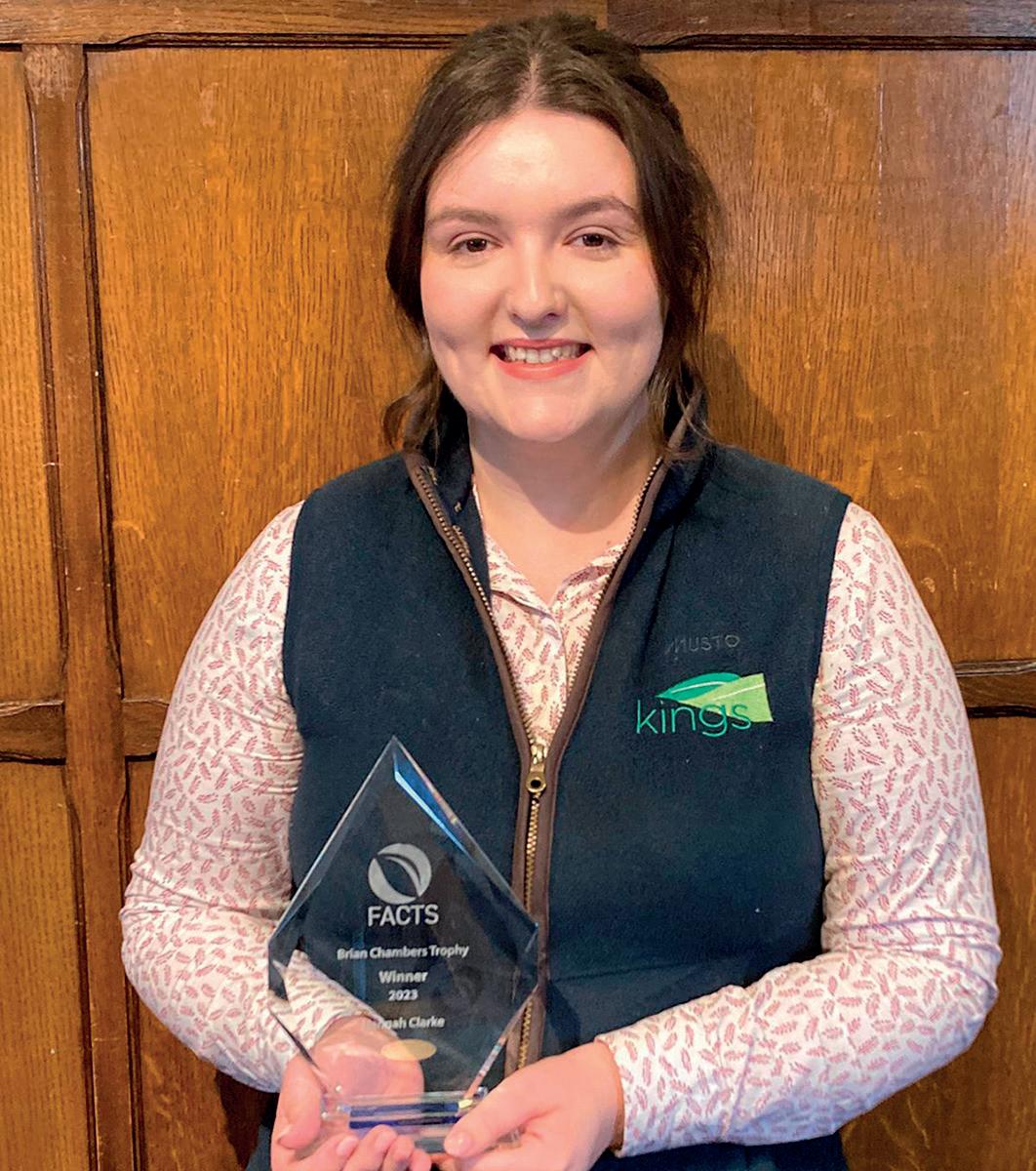
‘certificate in greenhouse gases, carbon and climate change mitigation’, which will be particularly appropriate to her role.
She says: “When it comes
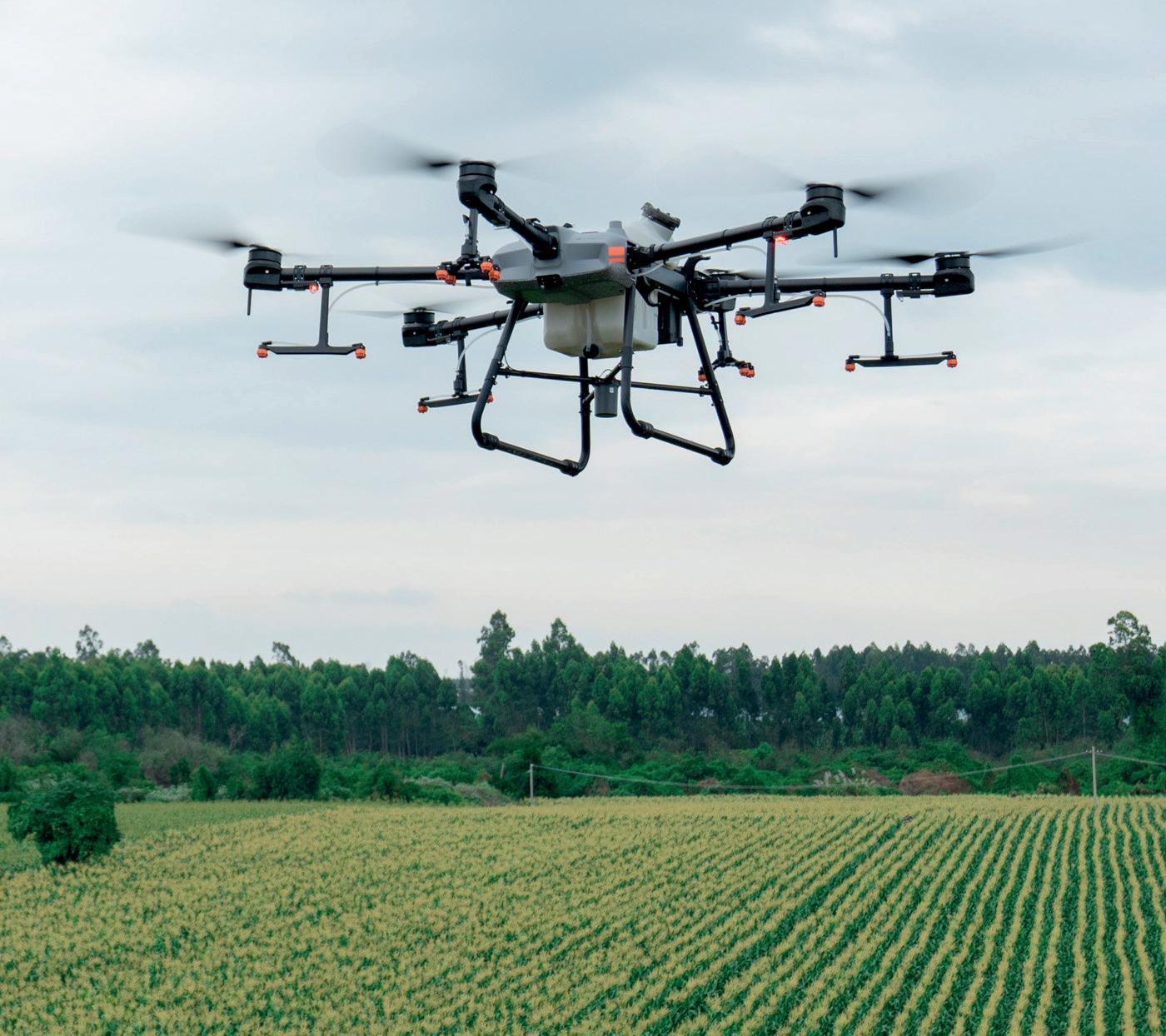



to crop nutrition, the focus is now shifting to decision-making which takes full account of the needs of crops to achieve nutrient efficiency.
“This requires detailed knowledge which the FACTS qualification has really helped me gain.”
To enhance the knowledge gained from achieving FACTS-qualified adviser status, BASIS offers a wide range of courses to build on the foundation of knowledge.
For crop nutrition, these include the advanced modules: ‘BASIS quality of soils’ and the ‘BASIS certificate in plant nutrition – waste to land’.
Among the range of environmental courses are ‘principles of sustainable land management’ and a ‘soil and water management’ certificate.











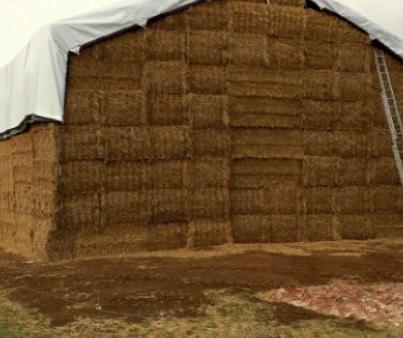




















The Farming Equipment and Technology Fund grant scheme has several new products added for arable farming businesses. Toby Whatley looks at some of the highlights.
The Farming Equipment and Technology Fund (FETF) has been reintroduced for 2024, with the list of eligible items divided into three funding groups: productivity, animal health, and welfare and slurry management. Significant cross-over between the three sections means potential applicants should review all the items to ensure that they are
applying for and making the best use of the funding options available, particularly if products are required for multiple different parts of a business.
Maintaining the change introduced in 2023, the fund has remained open to contracting firms alongside farmers, forestry and horticultural businesses.
The maximum value awarded for productivity and slurry items has

been capped at £50,000, with the animal welfare items capped at a lower £25,000.
All schemes have a minimum grant value of £1,000. The grant to capital value for items has been set at 50 or 60 %, based on a Rural Payments Agency (RPA)-generated average cost for the items.
The grant values do not cover the total cost of the items listed and businesses are expected to fund
JPredominantly developed by Dutch farmers, a pressurised field drain cleaner is designed to be used with existing land drains to remove blockages of silt and organic material to improve water discharge and drainage capacity from the land.
The machines can provide farmers with the means of improving the field drainage infrastructure without the cost of installing new pipework and runs, which could be attractive for businesses on shorter term Farm Business Tenancies.
JTypically positioned below the chaff spreaders, combinemounted weed seed destroyers mill, or grind, weed seeds within the chaff to prevent their germination viability.
Operating separately from a straw chopper, eligible units must be suitable for retrofitting to either new or current
combines and be capable of processing weed seeds through milling, grinding, smashing or cracking to make them unviable. Units are driven from the combine, typically from a hydraulic connection.
A maximum grant of £35,548 is offered with an expected average cost of £59,248.
the remaining balance. The scheme cannot be used to fund items which have been bought through hire purchase or leasing, second-hand, ex-demonstration or products businesses already own.
The list of products for arable farming is extensive and has been expanded to include new products for weed seed control, chemical induction and mixing and the improvement of field drainage.
Eligible machines must provide a minimum flow of 200 litres/minute at 50 bar and be supplied with a minimum of 100 metres of cleaning hose. The pressure nozzle design should self-propel the hose into the drain. Water pressure is generated from a pto-driven pump, with cleaning water drawn from the watercourse through a suction pipe.
A maximum grant value of £6,153 is offered with an expected average cost of £12,306.


JTwo new closed transfer system (CTS) options have been added for spray operators divided into two different container sizes.
The systems are designed to allow a direct connection between the plant protection product container and the sprayer induction system to facilitate the transfer of chemical into the sprayer tank without the operator opening and pouring the product into an induction hopper.
The first item, FETF419, is designed for containers of more than 20 litres which include IBC 1,000-litre bulk tanks.
Eligible systems must have a coupler to an IBC tank which provides a dry-break
connection which complies with ISO21191.
Units must include an in-line flow meter with an inaccuracy of less than 1% and have a control valve to control flow with a minimum of three metres of delivery hose. Systems should be fitted with a rinse socket for connection to the transfer system for flushing and cleaning of the system.
A maximum grant value of £756 is offered for FETF419 with an expected average cost of £1,260.
The second FETF-eligible transfer system is provisioned for smaller sub-20-litre containers. FETF420 differs from FETF419 as the system must be attached to the


sprayer, but does not have to include a flow meter.
Although a different design of the coupler may be used to connect with the caps of smaller containers, it must still provide a dry-break connection and comply with ISO21191. The system must allow air into the container while connected to the coupler to aid emptying into the sprayer and have an integrated rinse facility to allow containers to be rinsed.
Existing chemical induction systems do not need to be removed for FETF420-eligible systems to comply with the grant criteria.
A maximum grant value of £2,302 is offered for FETF420 with an expected average cost of £3,838.
JReflecting the procedure for previous funding rounds, the application timing for the three funding groups varies. Three funding rounds for applications are being provided throughout 2024, with the RPA recommending interested parties register for the support to receive updates on when the rounds will open and close throughout 2024.
Commenting on the funding provision, NFU senior support schemes adviser Richard Wordsworth says: “We encourage farmers to look at what is on offer with this scheme, consider the requirements for their farm and if this is right for them, register using the online portal and then make their applications as quickly as possible and, if accepted, give themselves as much time as possible to make the equipment purchases, remembering the rules around paperwork, audit trails and finance options.”
rApplications to all sections of the FETF scheme are made online through the RPA website at gov.uk/ government/publications/ farming-equipment-andtechnology-fund-2024.




We catch up with eight agronomists from different UK regions to discuss how crops are looking and what the next steps might be for growers.
JA much-anticipated run of drier weather during April enabled growers to make good progress with planting spring crops in my area.
Cereals aside, most were sown in reasonable time and acceptable conditions. Given a decent growing season, they should perform well.
Potato planting started between showers in early April, with growers grabbing every opportunity. Soils were wetter and colder than ideal and it was hard on machinery and costly in diesel, but had we waited for perfect conditions we would have been too late finishing.
Windy conditions helped soils dry and, at the time of writing in mid-April, I anticipated all potatoes would be in the ground by the second week in May, only a couple of weeks behind normal. We will start blight programmes at the rosette stage. The new blight strain EU_43_A1 which appeared in the Dutch crop last year is increasing on the continent, but even without that, we’ve spent so much establishing the crop that trying to cut corners is definitely not a good idea.
With a bigger area of maize to drill this spring, largely due to the loss of a large amount of forage rye to slugs and saturated soils
last autumn, growers have been pressing on. Drilling looked likely to be completed by the middle of May, so not far off target.
I’ll be using Luxor (fluroxypyr) + Calfite Extra with the postemergence herbicide to help crop rooting, particularly on stronger land where deep cultivations were not possible. The application worked very well last year and was a very cost-effective option.
I am also continuing working on the ‘Robotti’ project, a 60-hectare robotic sugar beet planting and weed control trial, partnered by Sentry, Autonomous Agri Solutions, BBRO and British Sugar.
JWet weather has continued to disrupt growers across the region. Most winter cereals in the ground are struggling with poor rooting caused by consistently wet and anaerobic soils, and most cereals have received some nitrogen fertiliser. However, in some circumstances, even this has not yet been applied.
Consideration must be given to the rate of N, particularly on thin barley crops where apical dominance of the main tiller is to be avoided.
Disease pressure in the area is very high, with key diseases, such as septoria, being found
readily in wheat crops, even in varieties with a high resistance score, such as KWS Extase.
This, combined with the fact many crops have not received a T0 fungicide, will be putting high pressure on application timings. Yellow rust and eyespot are also being actively found in a large proportion of fields.
Careful consideration needs to be given to product selection on crops with a limited yield potential caused by the adverse winter and spring weather to maximise economic returns.
As many fields are still to receive herbicide applications, grass-weeds such as brome are starting to get
large and, as such, chemical control will be limited.
At this late point it is also worth bearing in mind maximum growth stages that herbicides can be applied to crops.
By this point in the year, spring cereal drilling would usually be coming to an end. However, very little has been planted yet, and with the window for drilling and achieving a high yield potential closing quickly, many growers are starting to explore alternative options, such as growing maize or cover cropping, the latter of which offers a good opportunity to rectify compaction issues.


JWith a spell of drier weather finally giving some respite from the rain, there has been the beginnings of spring drilling taking place for many over the last few days.
Although it is a later start than we are used to, the calendar date alone should not be used to limit the potential of these crops.
Winter cereals are progressing through the growth stages despite their struggles.
Many winter barley crops were sprayed at the T1 timing this week and are generally less affected by the weather over the last few months, having been established in more typical conditions before the rain started.
for Scottish Agronomy, Angus to the Scottish borders
Many crops did not receive the planned T0 pass, due to a combination of ground conditions and a lack of spraying days. Undoubtedly, there will be largerthan-ideal tank mixes going onto crops at the T1 timings this year as we look to combine fungicides, herbicides, growth regulators and nutrition into one pass.
Winter wheat crops are more mixed, with the T1 timing likely to be spread over a four-week spell throughout Scotland, with the earliest started at the end of April. Septoria is easy to find at the bottom of susceptible soft wheat varieties, and robust fungicides will be required to get the programme off to the best start.
Meanwhile, yellow rust pressure, the bigger threat to many of the hard wheat varieties now being grown in Scotland, remains low even in coastal areas.
Oilseed rape crops are nearing the first flowering spray. The exceptionally wet spring has favoured light leaf spot development, and it is not hard to find in susceptible varieties.
Add in pigeon grazing which has created uneven crops and it is likely to be another prolonged flowering period. As a result, for most crops, a two-spray fungicide programme will be best to protect sclerotinia throughout the period of petal fall.
agronomist in
South Yorkshire, North Nottinghamshire and North Lincolnshire
JOne of the main challenges in a year such as this year is getting the expenditure right on the more marginal combinable crops.
In my part of the country, we have really struggled through the season, with the toughest autumn in memory followed by one of the wettest springs.





The T2 fungicide is the most important fungicide timing to get right, with the flag leaf providing nearly 50% of final yield and eradication activity needed down to protect final leaf 2, which contributes around 20% of final yield.

Unfortunately, this has left us with some difficult decisions to make about winter cereal crops, with some of them having limited yield prospects.
Unfortunately, the irony is not lost on me that this year for the first time in a long time we have the options of five, possibly six, good strong fungicides to choose from, in a year when we have the least amount of wheat in the ground for the last 20 years.




As this is due to be with you mid-May, I thought I should highlight the importance of the T2 fungicide. At the time of writing, it is still raining hard and the disease pressure on winter crops is very high with varieties, such as Skyscraper, looking particularly filthy with septoria.
Growers must remember to look hard at the fungicide dose response curves (free from AHDB), be aware of the price of each fungicide, know their variety disease ratings and finally consider the yield prospects on a field-by-field basis.
Continues over the page.
J Most of the spring cereals and pulses which will be going in this spring have already been drilled, but a few crops – particularly spring barley – have been bypassed in favour of maize as it has got too late for the spring barley to be economically viable.
We are quite fortunate in the West that we can be reactive and flip to forage maize, as I think here we suffer worse in autumn, with a wet harvest which can get late for forage maize let alone waiting for grain maize, and we tend to have a really strong local market for the forage.
Off the back of a wet winter, roughly 10-15% of winter cereals had failed and growers have either decided to patch the crop, if the failures are within sensible-sized areas, or chosen to convert any larger, one- or two-hectare
patches, to a summer cover crop to not disrupt the future rotation by redrilling.
If you were completing your BASIS qualification this year, you certainly would not have to look far to see disease as there are not many wheat varieties which are not getting some sort of yellow rust or septoria challenges.
We usually get a lot of septoria in the West, but I think since 2012 this is one of the worst seasons. I have also seen a lot of mildew in earlier and more stressed crops and lots of eyespot.
Many growers did not manage to apply a T0 fungicide this year due to not being able to travel, but I would say most of the T1 sprays are now on-farm if not already applied, and T2 is quickly coming around.
JWith between three and five times the amount of average rainfall for each month since January, it has been a challenge.
Acceptance is the only solution I have to poor weather, but it has led to many revised crop recommendations as the season ‘concertinas’ into an increasingly tight window. Wheat development is varied depending on drilling date, altitude and variety.
We aim for T0 at leaf 4 emergence, but have had a trade-off in optimum timings for fungicides and PGRs. Chlormequat can’t shorten
crops once nodes have extended – so mixes have been tweaked as timings are compromised.
Early drilled lowland wheats were covered in early April, most late drilled wheat was only fit a fortnight later.
This potentially leaves a short gap (10 days or so) to T1, if the current cold snap doesn’t hold back leaf 2 emerging, but that is certainly better than a gap of four-plus weeks.
Many had a ‘T0 lite’ added to a herbicide, so T1 will be robust in terms of fungicide and PGR.
There is significant septoria about, with yellow and brown rust in susceptible varieties.







SDHI + strobilurin +/or azole with a multisite will form the bulk of my recommendations.
Winter barley is moving quickly, so will be getting a top-up of PGR and nutrients when the second fungicide goes on.
While straw prices are high, it is worth remembering just how much late height barleys put on, as straw is worthless if it’s flat.
Patches of barley yellow dwarf virus are evident in some crops where spray windows were missed. There is scant evidence of economic benefit to treatments after growth stage 31, but
avoiding significant nutritional deficiencies can mitigate its effects – manganese, zinc and sulphur top-ups will help. Winter rape is well into early petal fall and has received its first flowering fungicide. This will need to cover multiple diseases – primarily sclerotinia and phoma.
Some varieties will also require activity against light leaf spot, alternaria, botrytis and powdery mildew to keep the crop clean. Maintaining green leaf area is critical for rape varieties to achieve their potential oil content and the premium is needed.
Andrew Watson NIAB head of technical membership services and agronomist in Norfolk and Suffolk





JWe are now at a point where what is going to be drilled this year has been, but there is still a small percentage of land which was destined for spring cereals that was not able to be drilled.
Some of that area might end up as fallow and some might end up in a summer cover crop.
Roughly 70% of the planned winter wheat has gone in, with some of the more challenging areas struggling with high weed burdens.
Rust diseases are only really showing in susceptible varieties, with brown rust seen in DSV Champion, Crusoe and many other varieties on the AHDB Recommended List with disease ratings of 5 of less. Yellow rust is also evident in the usual candidates, including RGT Skyfall and KWS Zyatt.
I would describe current septoria pressures as quite high, although this varies depending on variety and drilling date.


However, some of the earlier drilled winter wheat is coming up to flag leaf timing and looking well, but the later drilled crops from December/January are looking quite small, with emerging yellow rust pressures.
The weather between T1 and T2 can determine the disease pressures of the year, if we get more rainfall and showery weather, the risk of septoria goes up and, so far, that is exactly what is happening.
Septoria pressures are higher than normal, as we keep getting rain every few days and, each time it rains, it creates a splash event, which spreads the septoria up the plant.
I am advising my growers not to skimp at T2 and go with robust products. If you have a choice between a lower and a higher dose of fungicide at T2, you are probably better to pick the higher rate.
JThe weather has continued to dictate what and when any field work can be carried out. Thankfully, the rain is limiting itself to regular showers rather than inches at a time and the wind has helped dry spring seedbeds.
The unsettled weather limited the opportunity for T0 fungicide sprays and carried on during leaf 3 emergence, which seemed to be about 10 days earlier than last year.
Conditions have been perfect for septoria development, with rust being present in the usual varieties, and Zyatt being the main one
succumbing to yellow rust and brown rust prevalent in early drilled Crusoe.
In most cases, rust has been held by the T0 (where applied), but where intervals have been more than two weeks, it has started to appear again. Weather conditions going forward will dictate how disease pressure develops and how robust the fungicide programme needs to be.
One positive is we have had a good year for new fungicide registrations, with two new actives available to consider.
Isoflucypram (Bayer) was registered before the start of the season and, more recently, Pydiflumetofen (Syngenta). They are both carboximide chemistry and, from the AICC trials results, prove to be a positive addition to fungicide options.
Oilseed rape crops are looking promising. Showers throughout flowering have raised the potential risk of sclerotinia and, if the flowering period is extended due to the cooler conditions, a second application may be required.
Spring drilling has gone well, with generally good seedbeds and establishment.
The last 18 months have been perfect for slugs and they have been active on heavier soils. There has been a noticeable difference in populations following overwintered cover crops.
Where there have been brassicas in the mix and using glyphosate to destroy the cover crop, slug numbers have been challenging to keep under control. Where they have been grazed by sheep or the mix has been based around phacelia, vetch or linseed, there has been a dramatic difference in numbers.
Valtra has developed a retrofittable self-levelling system for mounted fertiliser spreaders to improve the accuracy and consistency of spread pattern. Toby Whatley reports.


Without its own range of fertiliser spreaders, the introduction of a self-levelling system for these implements initially appears an
unexpected development from tractor manufacturer Valtra, however, the brand highlights that the technology has been created to be retrofitted to any manufacturer’s model of spreader and can integrate with all tractors from its range.

The system is offered through the manufacturer’s Unlimited Studio and is a project developed through Agco’s SmartAg Engineering team as part of the brand’s farmer-first strategy.
Valtra highlights from its own research that changes in the angle of the spreader through weight variation from a full to empty unit can result in an up-to three-degree angle variation of the discs and spreader deck.
This is claimed to result in a correct application calibration for approximately 20% of the total application cycle.
Valtra says that a full spreader will pitch backwards and create a narrower applied band with areas missed, while an empty spreader will lean towards the tractor resulting in a wider
application of the product outside the target bout width.
This issue can be exaggerated when using larger capacity spreaders and carrying significant front ballast to counteract the implement’s mass.
Testing with a Danish arable farm, Valtra claims this variation away from the correct position was found to have a negative average effect of £17/ hectare in lost yield through differences in crop performance. Changing to applications using automatic levelling, the negative effect was reduced by an average of £13/ha.
The system uses a combination of a hydraulic top link and a pair of radar sensors mounted at
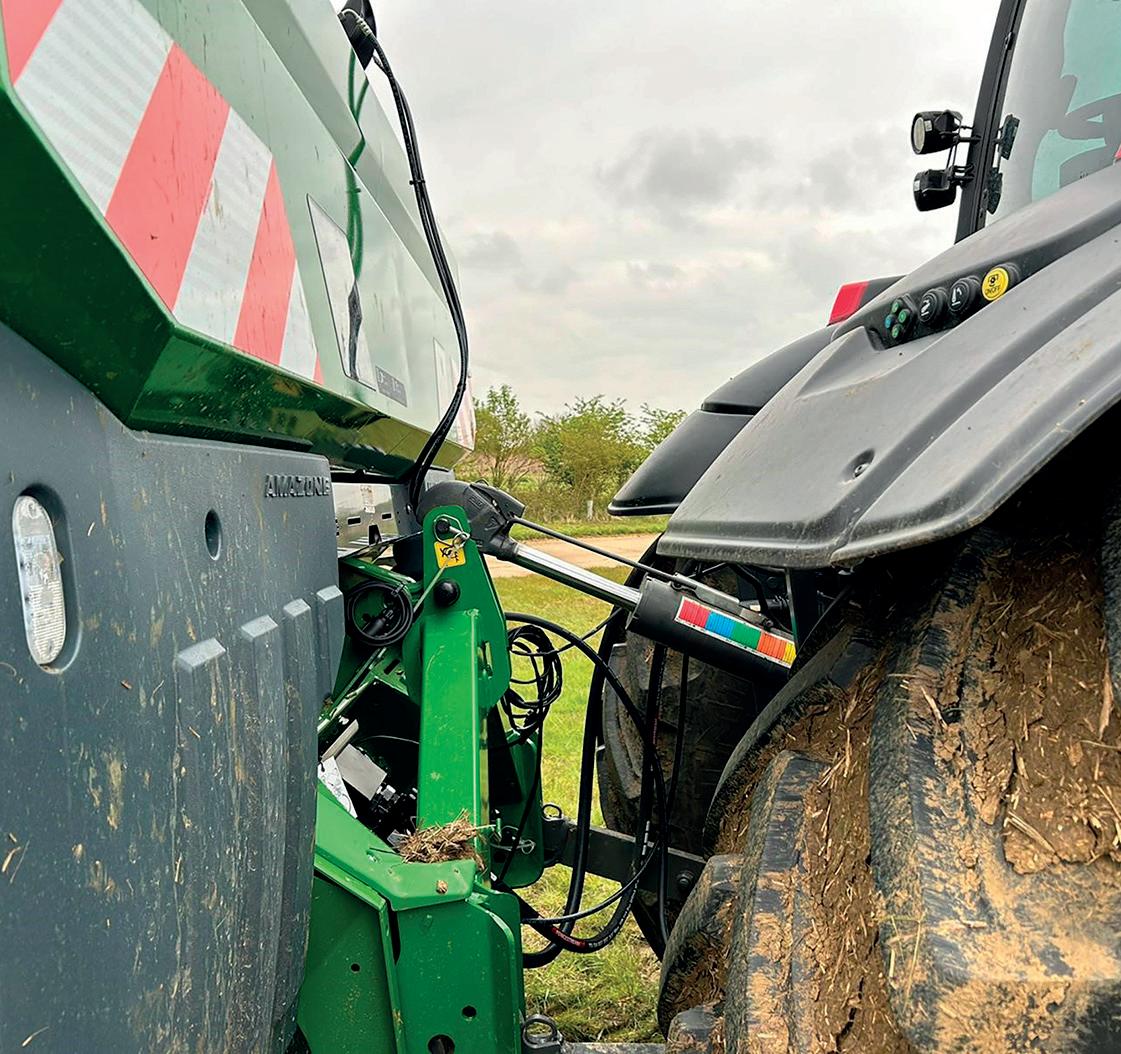
the front and rear of the implement to automatically adjust the pitch of the spreader as it is working.
The sensors measure the height from the field surface and actuate the top link to move the unit forwards or backwards from the tractor.

Control of the fully IsoBus system is through either a separate screen or as an auxiliary page within an IsoBus display. The hydraulic service to adjust the system is provided with a separate valve block and ECU, typically mounted above the rear linkage.
A maximum operation range of +/- 10 degrees is possible. The £4,300 option is available on new machines and will be provided as a retrofit to existing models from late 2024.

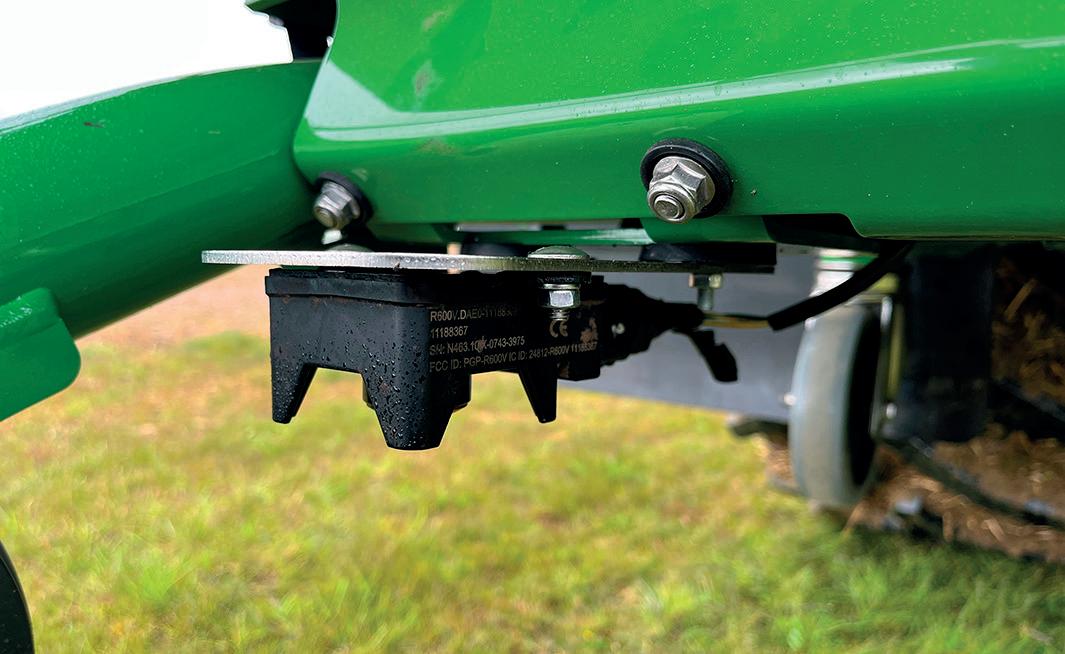








Following the launch of the 300M series late last year at Agritechnica, the UK rollout of John Deere’s new self-propelled sprayer has been long anticipated. James Huyton takes one of the first machines out to find out more.
John Deere is no newcomer to the sprayer market, with a range of both trailed and self-propelled sprayers including the larger R41 series.
Although popular with some loyal customers and the claimed market leader in France, the R41 tool carrier format with its front-mounted engine has rarely been met with significant UK market demand.
In 2017, John Deere acquired
rEngine: 6.8-litre, six-cylinder 225hp DPS
rTank capacity: 4,000 litres
rBoom width: 36 metres
rSpraying pump: 750 litres/ minute
Italian sprayer manufacturer Mazzotti, with an ambition to increase sprayer market reach and provide an opportunity to supply machines into the more popular – and competitive –
rFilling pump: 600 litres/min
rTransmission: Hydrostatic 50kph
rWeight: 9,500kg
rTyre size: 540/65R 38
rPrice as tested: £451,750
mid-engine and forward control cabin self-propelled market.
Following the acquisition, John Deere has set about making several subtle mechanical and cosmetic changes to bring about the 300M series into fruition, after initially offering machines in its original yellow and black Italian livery.
Fundamentally introduced to aid manufacturing, service and support of the machine, John
Deere has incorporated several features into the 300M from existing product lines.
From cabin to spray system, the machine has seen significant changes from its former Mazzotti days.
To find out more about the changes which have been made and how the machine handled itself, Arable Farming had a first drive of one of the initial green and yellow machines to come into the UK market.
Continues over the page.
JF itted with the brand’s PowrSpray system taken from the 700 series trailed sprayer range, the 340M has a filling capacity of 600 litres/min and a maximum spraying output of 750 litres/min.
The 340M provides an operation pressure from 1.0-8.0 bar and carries a
4,000-litre tank alongside a 460-litre rinse tank which can be drawn upon for continuous dilution at the end of applications. This provides the operator with the ability to spray out at a minimal dose rate, with water continually drawn from the clean water tank until empty.









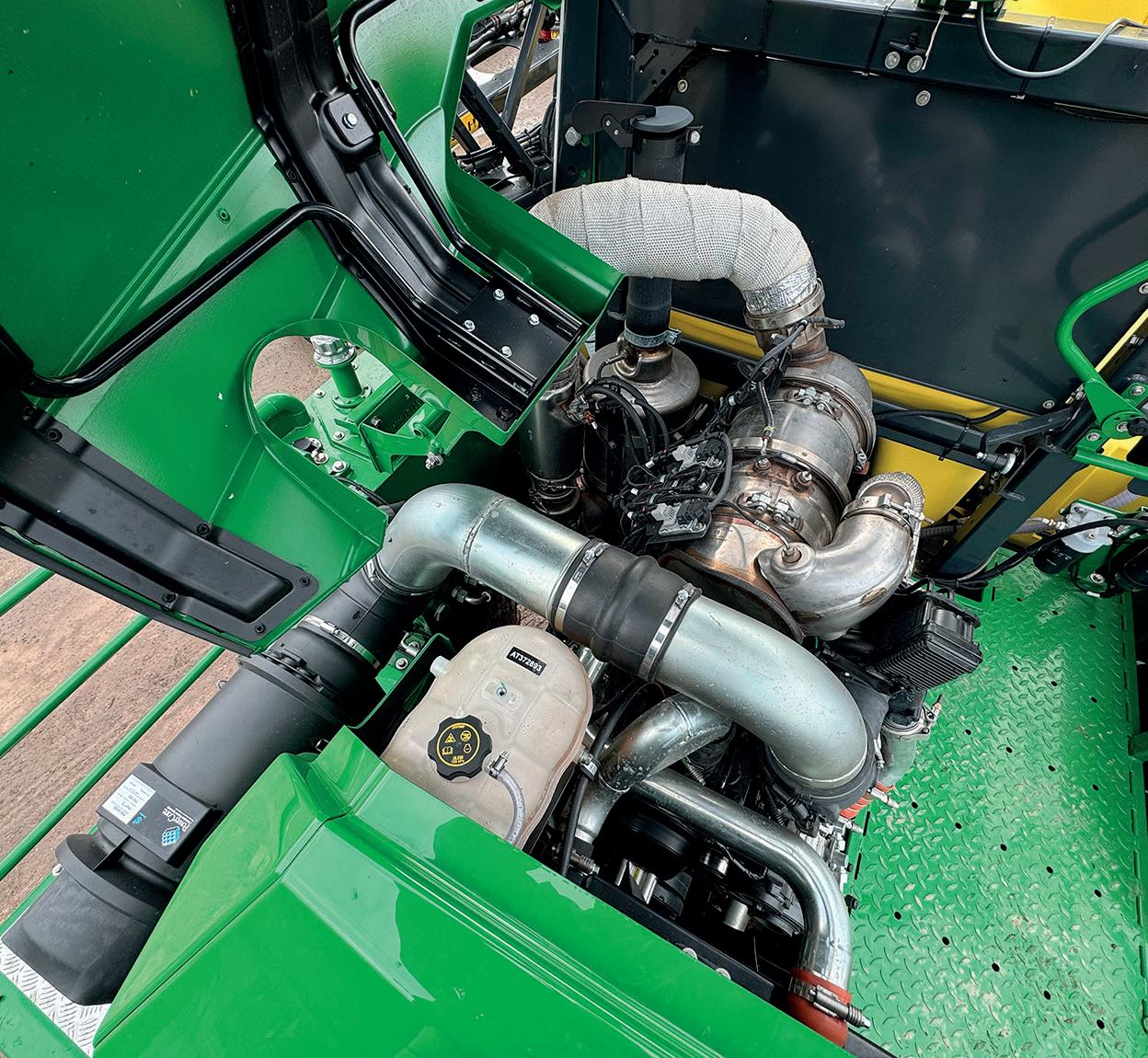
JAs expected, the new series now incorporates an in-house supplied DPS PowerTech engine and driveline.
Fitted in the larger 340M, the 6.8-litre, six-cylinder power plant pushes out 225hp.
Prospective buyers not requiring the power output of a six-cylinder may wish to consider the smaller 332M which incorporates a fourcylinder, 175hp unit.
Running a John Deere power plant also gives users
JThe 340M can be supplied with four working width options of 24, 28, 30 and 36 metres, and the test machine was fitted with the largest 36m design.
the same familiarity and serviceability expected from the tractor ranges.
Access to the engine bay is good with the unit mounted neatly behind the cabin, with a refreshing provision of space around three sides of the engine bay for serviceable access.
The 340M’s 225hp power plant gave the feeling of ample power delivery during our first drive, however, the test farm lacked the rolling hillsides required to truly test a fully laden sprayer’s hillclimbing ability.
JBoth machines in the range use the same cabin, which although a Deere in-house assembly, is normally found fitted to machinery in the South American market place.
The cabin choice gives both distinctive brand styling and incorporates a pitched front windscreen; which many operators will have come to expect on modern selfpropelled sprayers.
Operators also benefit from the fitting of a category four, pressurised filtration system, although visually from the outside it appeared somewhat of an afterthought with the module protruding from the cabin roof.
A benefit of its external location was the inclusion of a significant work platform to the rear of the cabin to allow easy access for filter removal.
Moving the GPS receiver away from the cabin roof to a more central location behind the engine bay also gave improved ease of access for the operator, particularly if required to remove and refit daily.
The cab interior follows a similar formula to other John Deere products, with the feel, fit and finish familiar to other products in the brand’s portfolio.


Incorporating the joystick from the manufacturer’s X9 combine range and the latest G5 touchscreen terminal, provided the operator both an ergonomic and configurable operating experience.


The same engineered assembly of the boom is shared across the whole range with the manufacturer claiming that the use of Domex steel reduces the risk of cracking and bolsters strength along the boom section.
Each of the section’s folding cylinders is fitted with a relief valve which allows oil to circulate from one side of the cylinder to the other.

This is designed to allow a hydraulic break-back of the main boom sections in the instance of a collision.
Sensors along the length of the boom are used to




The sprayer cabin offers good all-round visibility. Inset: The multifunctional joystick is from John Deere’s X9 combine range.
Button positioning on the joystick has an intuitive nature for sprayer control with the test machine supplied with the manufacturer’s latest 10.5inch G5 terminal.
Prospective buyers requiring a larger screen area can also optionally specify the 12.1in touch-screen terminal.
Linked with JD’s operation centre, farm businesses can set a job sheet in the office before going to the field.
The machine will then register its locality to the field

and request if the operator wishes to carry out the task. Completed jobs can then be recorded through the G5 terminal with the information transferred back to the office for record-keeping purposes. Precision options for variable rate spraying can also be activated through the G5 display.
maintain the working height from the crop canopy and allow concave and convex boom control on undulating terrains.
The system also compensates for bare ground by preventing the boom from diving. Nozzle bodies are mounted within the boom section to reduce the risk of damage.




Compact and manoeuvrable, with fully integrated suspension
• 3,200 and 4,100 litre tank options and 18 to 38 metre boom widths
• EQUILIBRA boom suspension system

• Precision spray system with smart nozzle technology
• Ensures accurate application over a range of operating speeds simply by setting droplet size and dose

JThe 340M is fitted with Poclain MHP11 hydraulic drive motors mounted within each wheel hub which provide the option of 40 or 50kph road speeds.
Inside the cabin, the twostage gate on the joystick gives control of both forward and reverse.
The hydrostatic transmission gave smooth engagement of travel in both forward and reverse with a toggle on the armrest allowing the operator to set a maximum forward speed for field operation.
Multi-plate brakes are fitted to the front drive motors for braking, with the wheel motors also providing
transmission breaking downhill, which provides an operator experience similar to engine braking.
Set in Eco mode for transport work, the 340M operated comfortably at 1,750rpm, with field operations running at about 1,900rpm.
Operators can also program the 340M for speed-related four-wheel steer. The test machine used hydraulic track width adjustments with three spacer ranges of 1,5001,800mm, 1,800-2,250mm, and 2,250mm-3,000mm.
Operators wishing to make regular track width adjustments may consider the optional automated track width adjustment system.

JReleasing the left-hand side panel reveals the sprayer filling area.
Rather than a spring-loaded system, the 340M makes use of an electrically-driven hydraulic cylinder to lower the induction bowl to filling height.
The 50-litre induction bowl presented a good operating height and size for filling.


One of four high performance, Poclain MHP11 hydraulic drive motors to each wheel.
Traditionally, sprayer manufacturers opted for a system of cascading water to clear chemical residue in the induction bowl.
With the 300M, a series of jets line the induction bowl for a more thorough clean and chemical induction.
Full operator functionality is linked back to the cabin terminal through the filling station’s touchpad allowing the operator to select product
JWith an unladen weight of 9,500kg, the 340M is less than compact, but its 50-50 weight distribution did help spread its in-field mass.
Integrating the same tried and tested PowrSpray system used on the 700 series trailed sprayers does give some reliability and capability to a relative newcomer on the UK market.
Incorporation of the manufacturer’s onboard precision farming technology gives brand familiarity to the
340M, with many operators accustomed to John Deere’s operating systems.
The G5 terminal offered the operator a clear and configurable display to set and run spraying operations.
The arrangement also allowed the operator to adjust and tune sectional control and individual nozzle shut-off while operating.
Linking with transferable information to the filling station gave the operator the ability to view and set automated filling volumes from the cabin.
The use of the joystick from the X9 combine provided ergonomic functionality, with the cabin also offering a forward seating position with good visibility along the length of the boom.
The 300M series has been positioned to offer direct competition to some very well-established rivals, many of which are UK-built with highly regarded levels of manufacturer service support.
Lowered with an electro-hydraulic ram, the 50-litre induction hopper allows easy access when filling.

induction quantity and circulation. For dusk or nighttime filling, the station also incorporates a LED work light.
The induction circuit’s active pause system allows operators to stop water filling while continuing to fill products through the induction hopper.
A toggle for throttle control allows engine rpm adjustment at the filling station alongside a dead-man switch to stop the engine if needed.
Alongside the induction hose couplings mounted at the filling station, the tested machine also carried a fully electrically retractable filling hose and filter to the rear of the machine, allowing further filling opportunities with portable bowser systems.
Where the 300M could find a niche in this increasingly tight marketplace may be through its integration of technology and data software.
Functionally, the sprayer draws from some established pedigree. The seamless option to create, record and transfer data into the wider – and very capable – John Deere precision farming system will certainly be an attractive feature, particularly for those carrying out contract applications.
With more than 150 years of experience in the industry, you can rely on our award-winning team of journalists and editors to provide the latest news, views and insights from all aspects of arable farming. Written by farmers for farmers, featuring everything from agronomy to grain markets and agri-tech to environmental management.


Ash Ellwood | Arable technical specialist
I have been working in the arable industry for six years after graduating with a first-class honours degree in agricultural business in 2018. Before working within arable journalism, I taught various arable modules – crop production, crop handling and storage and forage crops alongside others – to agricultural students at Reaseheath College. My husband and I live and work on his family beef farm in Cheshire, where we are looking to incorporate a forage-based rotation to counteract rising feed costs. My arable interests are focused on the complexities of soil health and nutrition. I thoroughly enjoy the continuous learning experience that comes with agricultural journalism, gaining knowledge when speaking with growers and researchers in this fast-paced and exciting industry.


Toby Whatley | Head of machinery and farm technology
I have more than 20 years experience in the ag machinery sector. I started with a major brand tractor dealer, carrying out basic workshop tasks. I then studied agricultural engineering at Harper Adams University and worked in machinery manufacturing, sales and product support. Through working with crop protection machinery, I completed a BASIS foundation in agronomy. Pre-Covid-19 we have operated a farm-based diversification producing spelt flour and other heritage grains for artisan bakers and directly to consumers through an event catering business. My arable interests are focusing on wider rotations and incorporating alternative crops to be used as additional income streams through new markets, while utilising existing machinery and assets to improve the financial risk and sustainability of businesses.

James Huyton | Machinery and farm technology specialist

I began my career as an arable farmer in the North West, with an interest in soil management and farm resilience, which is something I focused on during my agriculture degree. I was awarded both the Duchy of Lancaster Scholarship and the British Soil Science Society awards for work looking into soil compaction. In 2021 I was accepted onto the NFU’s Cereals Development Programme, aimed at developing the next generation of decision-makers to gain further insights. Following the programme, I now take a regional seat on the NFU North Combinable Crops Board. I currently write professionally about farm machinery and continue to grow my knowledge and links through events and manufacturing connections.


Teresa Rush | Arable journalist
Based in Suffolk, I have been writing about arable farming and field vegetable production for more than 35 years. I am a former editor of Arable Farming magazine and now work as a freelance journalist and technical writer, specialising in agronomy, crop science and the farmed environment. I am currently a member of the British Beet Research Organisation stakeholder committee, a member of the Institute of Agricultural Management and the British Guild of Agricultural Journalists.
Rob Beaumont | Arable journalist

I started working full-time on the family arable farm in 2007 after completing an undergraduate degree at Aberystwyth University. I grew the business, alongside family, to expand the contracting enterprises and increased the farmed area. In 2020 I became a joint host of the AHDB Cereals and Oilseeds monitor farm for Herefordshire. In 2021 I joined Edaphos as a part-time agronomist and I am currently a Worcestershire representative on the NFU Midlands Combinable Crops Board. Qualifications include a 2011 post-graduate diploma in sustainable agriculture at Harper Adams University, a 2017 BASIS certificate in crop protection and 2022 FACTS Qualified PA1, 2 and 6 certificates.


Jane Carley | Arable journalist
I started out as assistant editor of Farm Contractor in 1996 (I was on the Royal Show exhibition sales team before that). I was also a news editor at Horse and Hound between 2000-2003, editor at Farm Contractor 2000-2007 and I have been a freelancer ever since then. I offer editorial PR services to agricultural, ground-care and equestrian businesses, with a special interest in technology and robotics. Winner of the British Guild of Agricultural Journalists’ Omnia Precision Farming Award in 2021 and 2023 and winner of the Institute of Agricultural Management Award in 2023.

Cedric Porter | Arable journalist
I grew up on a mixed arable and dairy farm in Hampshire, but knew I would not make a good farmer. I studied agriculture at Shuttleworth College and then journalism in Portsmouth before becoming a business writer on Farming News. I then moved to the Netherlands to edit Meat International, returning to be the launch editor of Farm Business, a magazine that highlighted farming’s role in the food chain. For the past 15 years, I have combined writing business stories for Farmers Guardian, Arable Farming and Dairy Farmer with editing my own newsletter, World Potato Markets. I am also the vice-chair of Leaf, a director of a Norfolk farming estate and a member of the Government-appointed Trade and Agriculture Commission, which scrutinises post-Brexit trade deals. I love the diversity of my job, examining how global political and weather events impact crop production, something which is so important to us all and not just farmers.


Martin Rickatson | Arable journalist
I spent my youth working on my grandfather’s arable farm in north Hertfordshire and took a degree in farm management at Wye College. After graduation I travelled to work on farms in New Zealand, before taking up agricultural marketing for companies in the agchem and seed sectors. In the 2000s I then took on roles as arable editor at Farming News and deputy editor at Profi International. For the past 15 years I have been a freelance arable and machinery writer.

to gain any advantage over black-grass after years of stalemate.
you make delayed drilling a priority, choose a competitive, fast-growing variety, and include Luximo® as part of your IPM strategy. Our crops are cleaner than I’ve ever seen. I’m blown away by what
